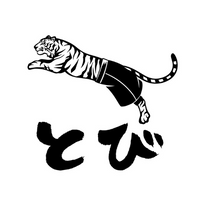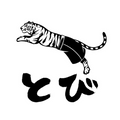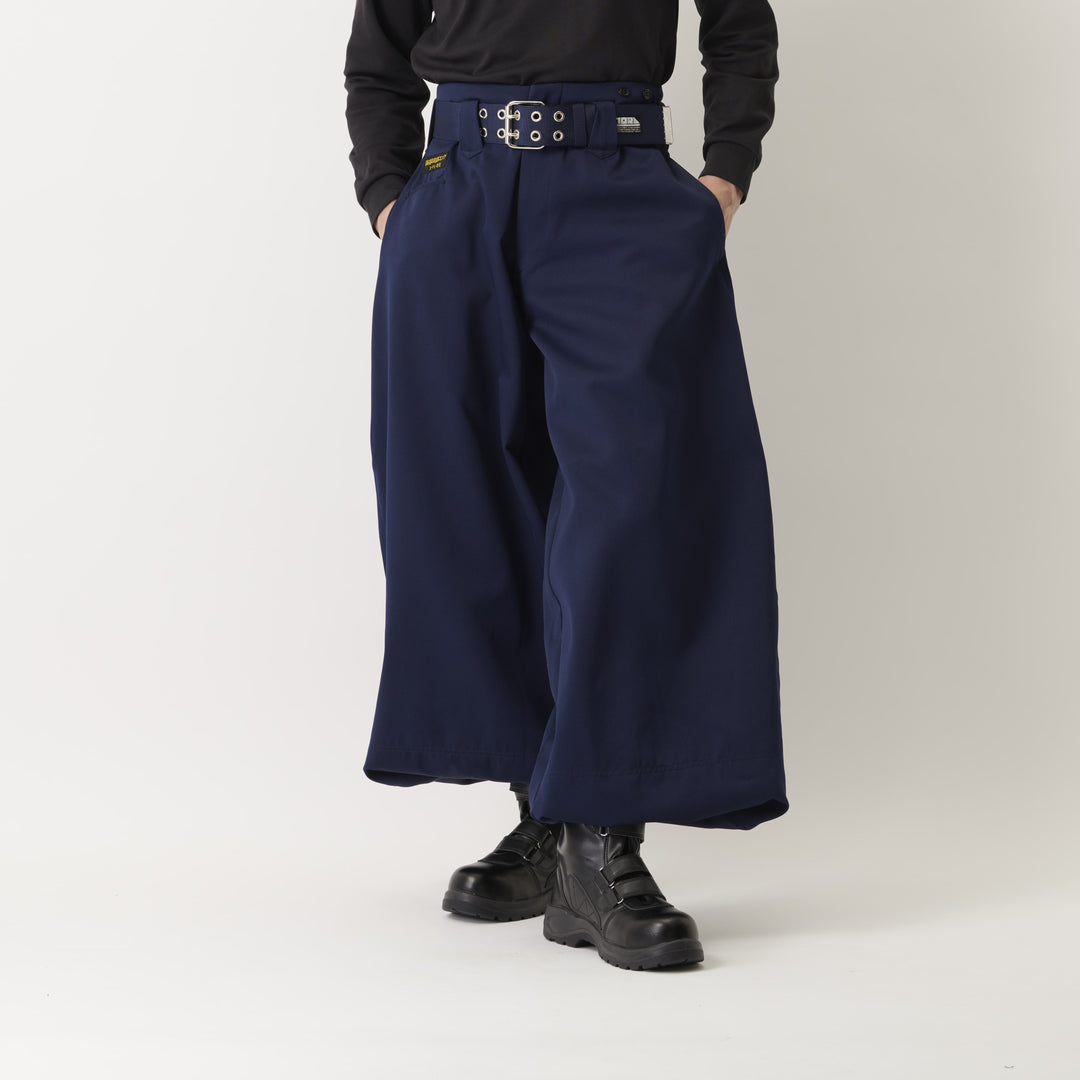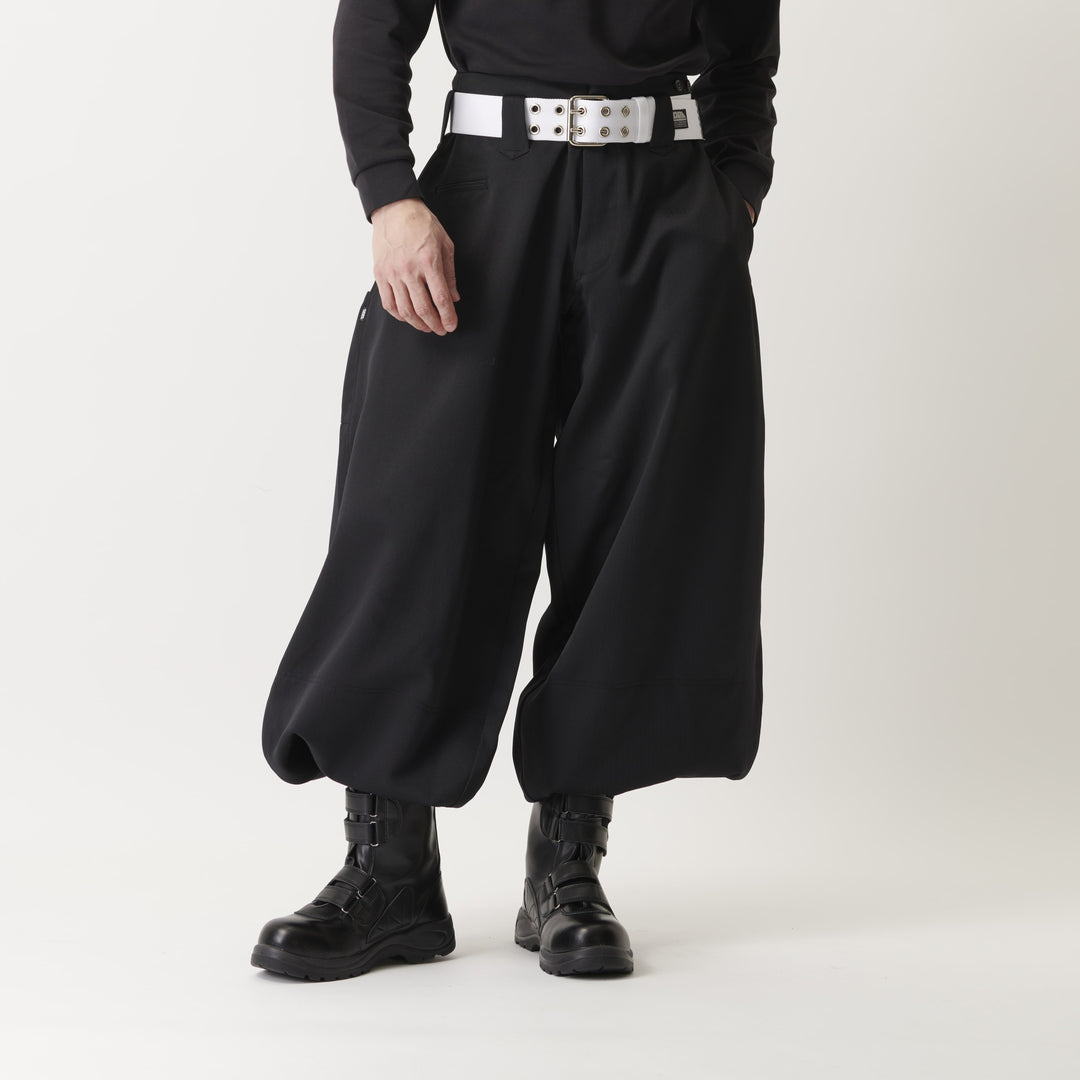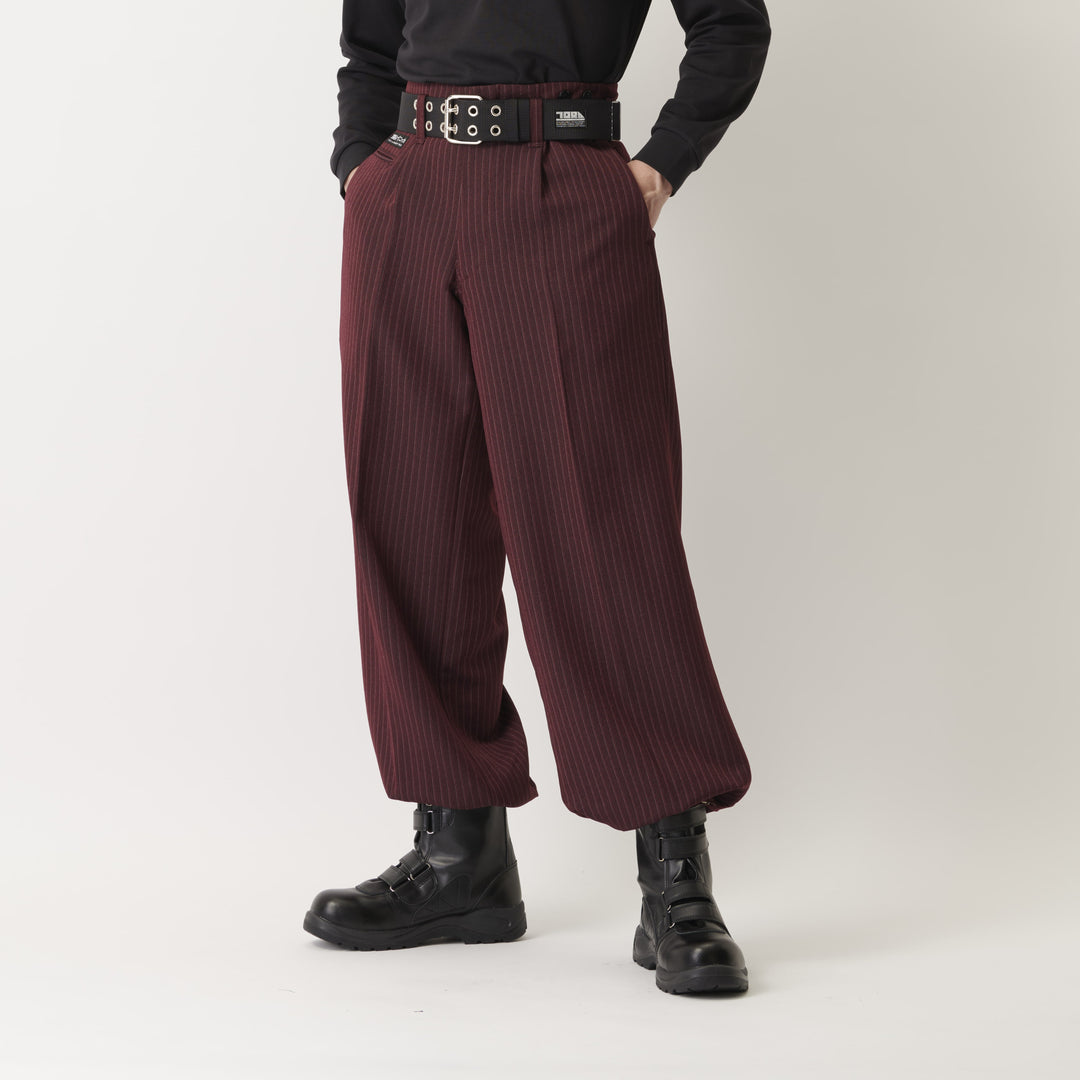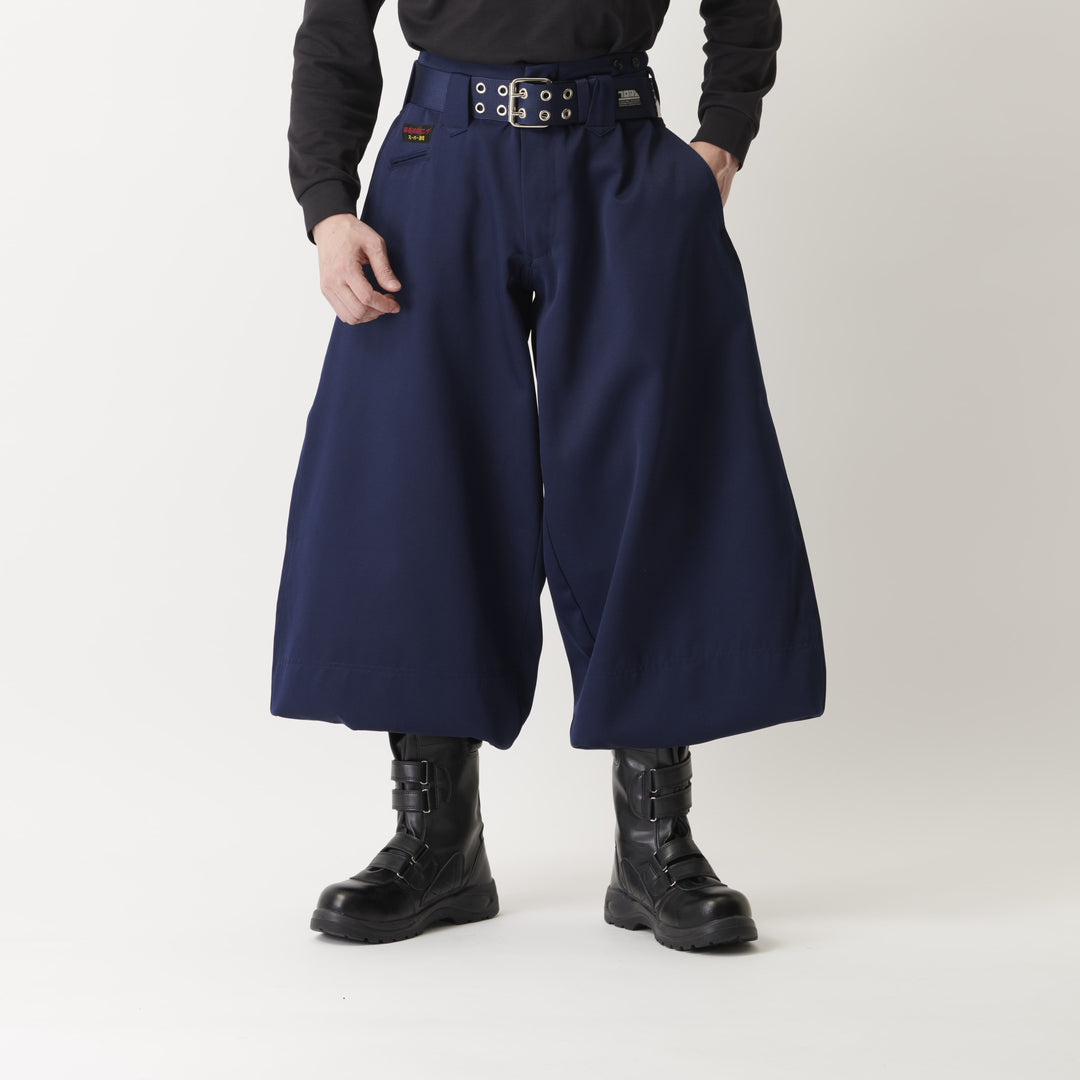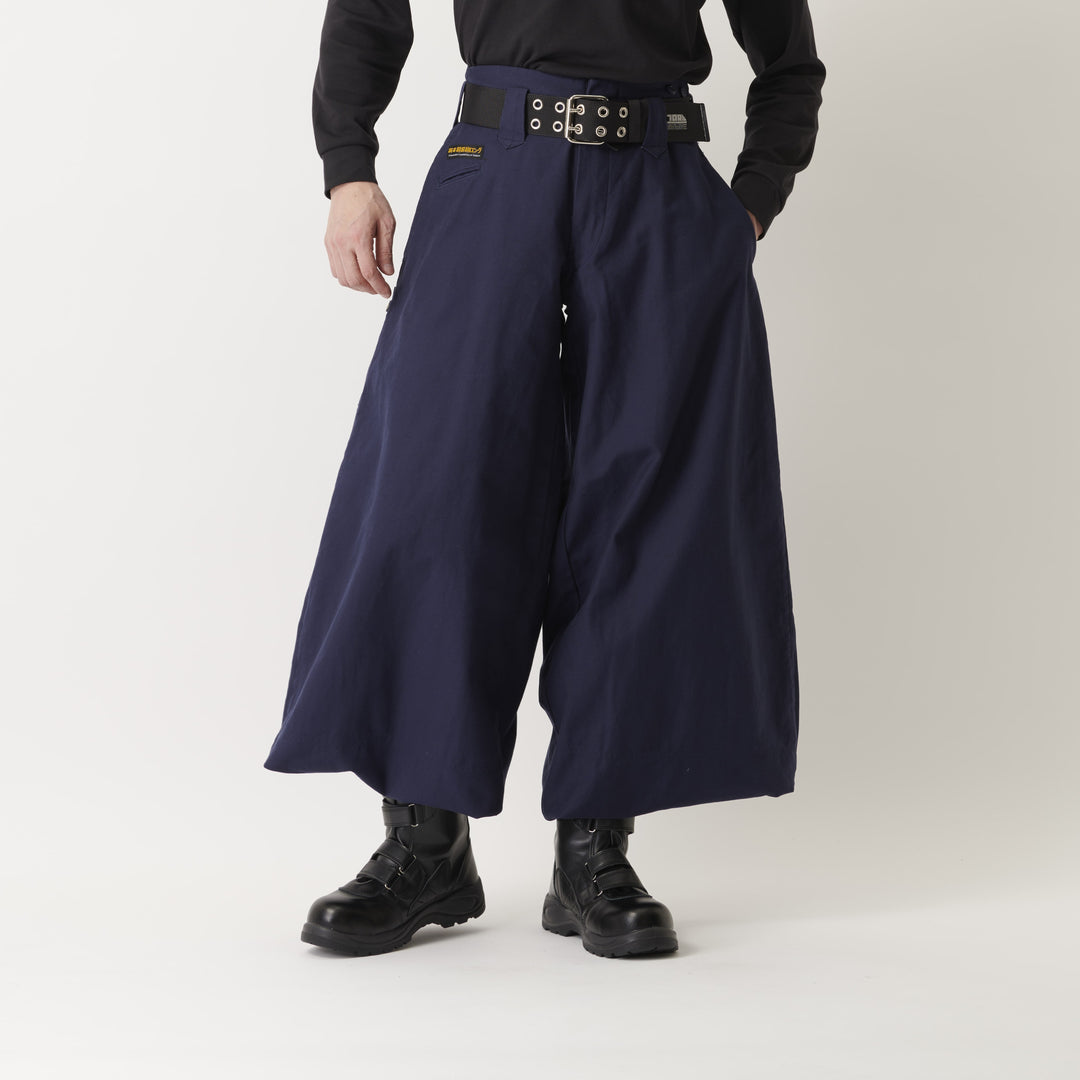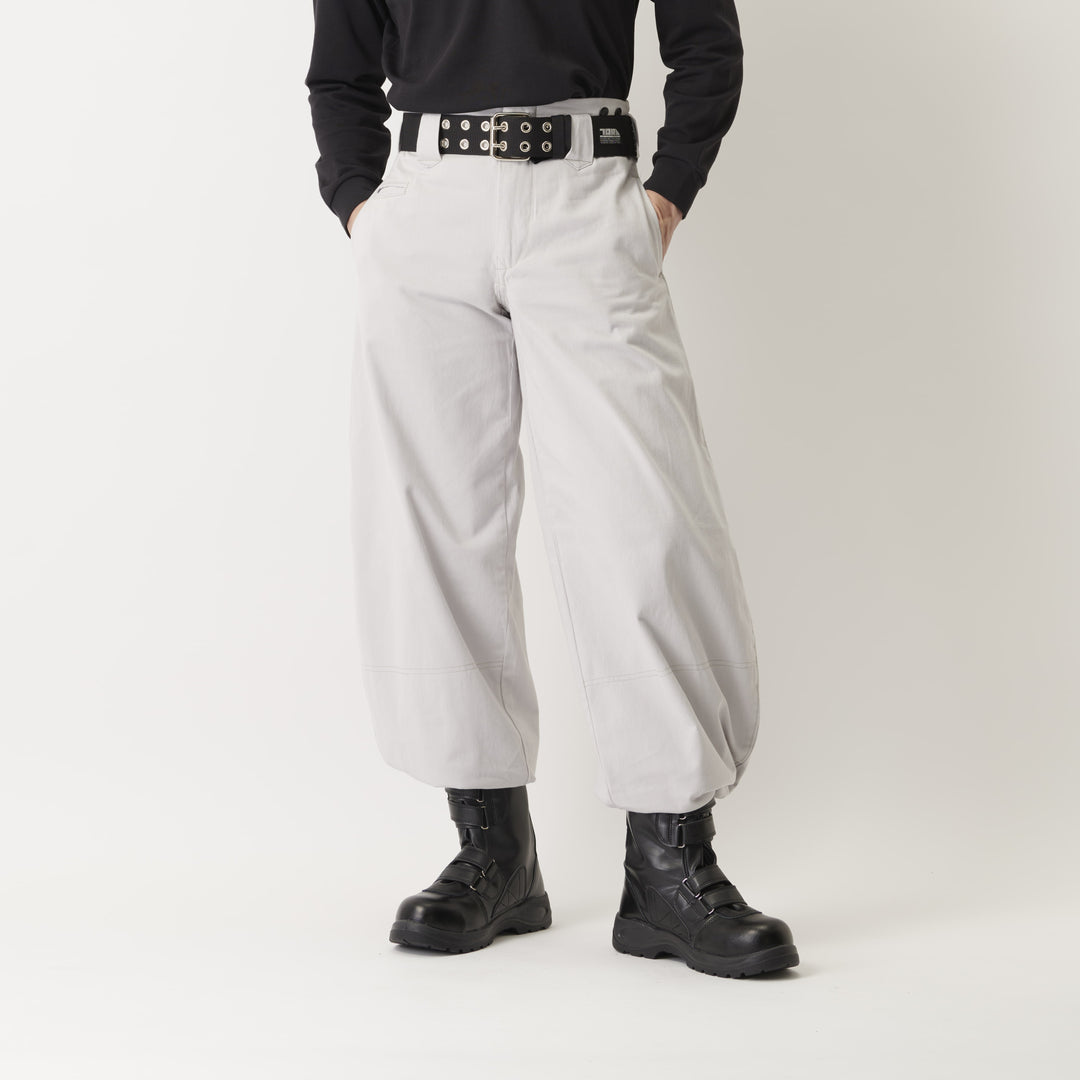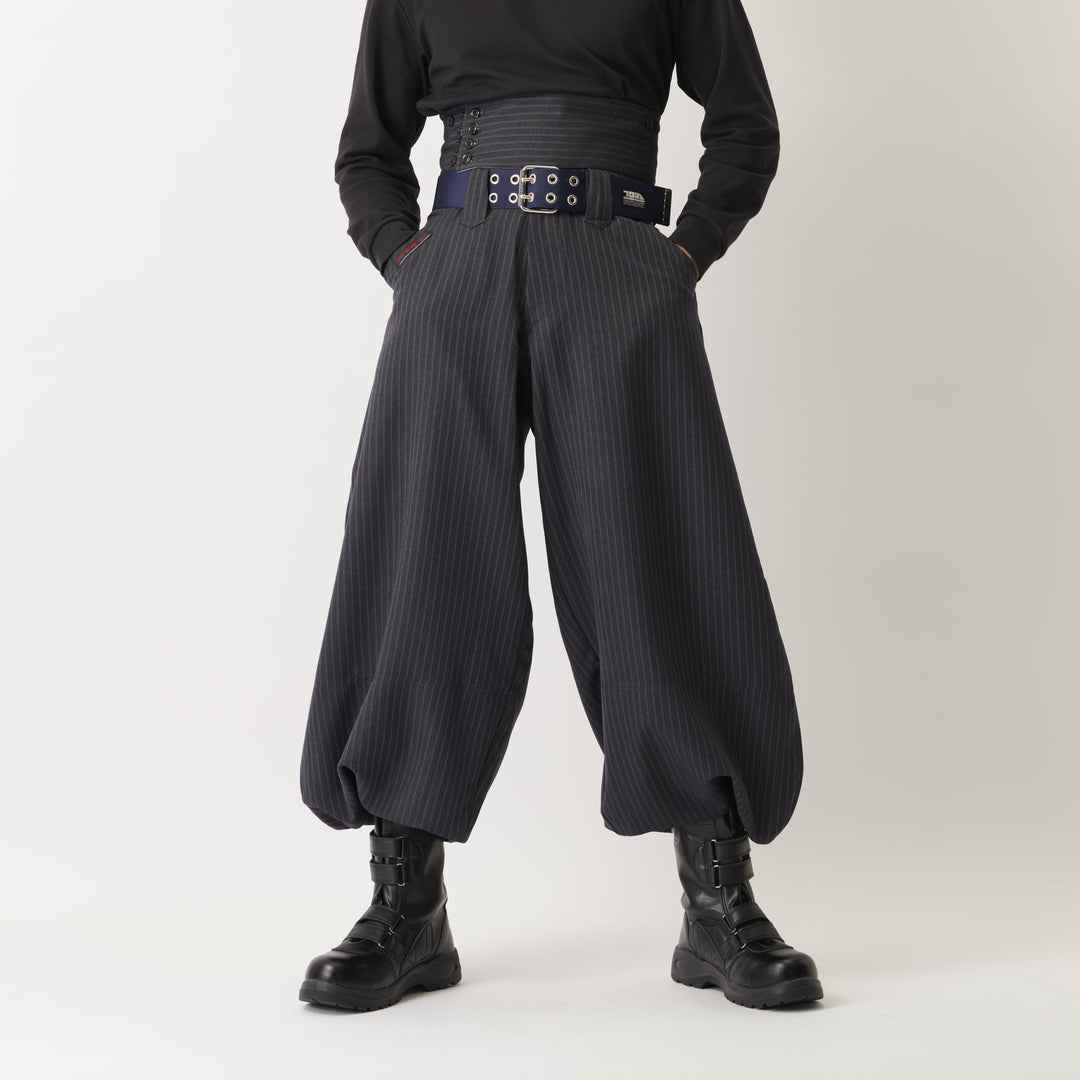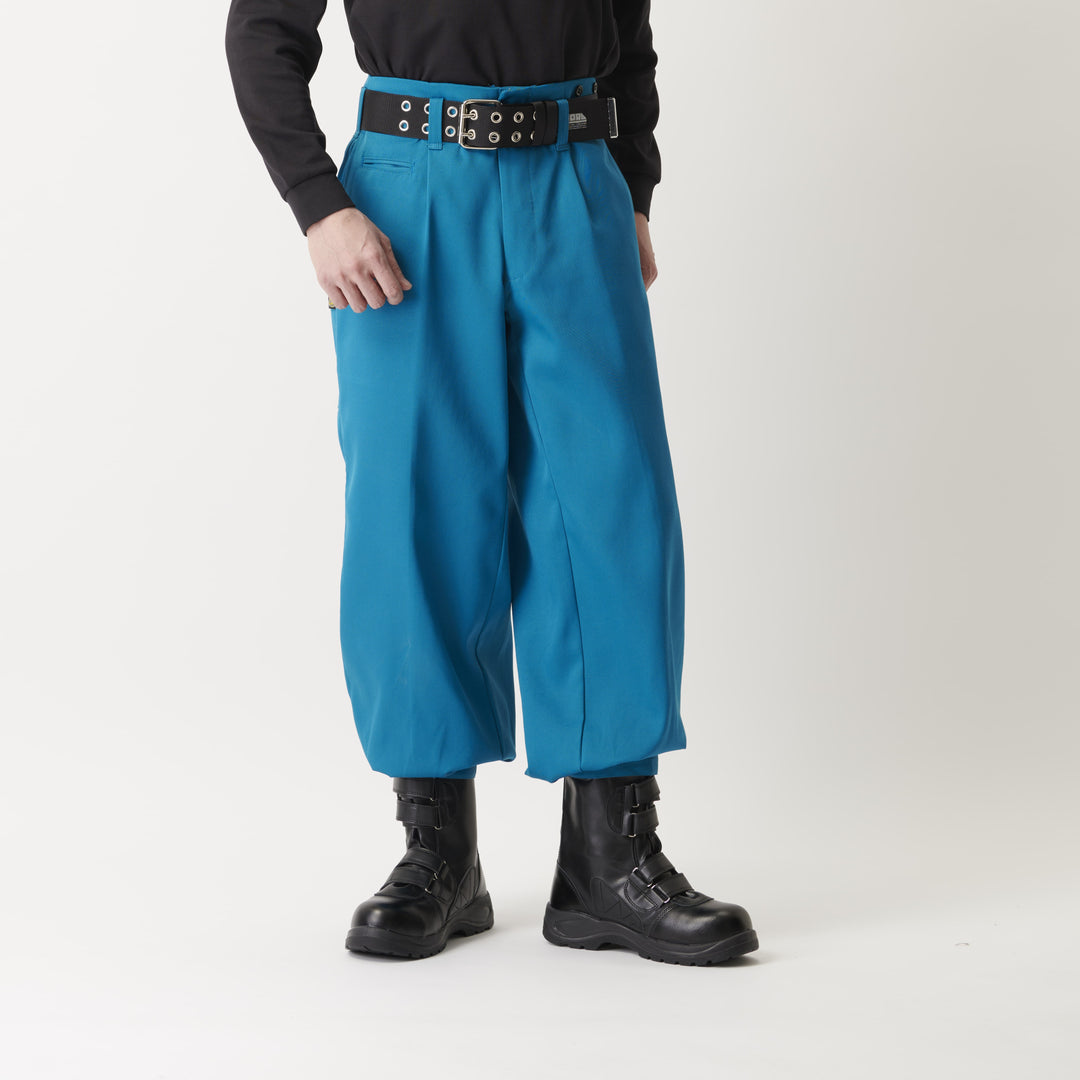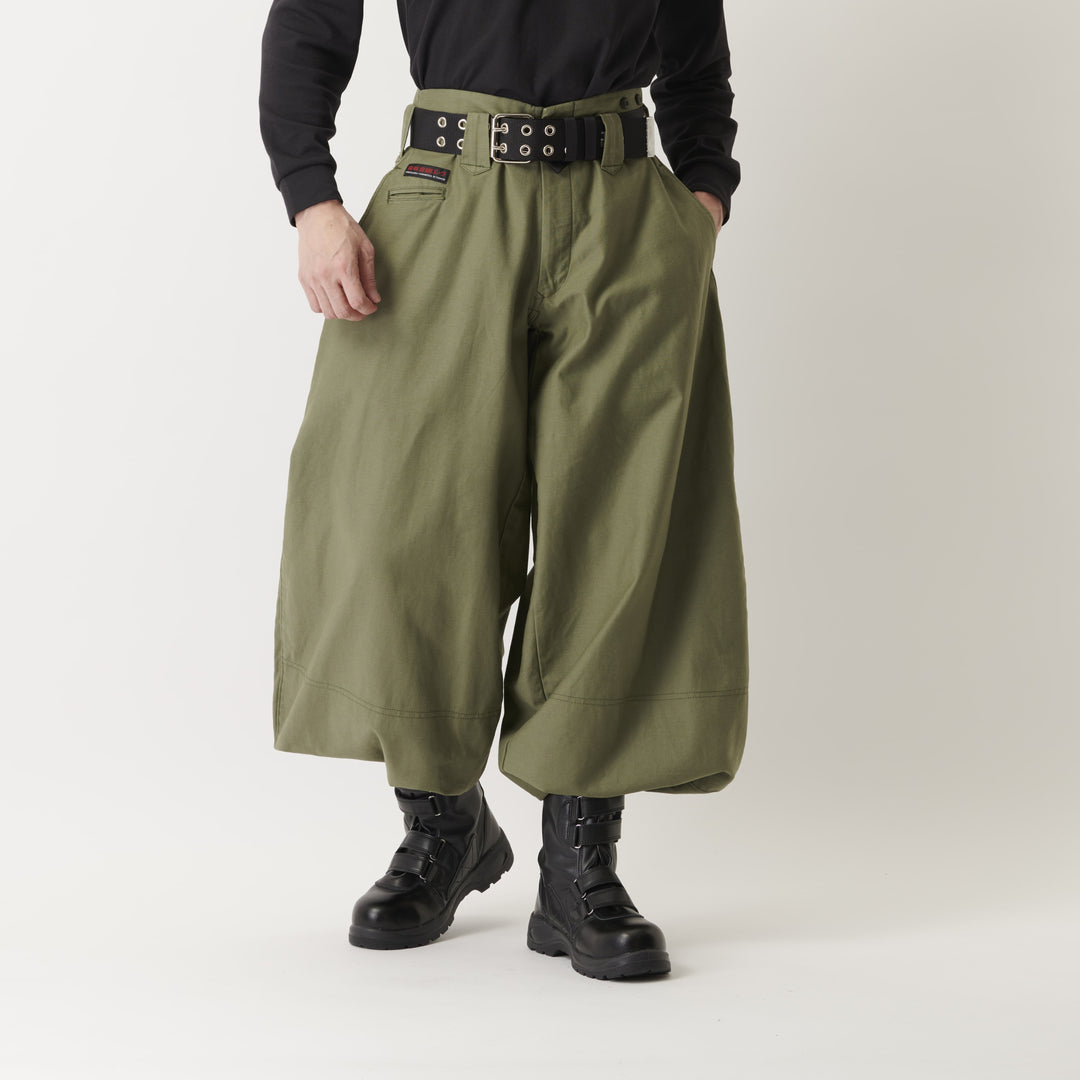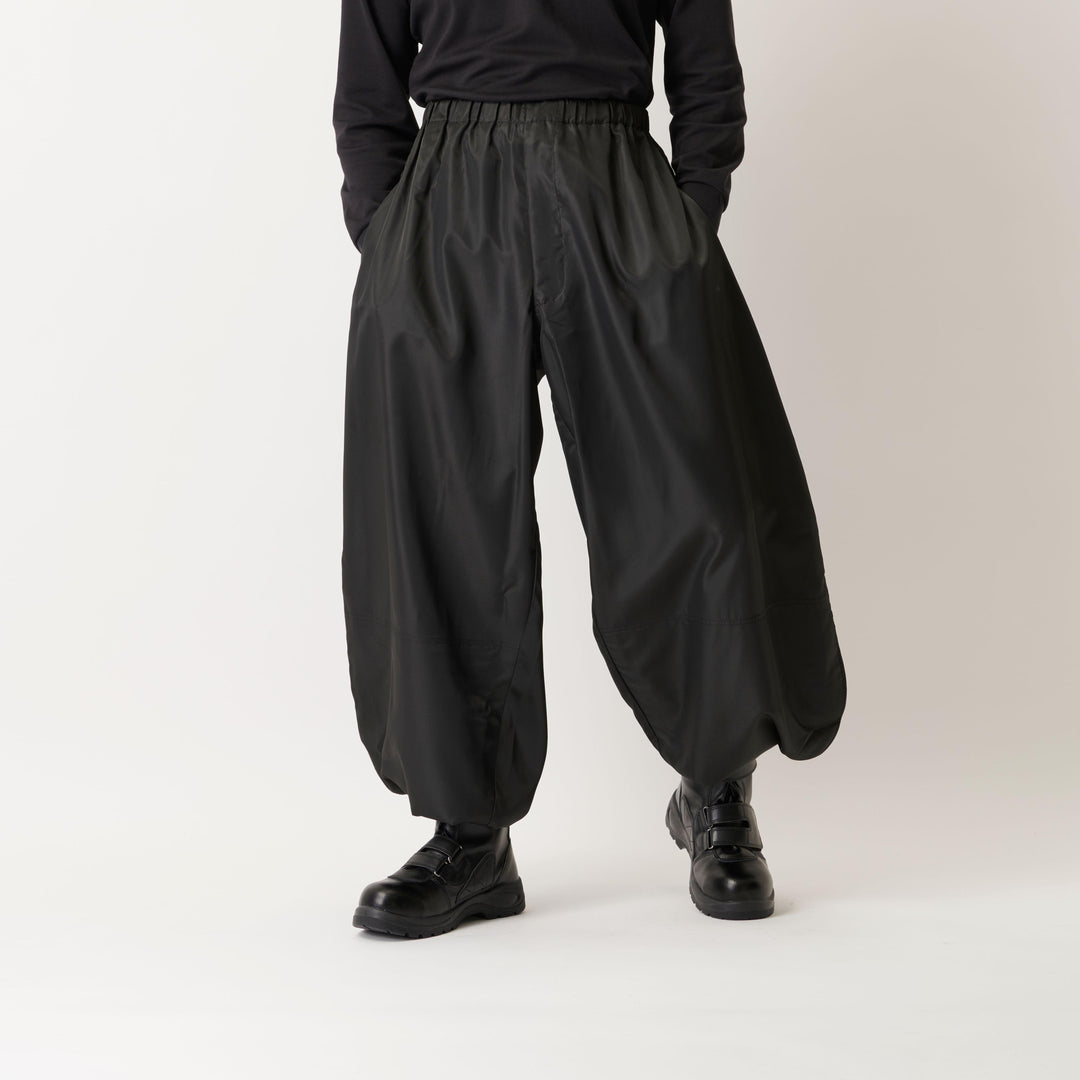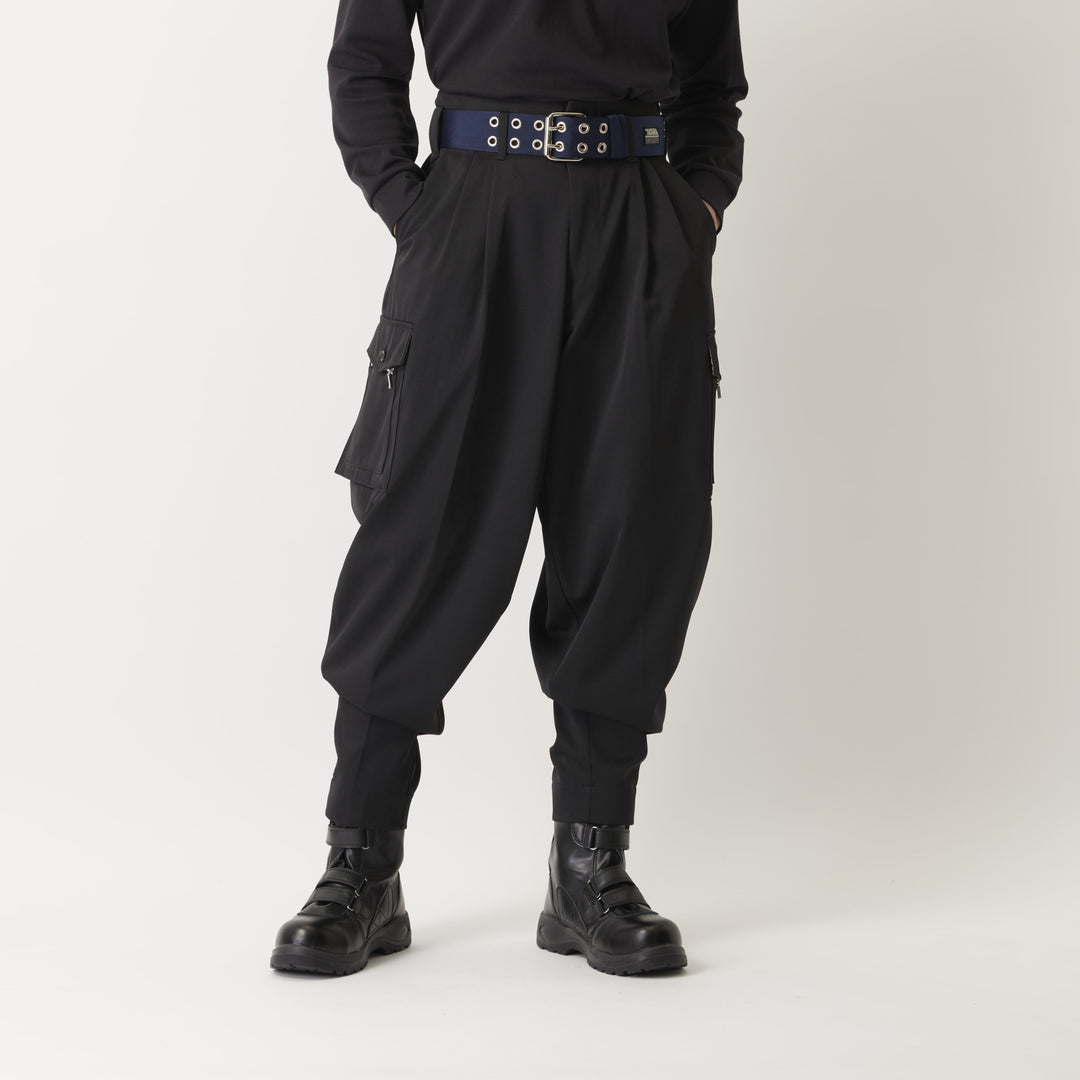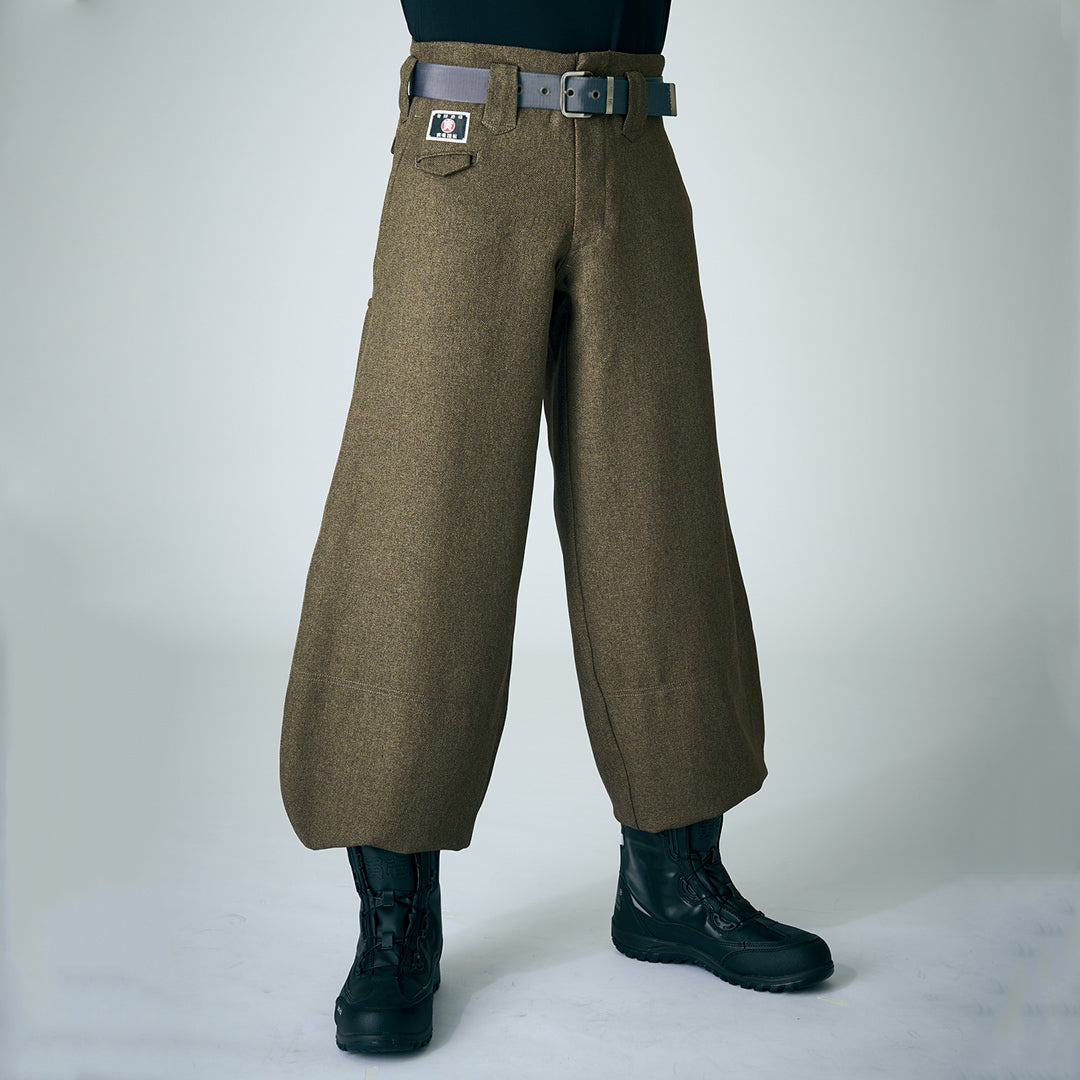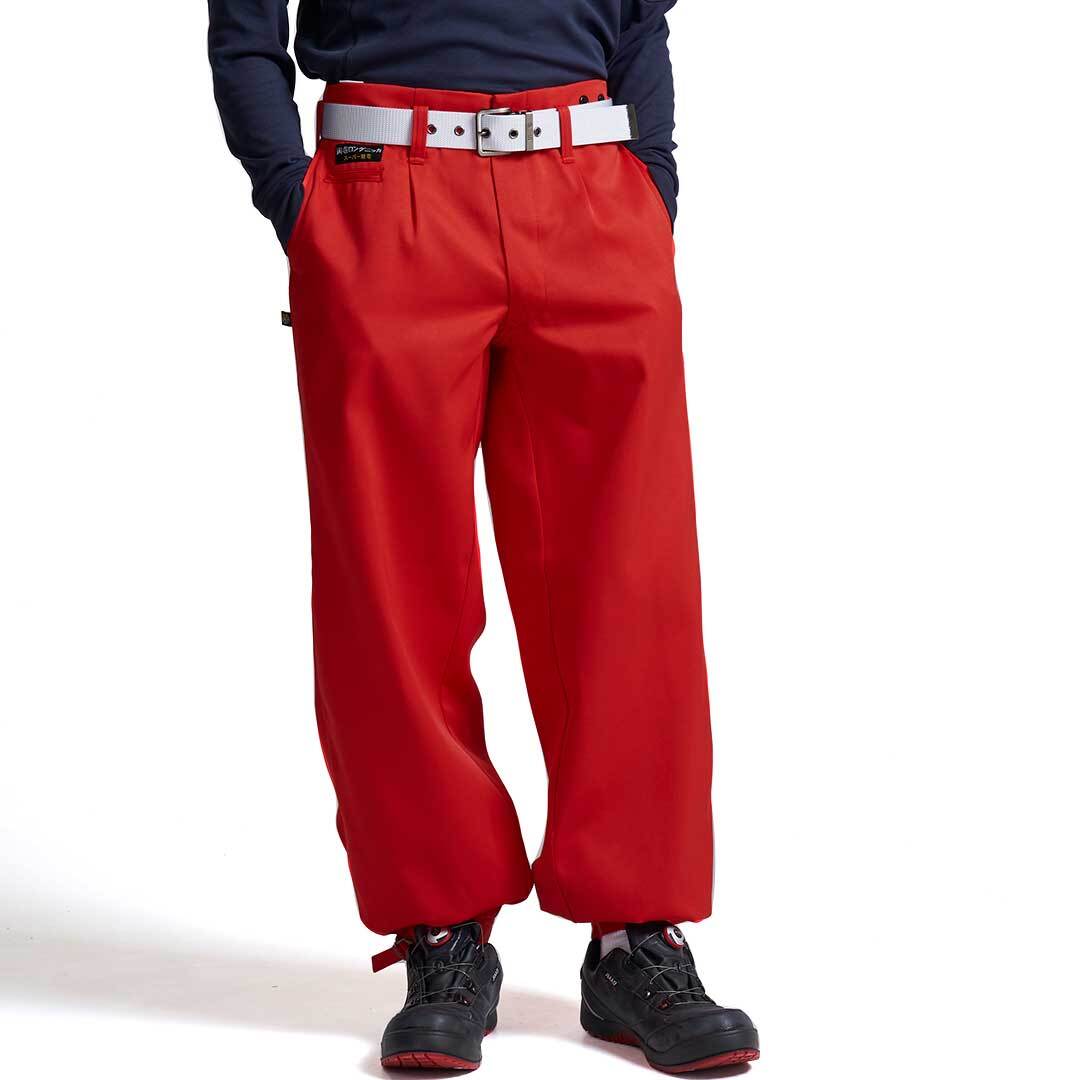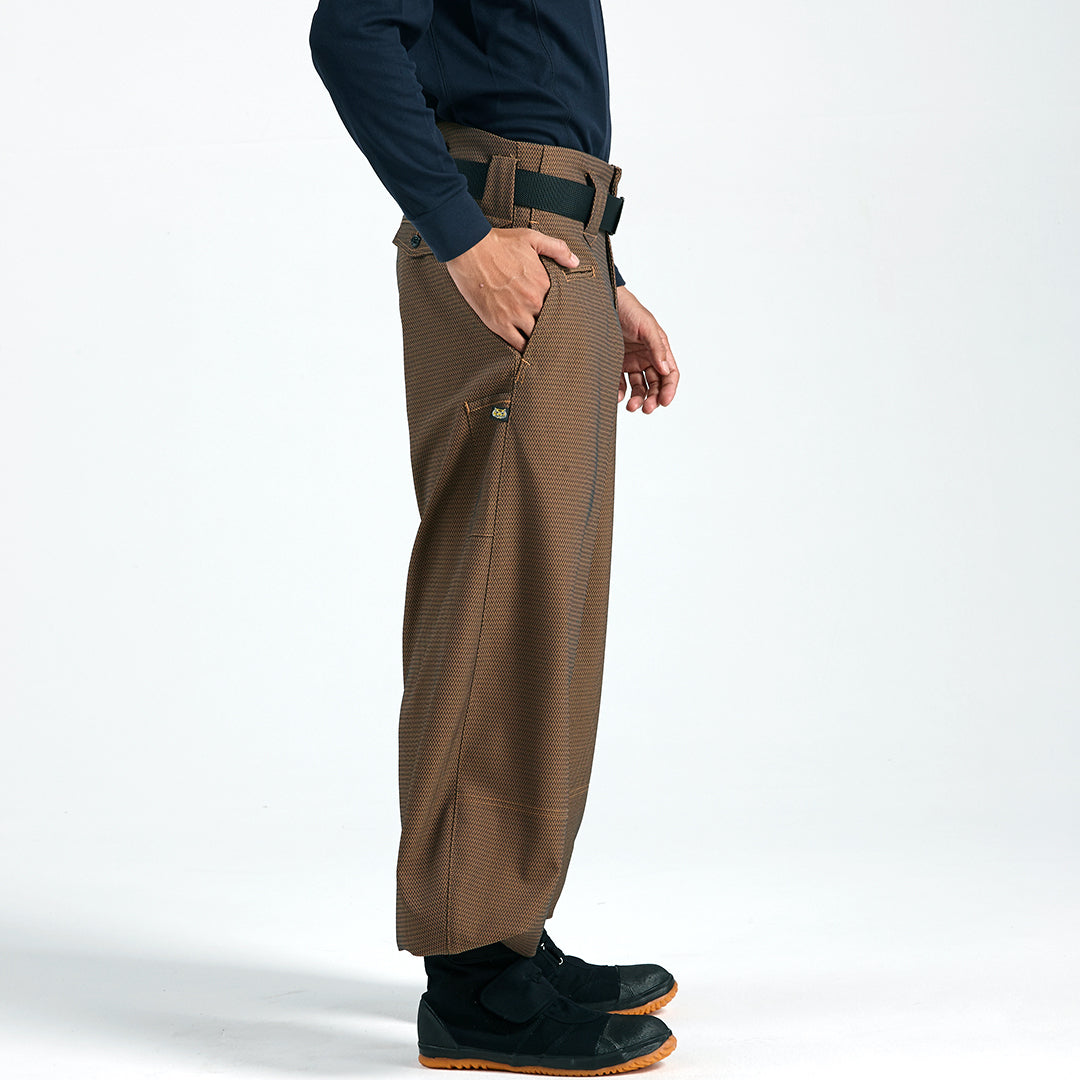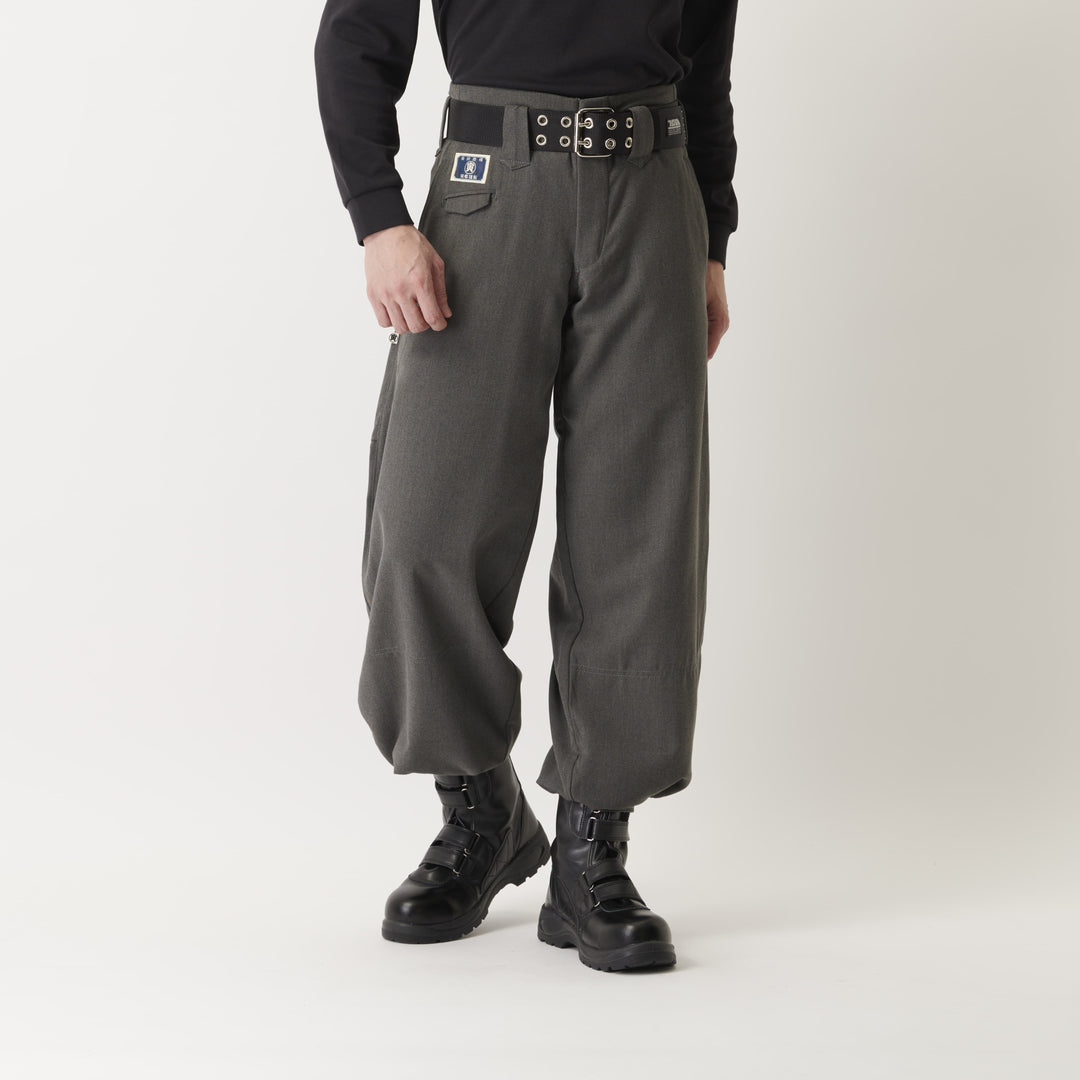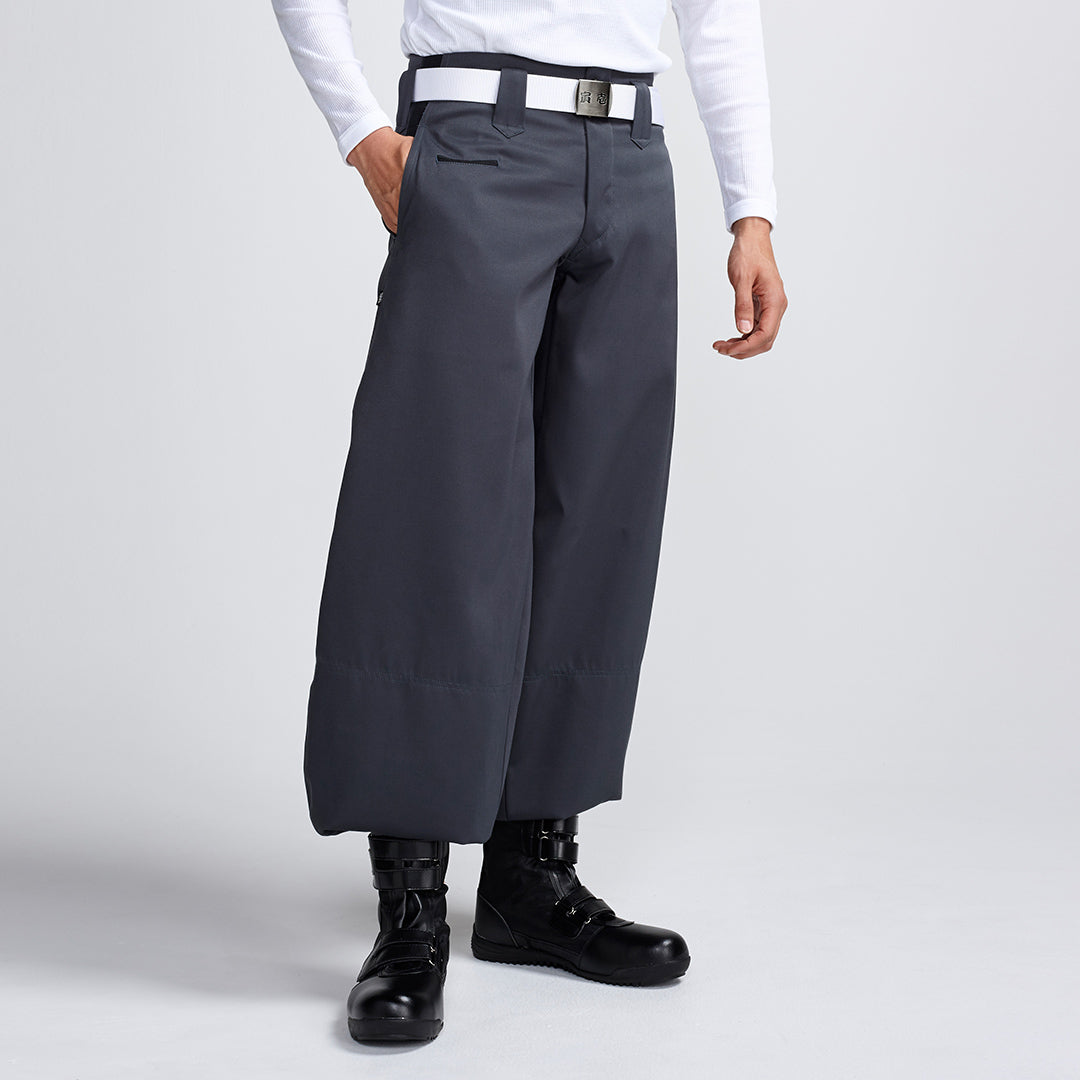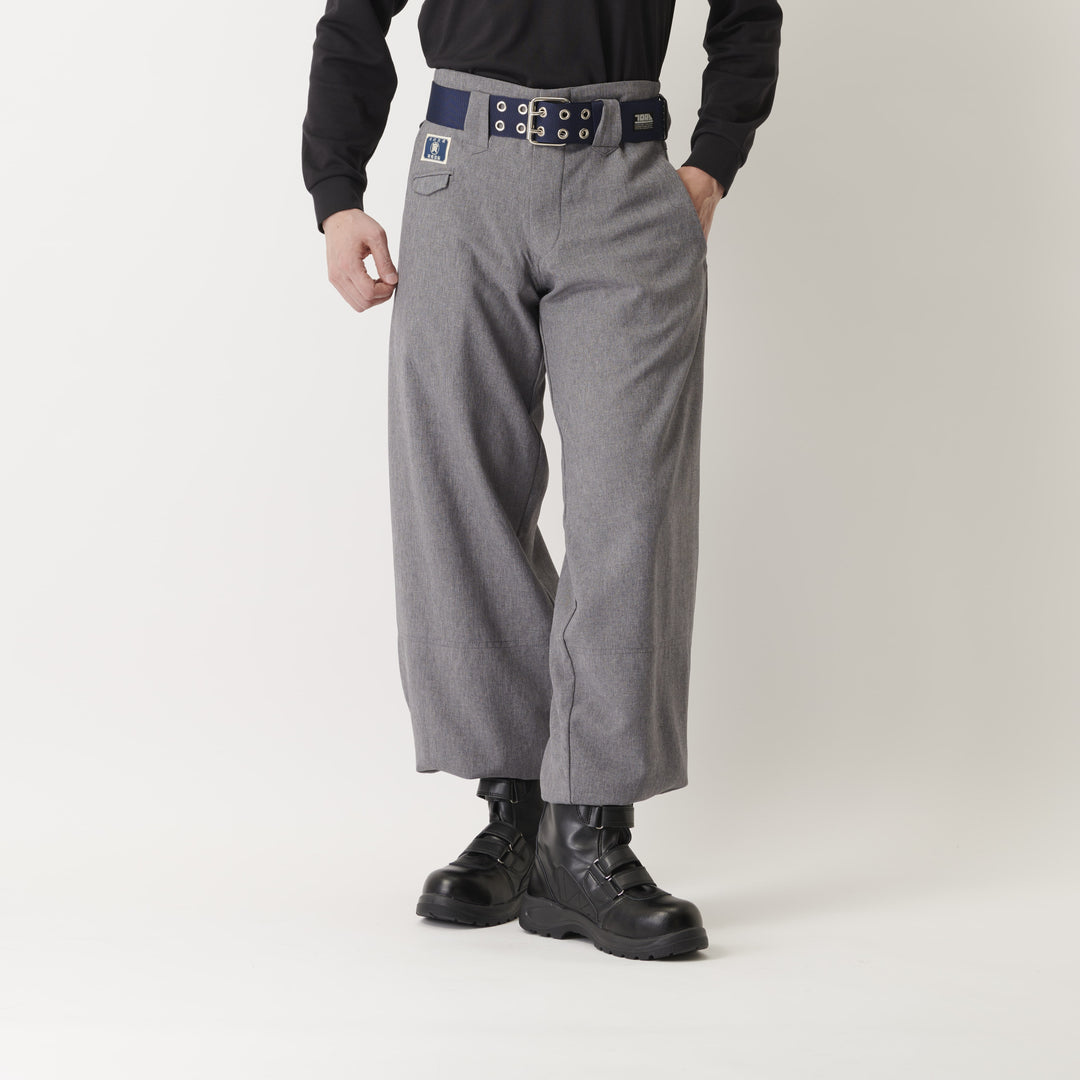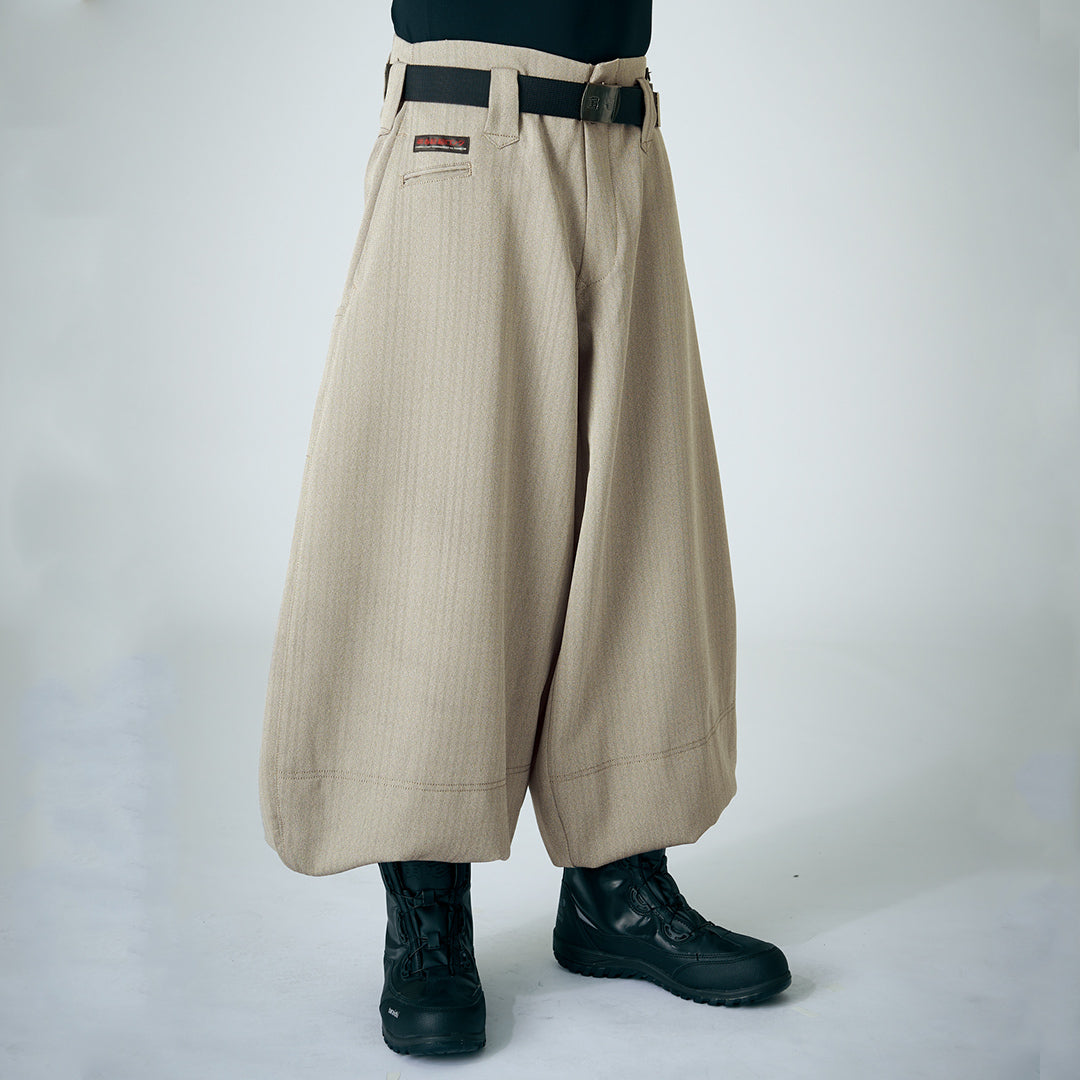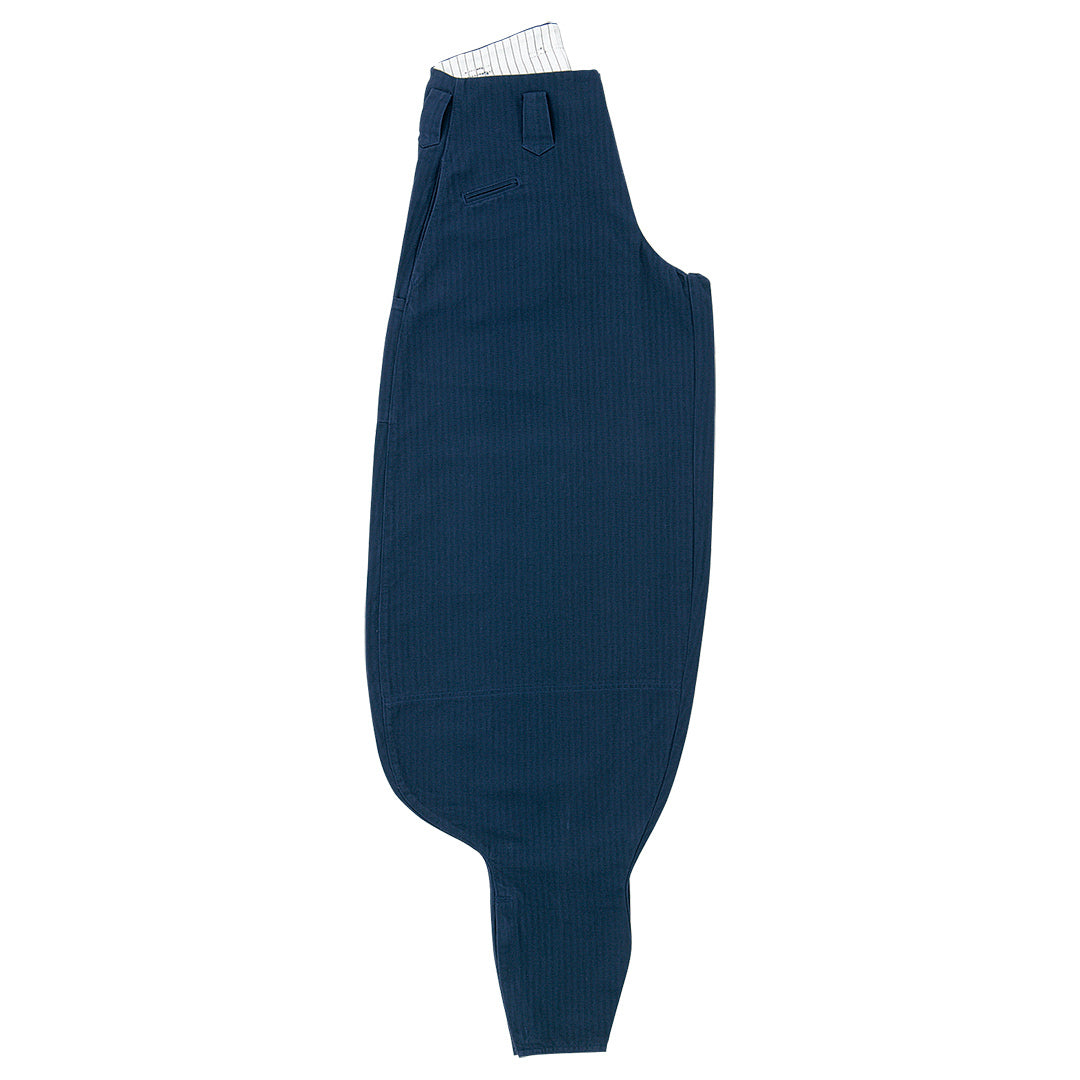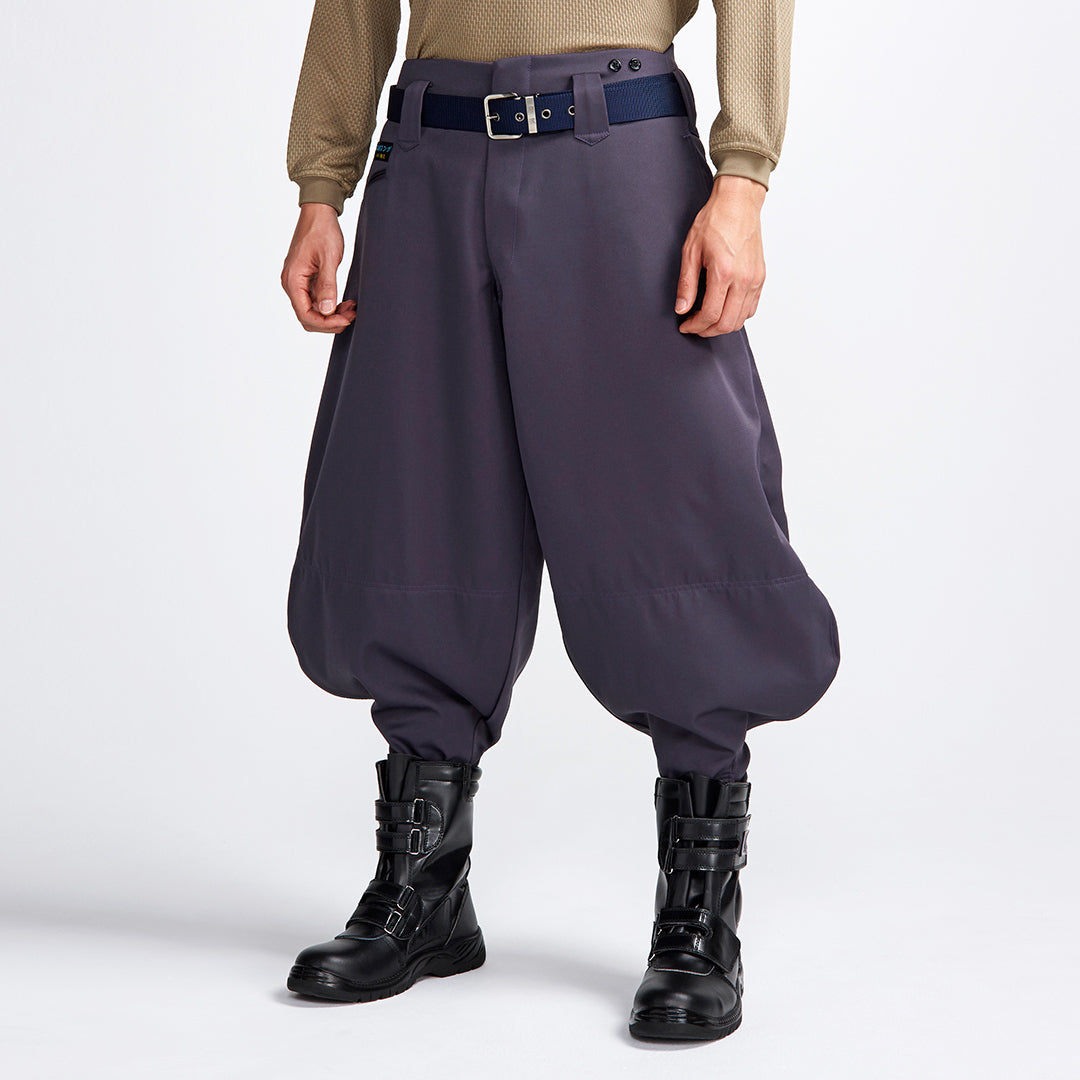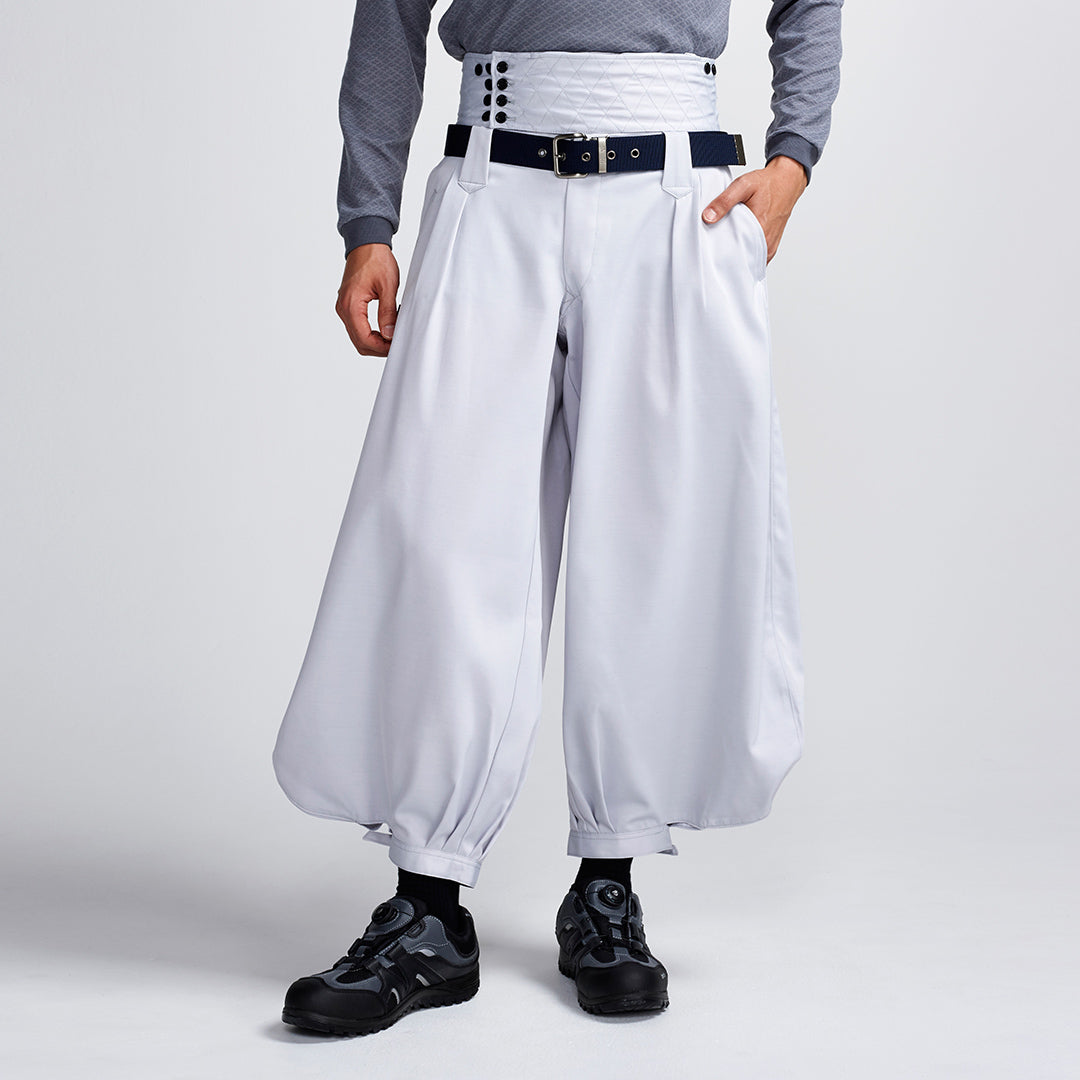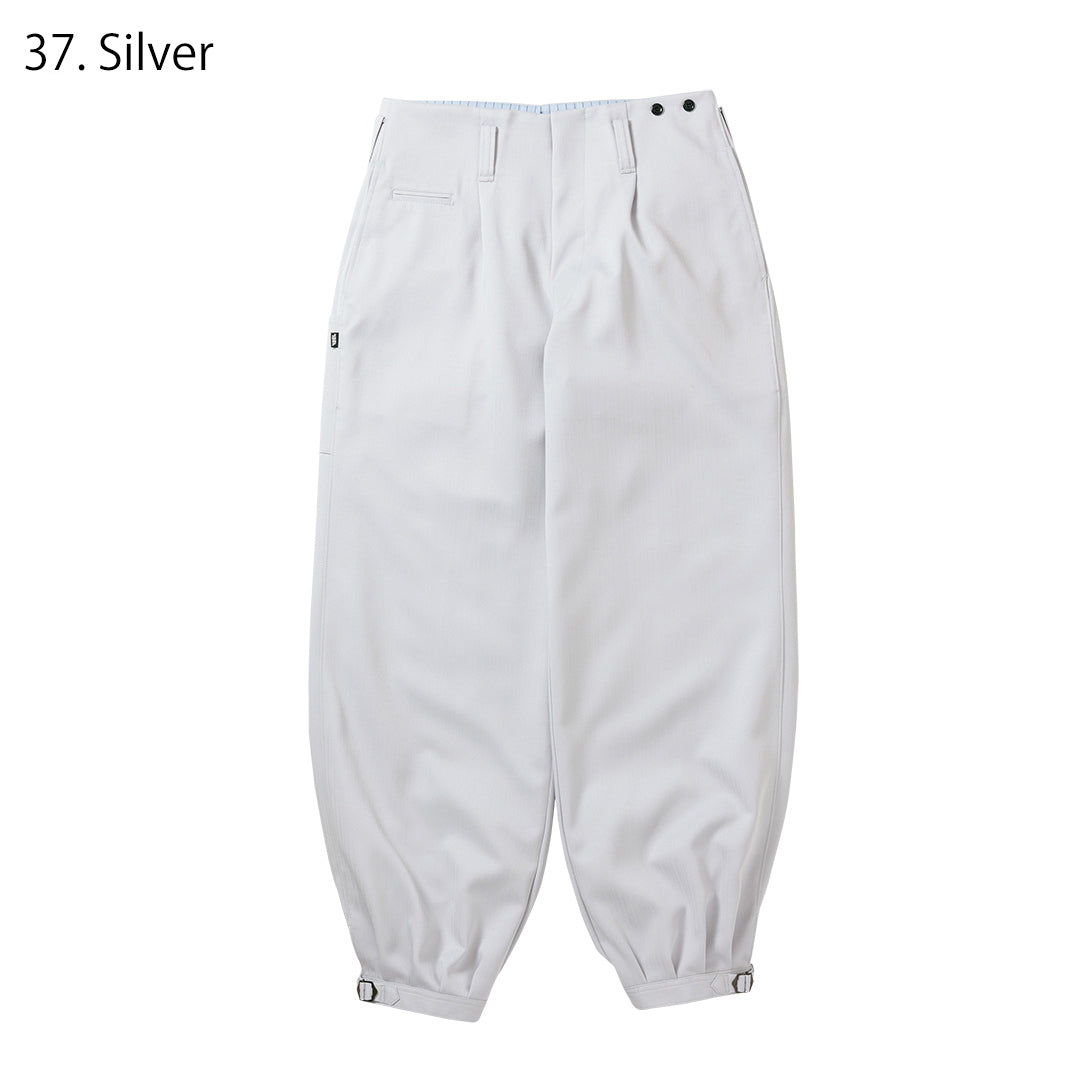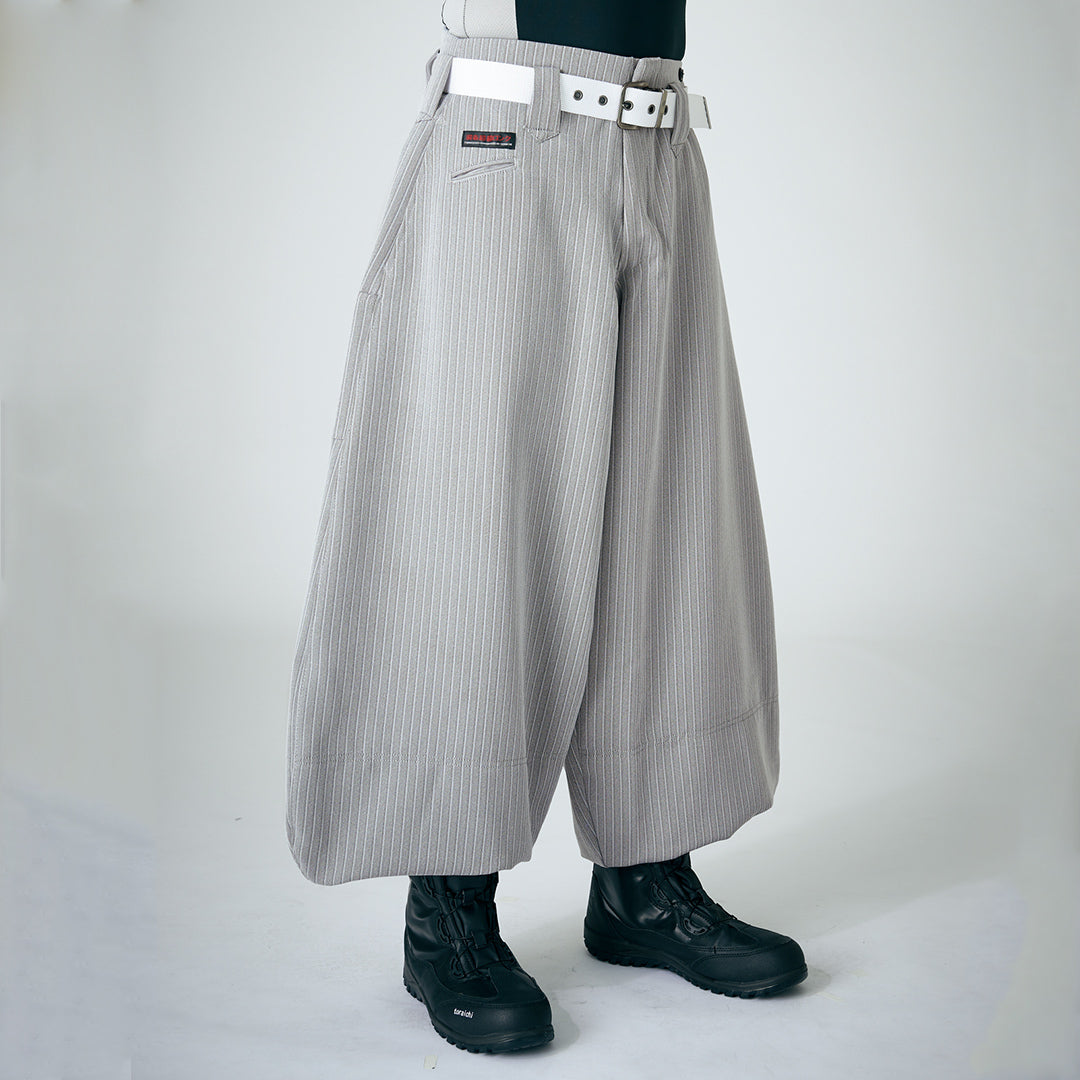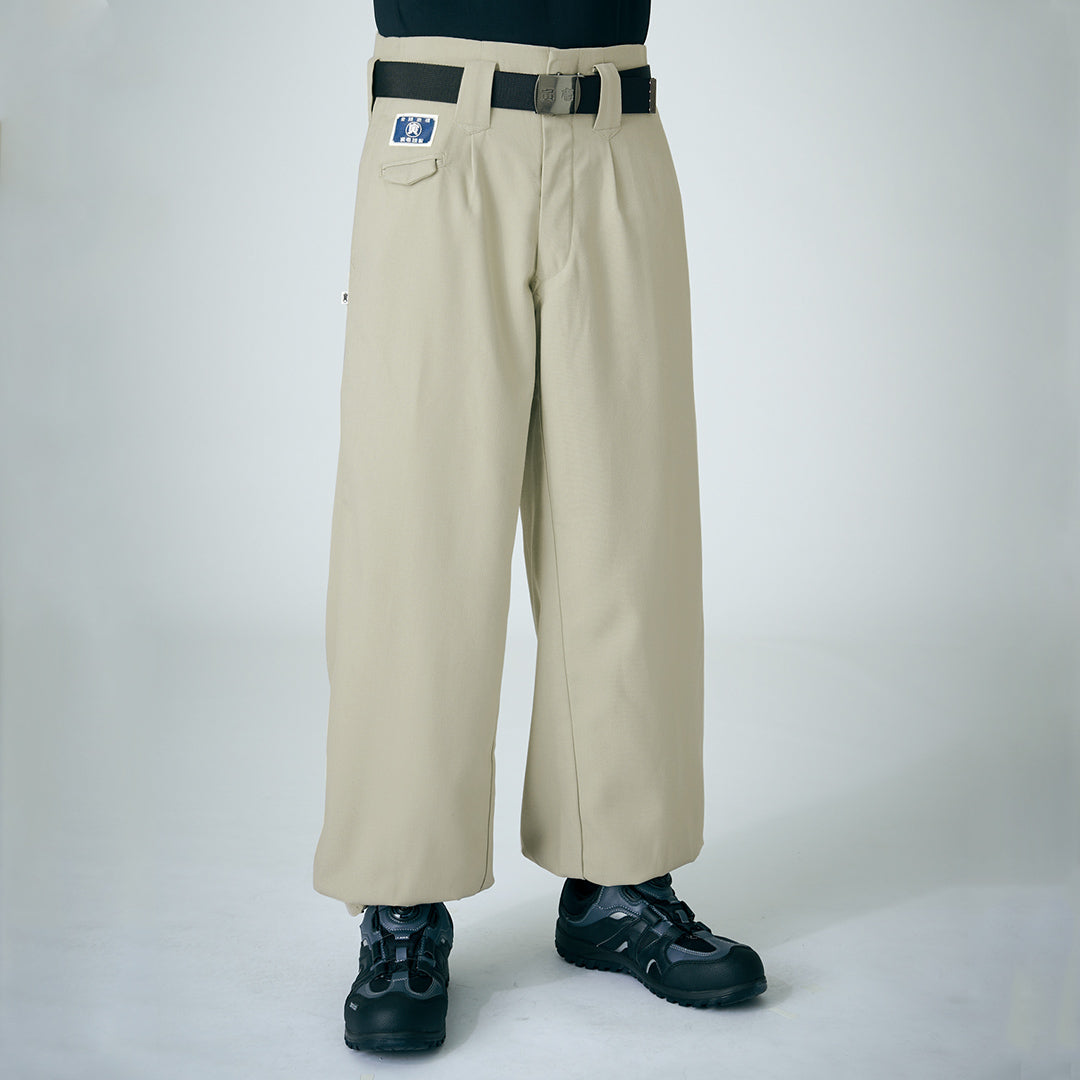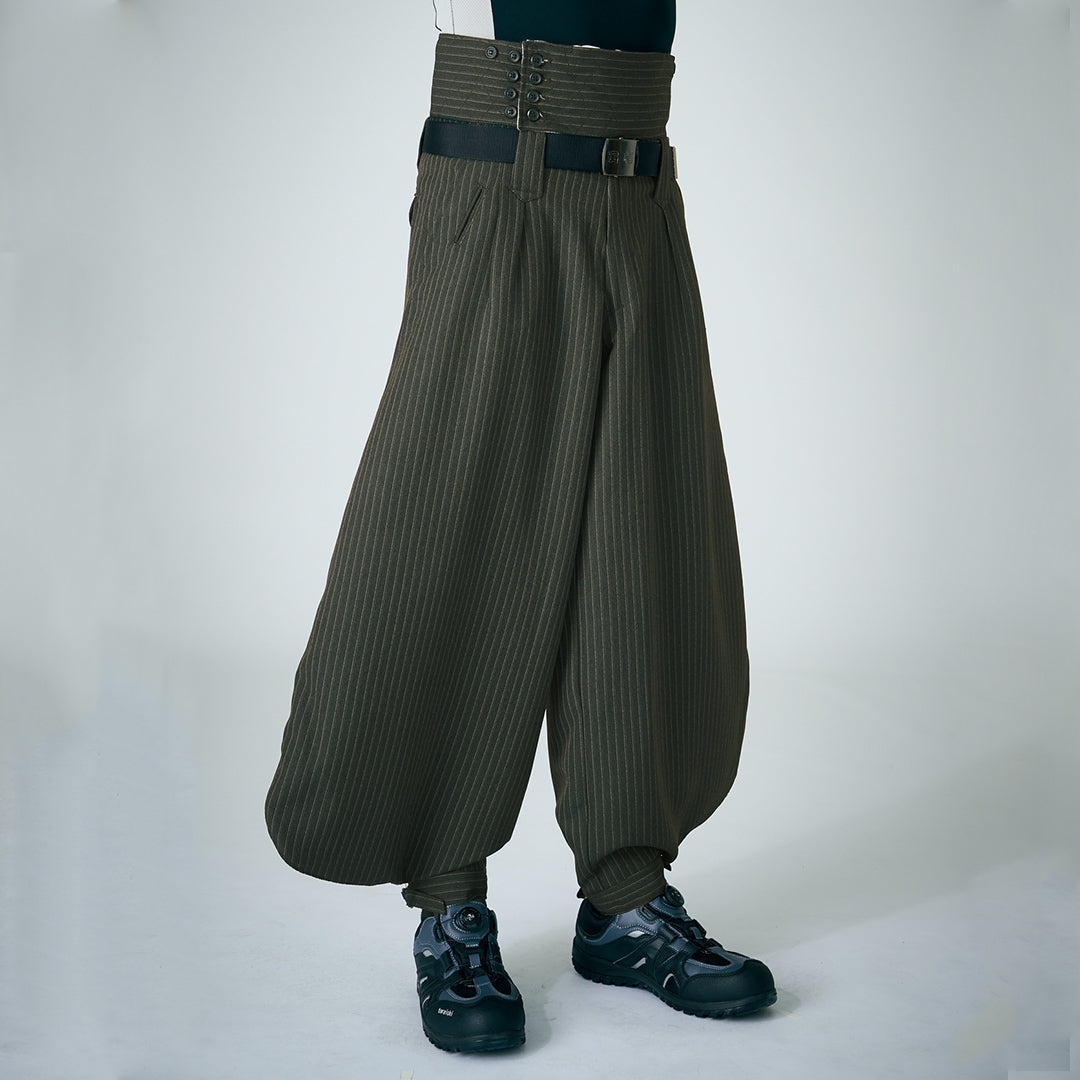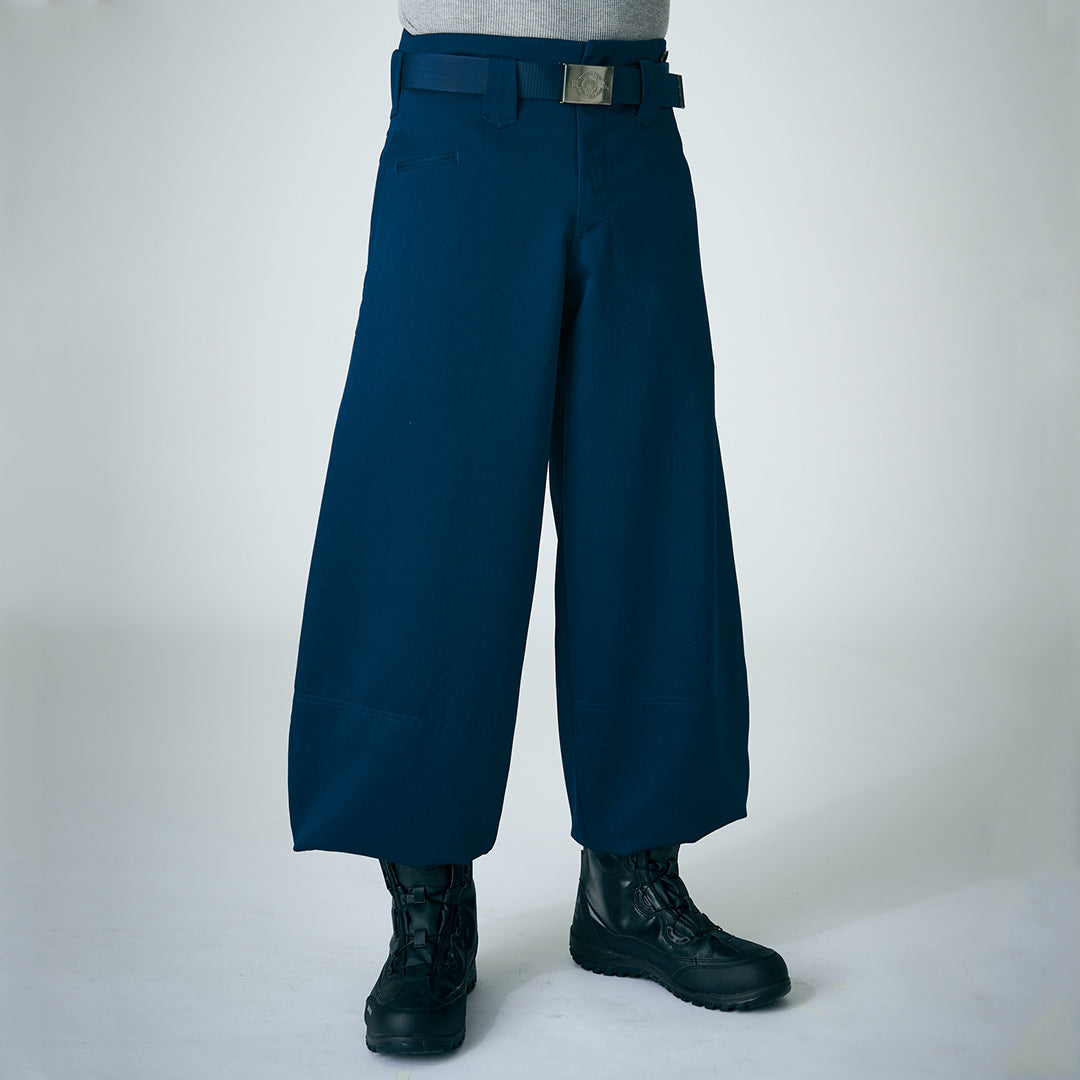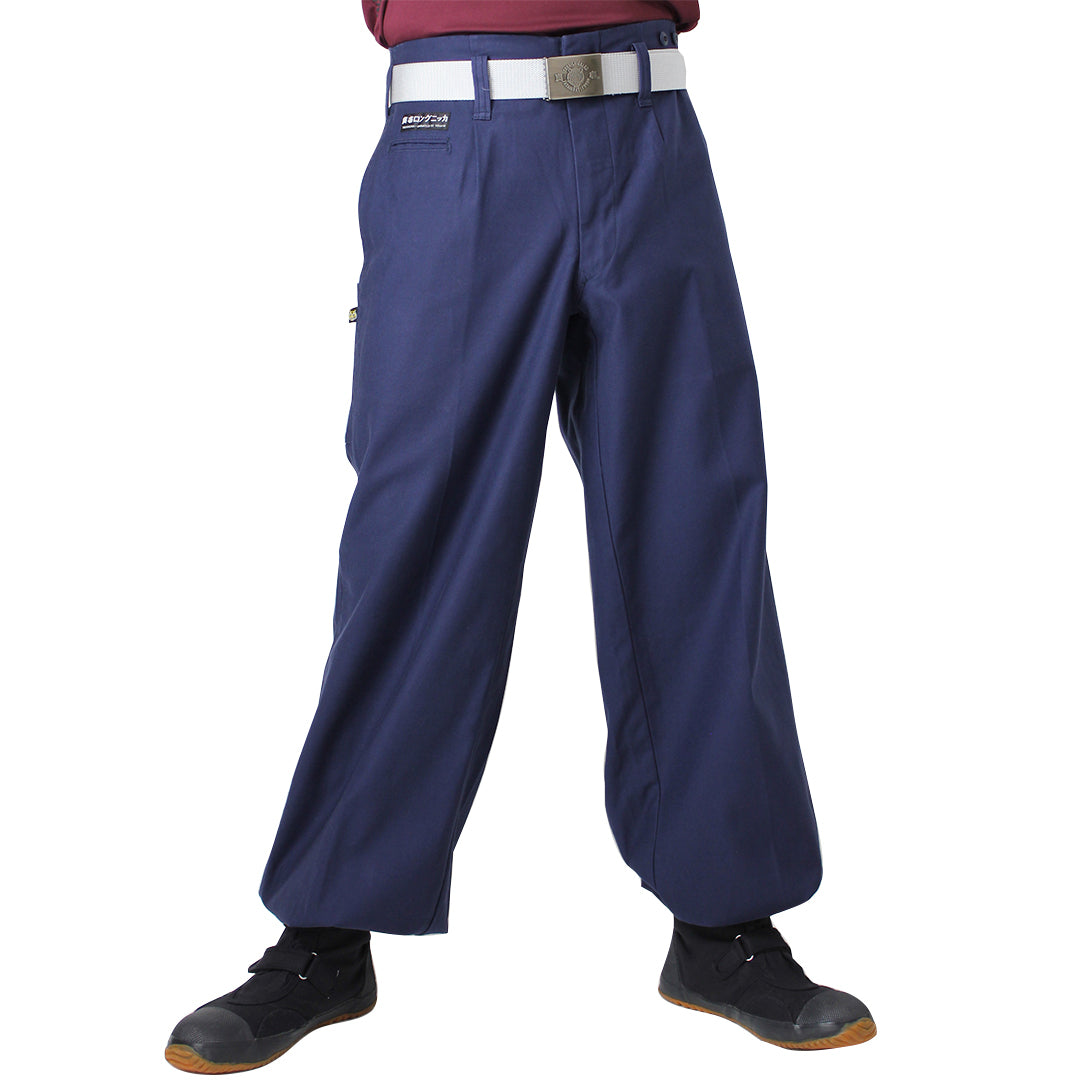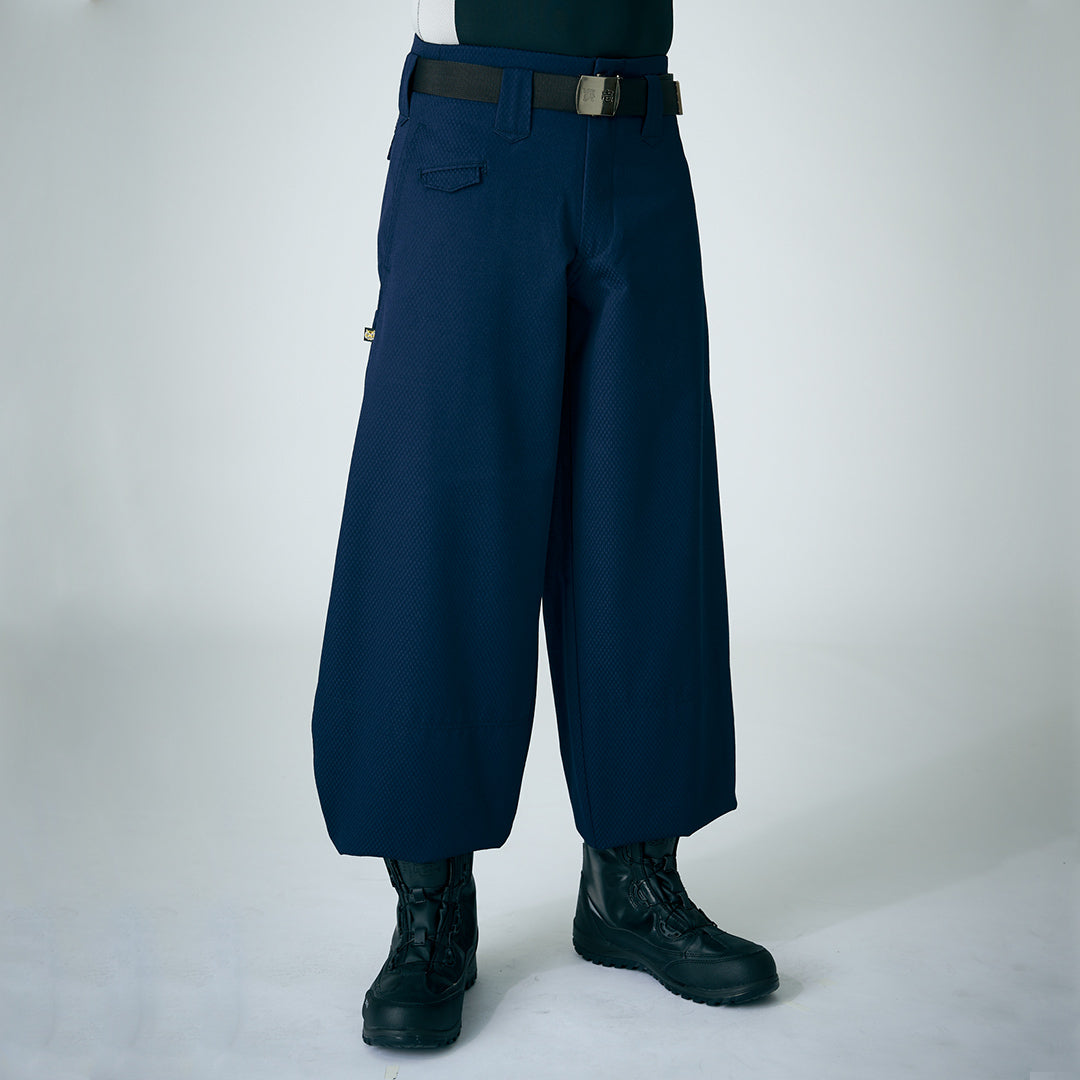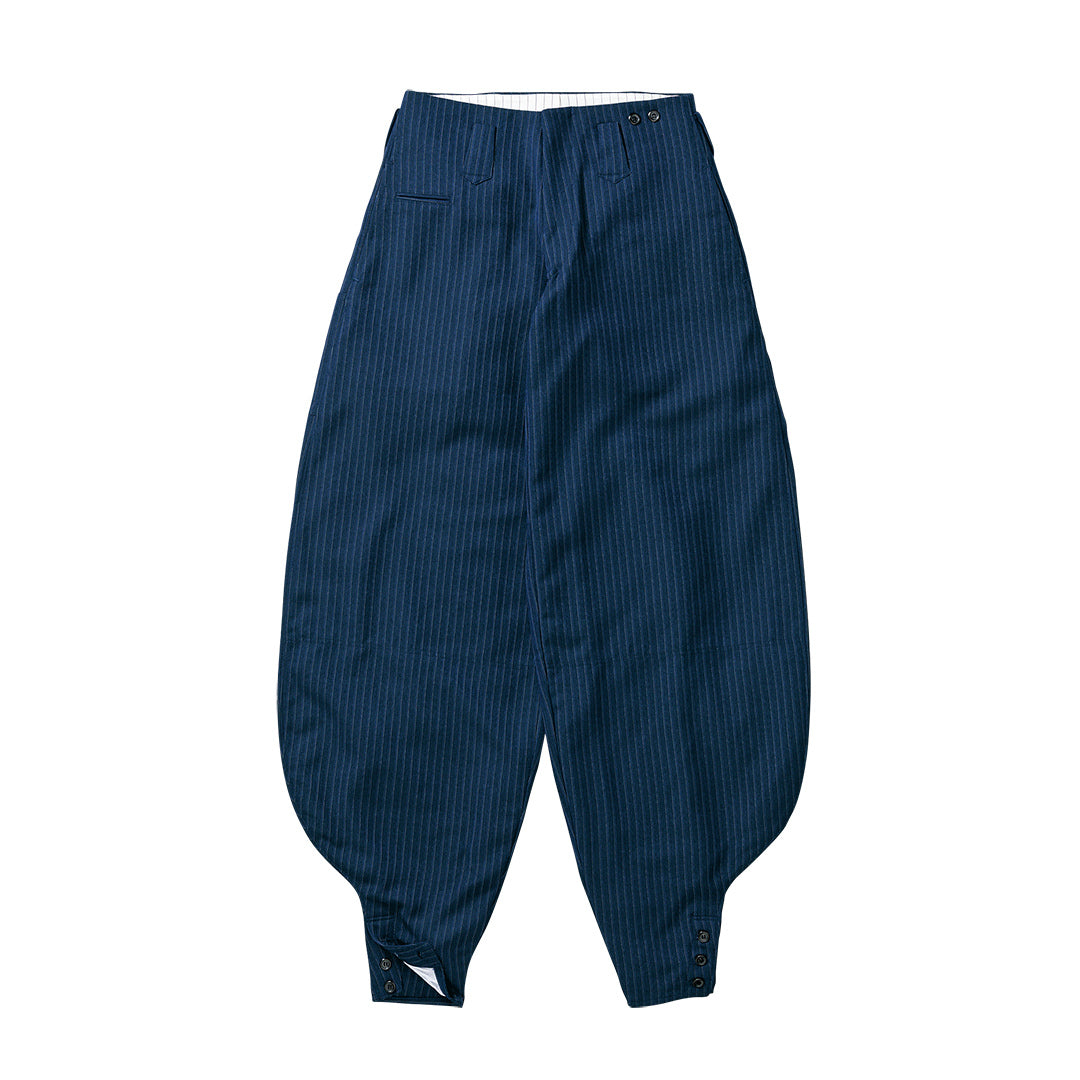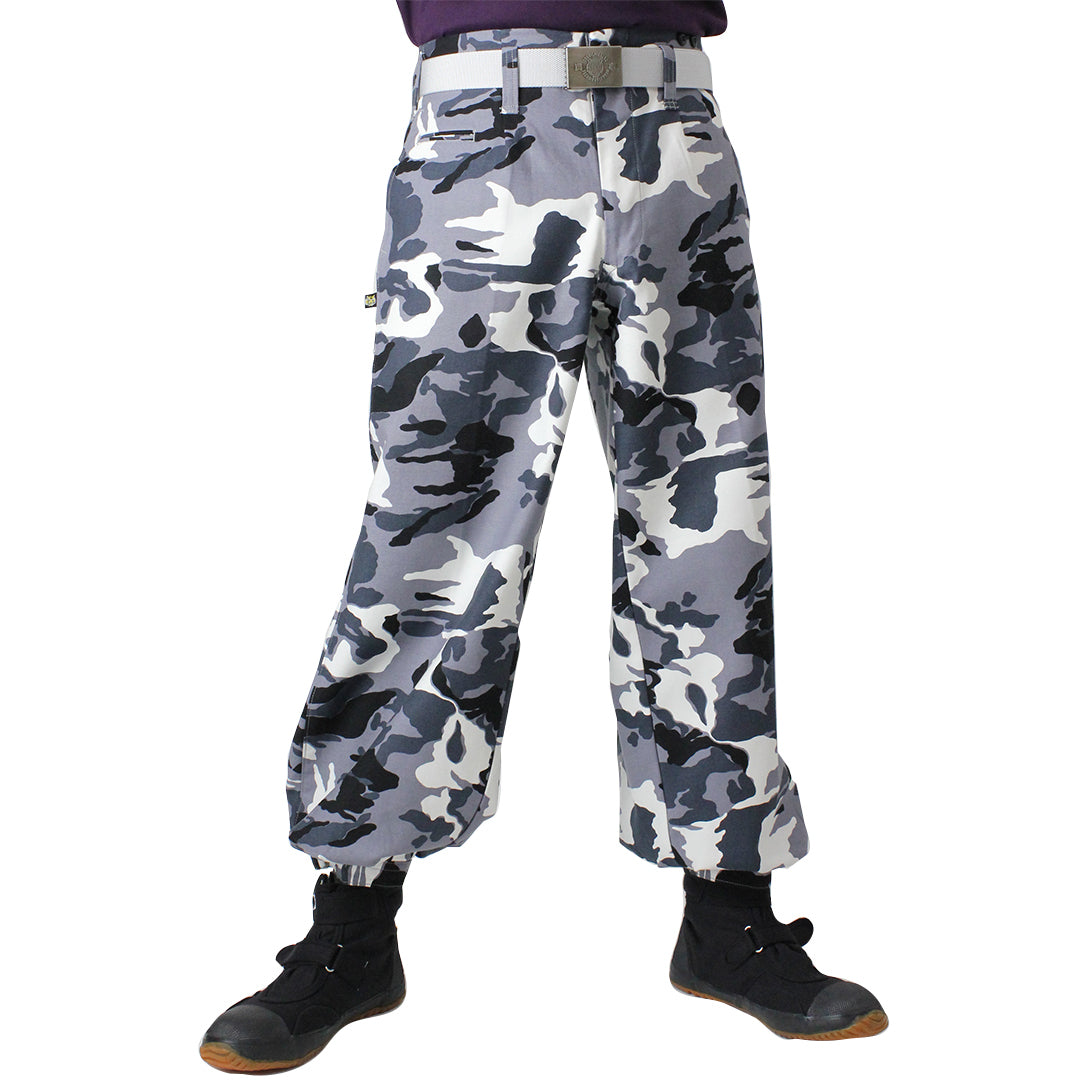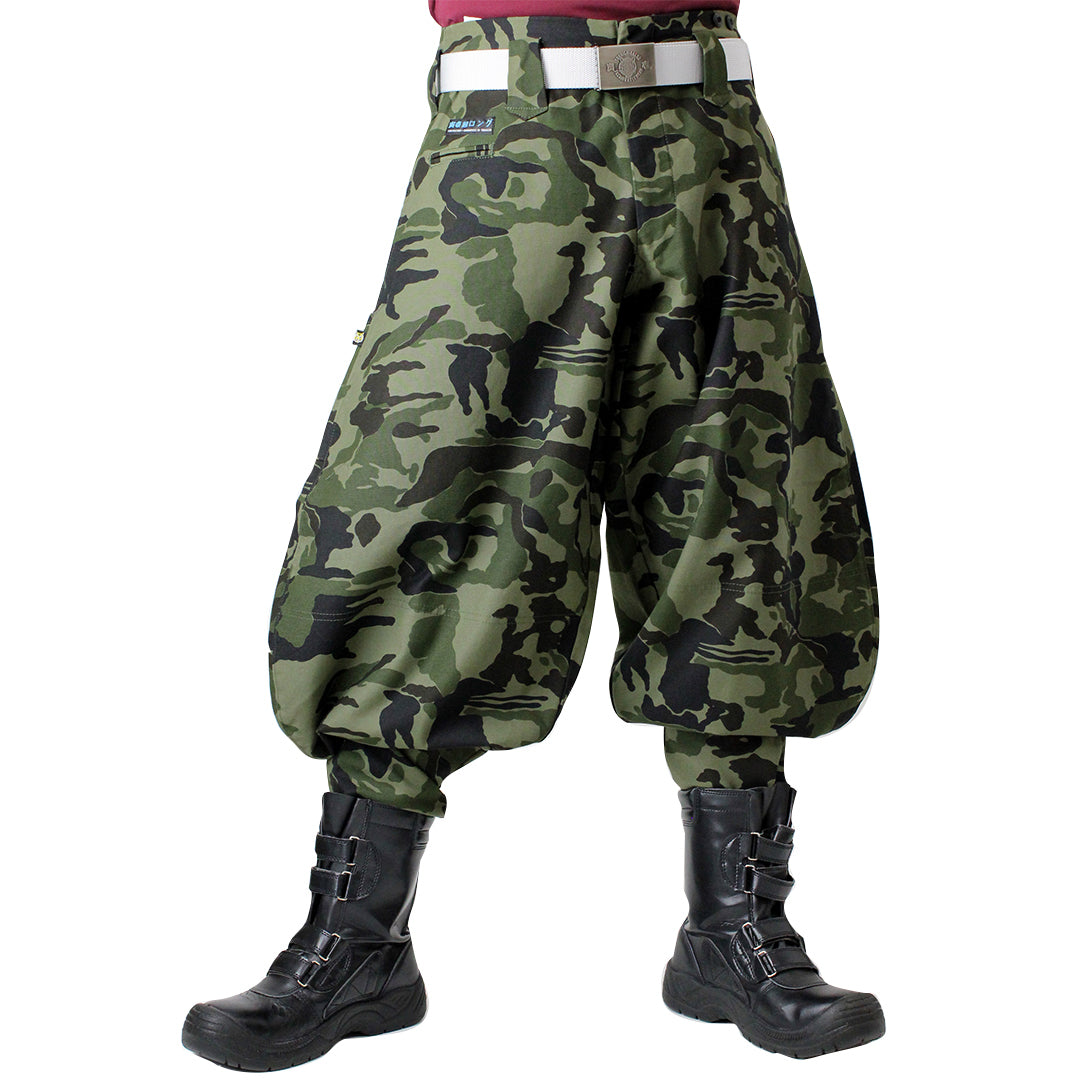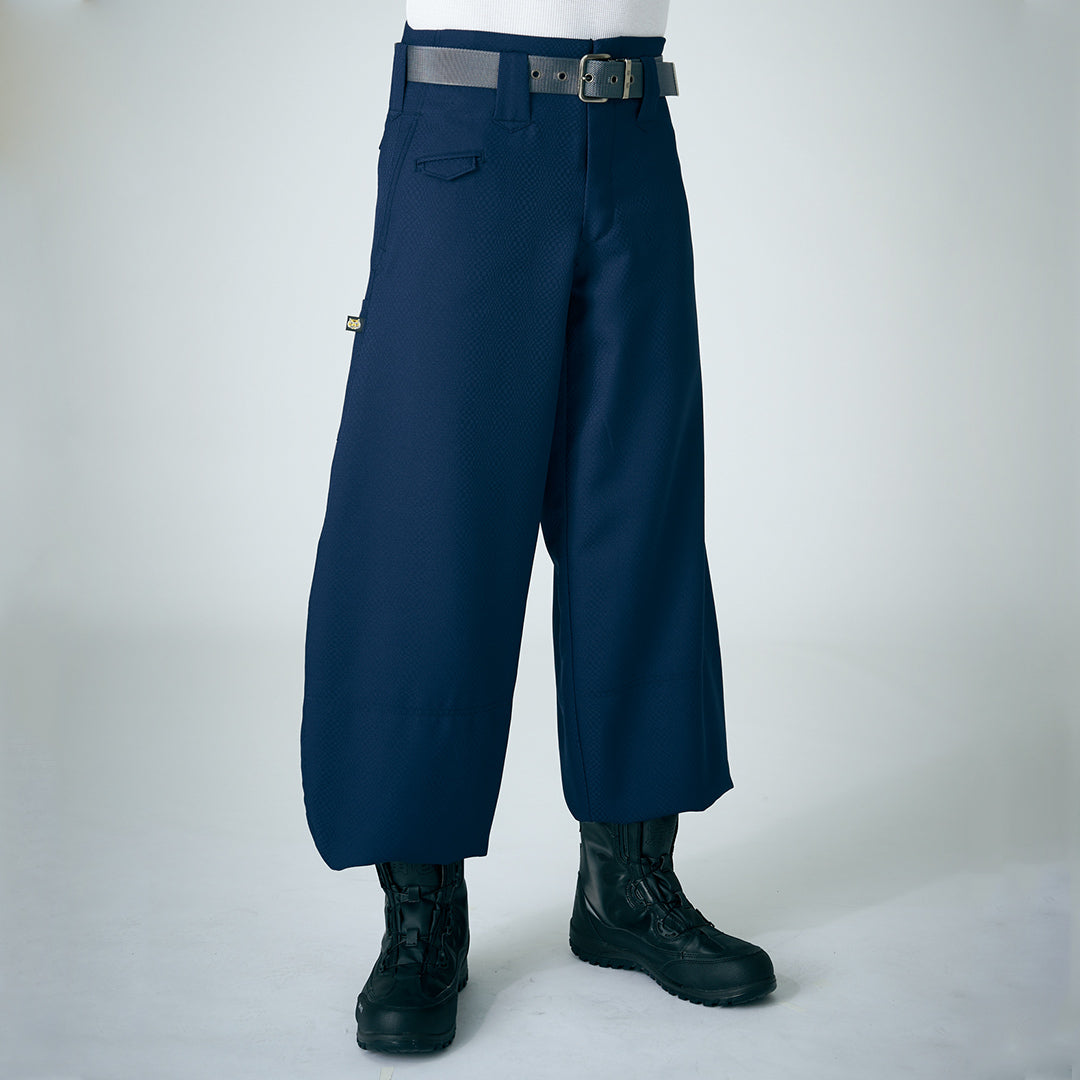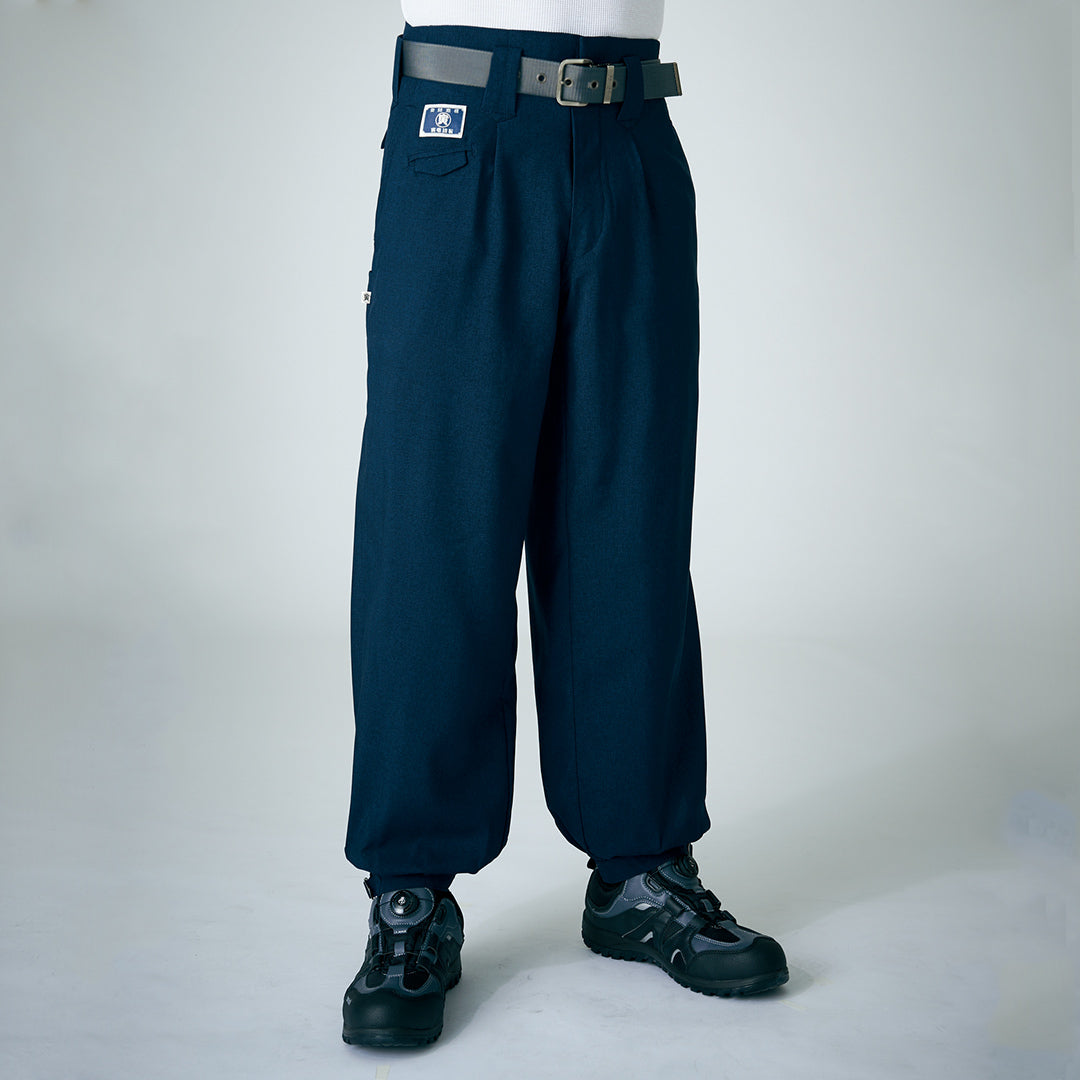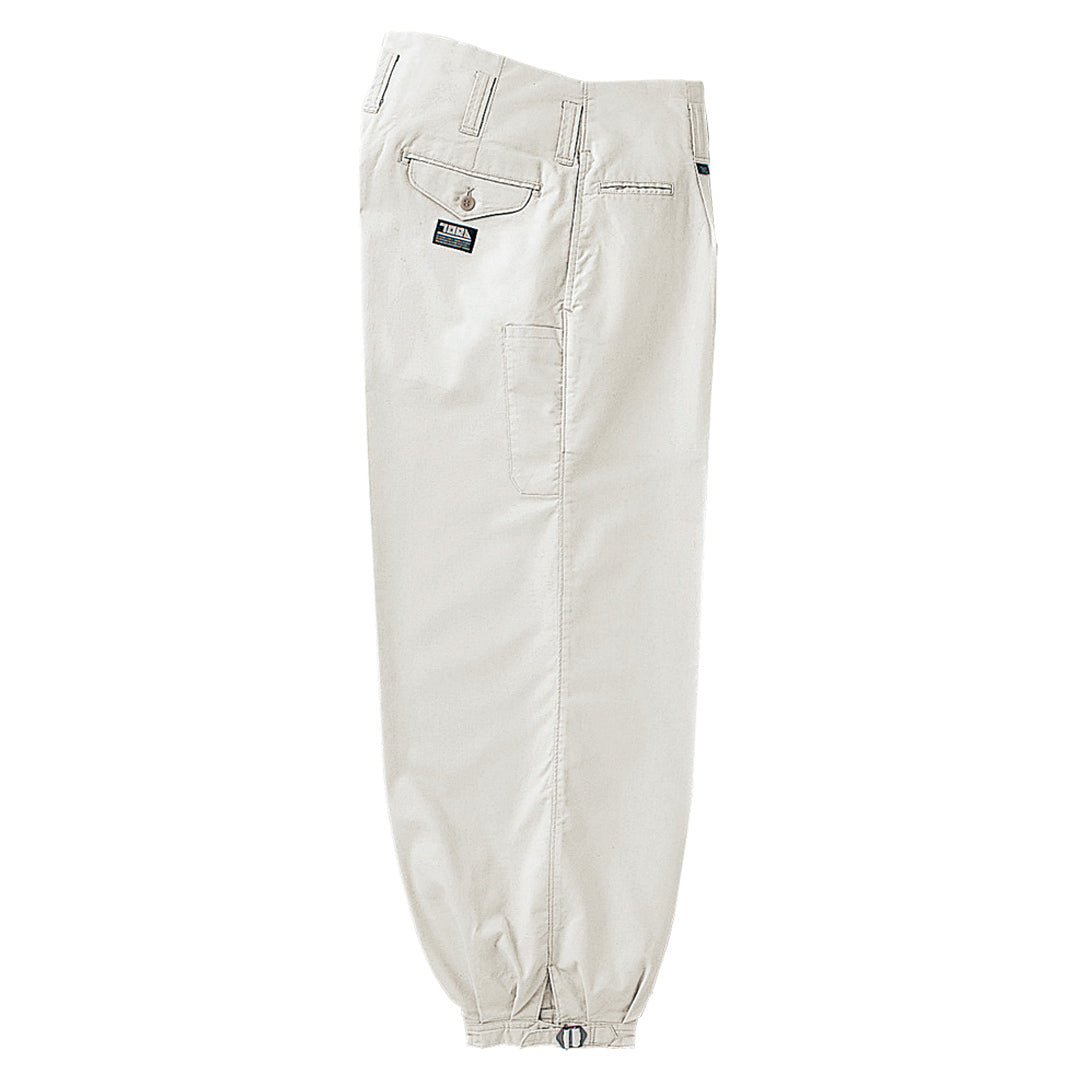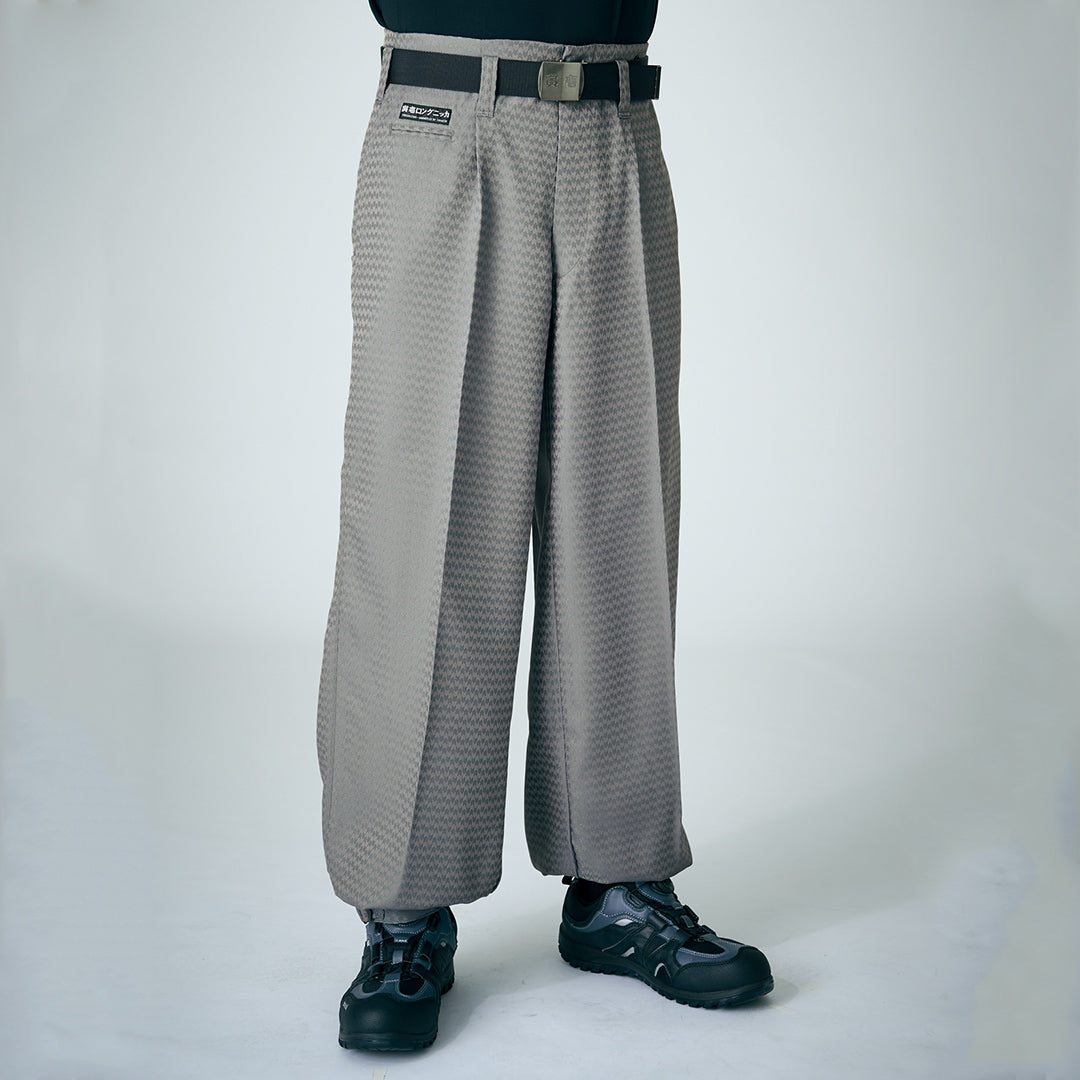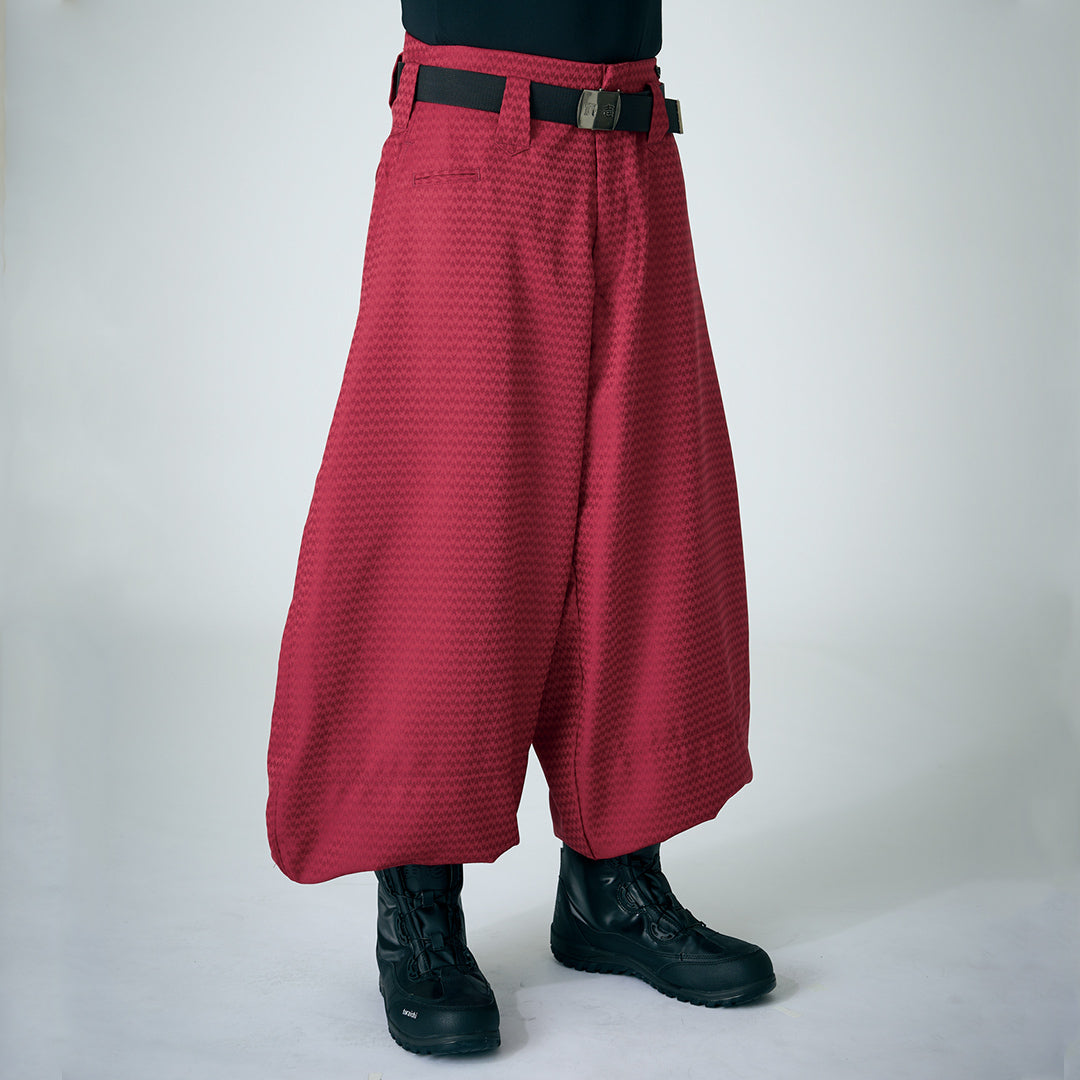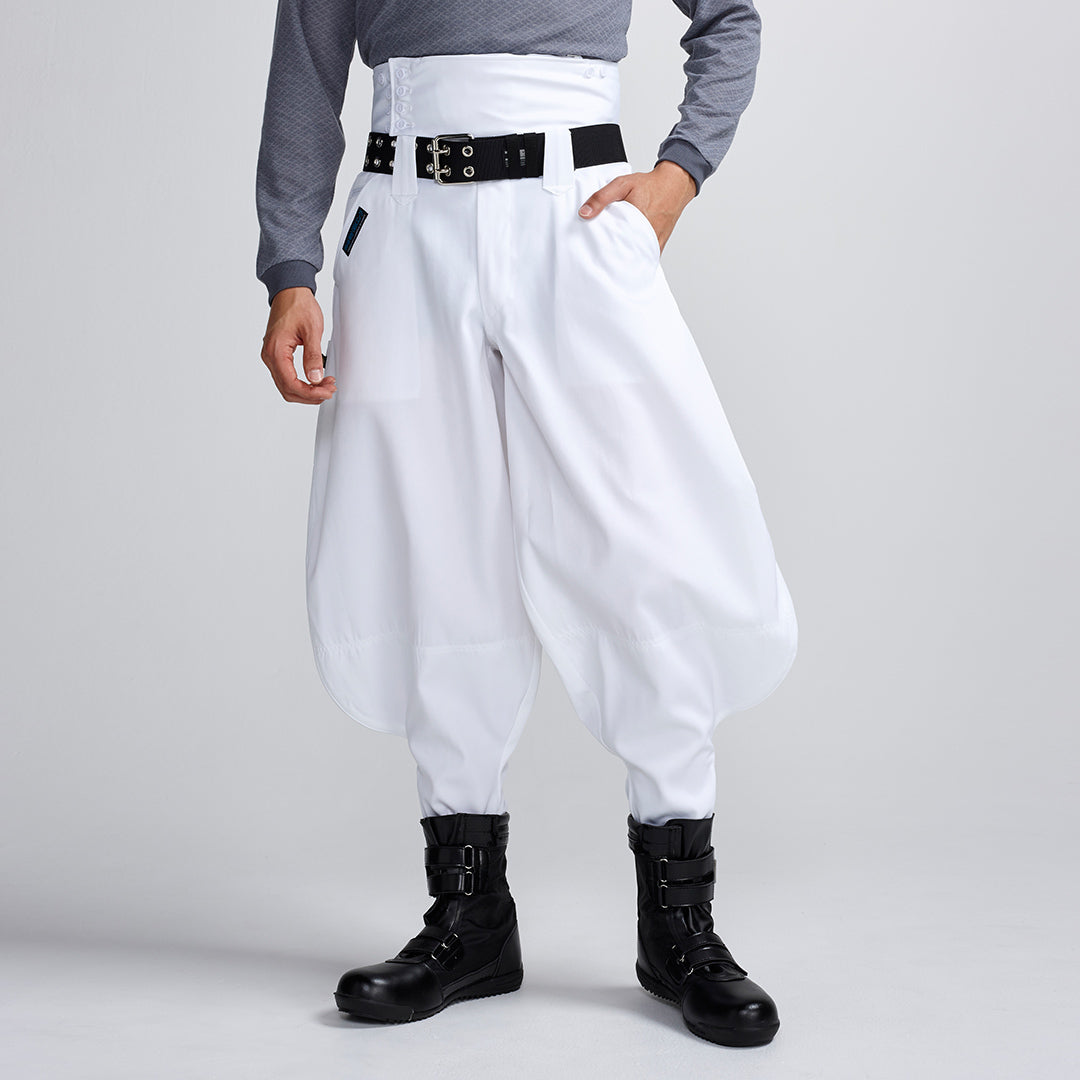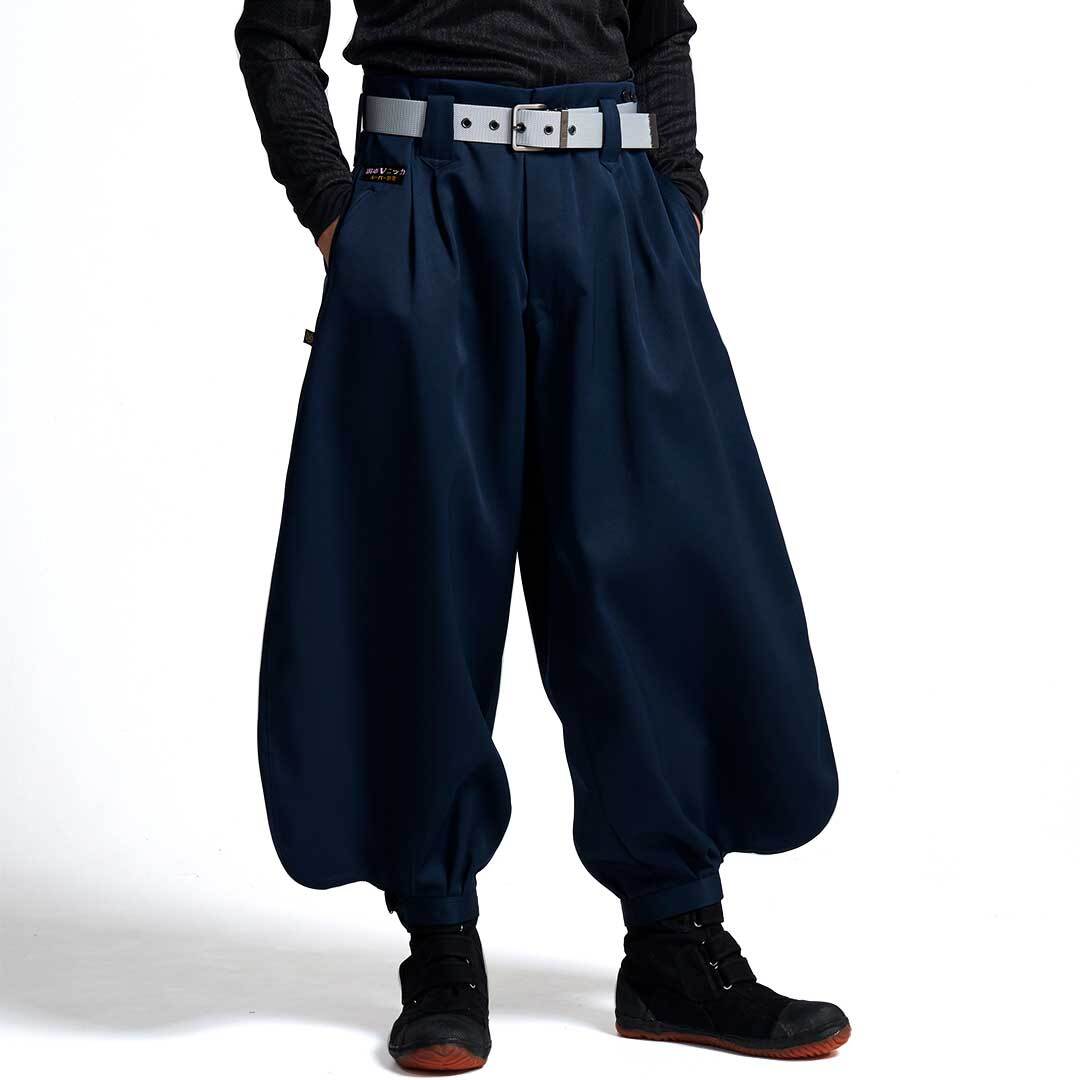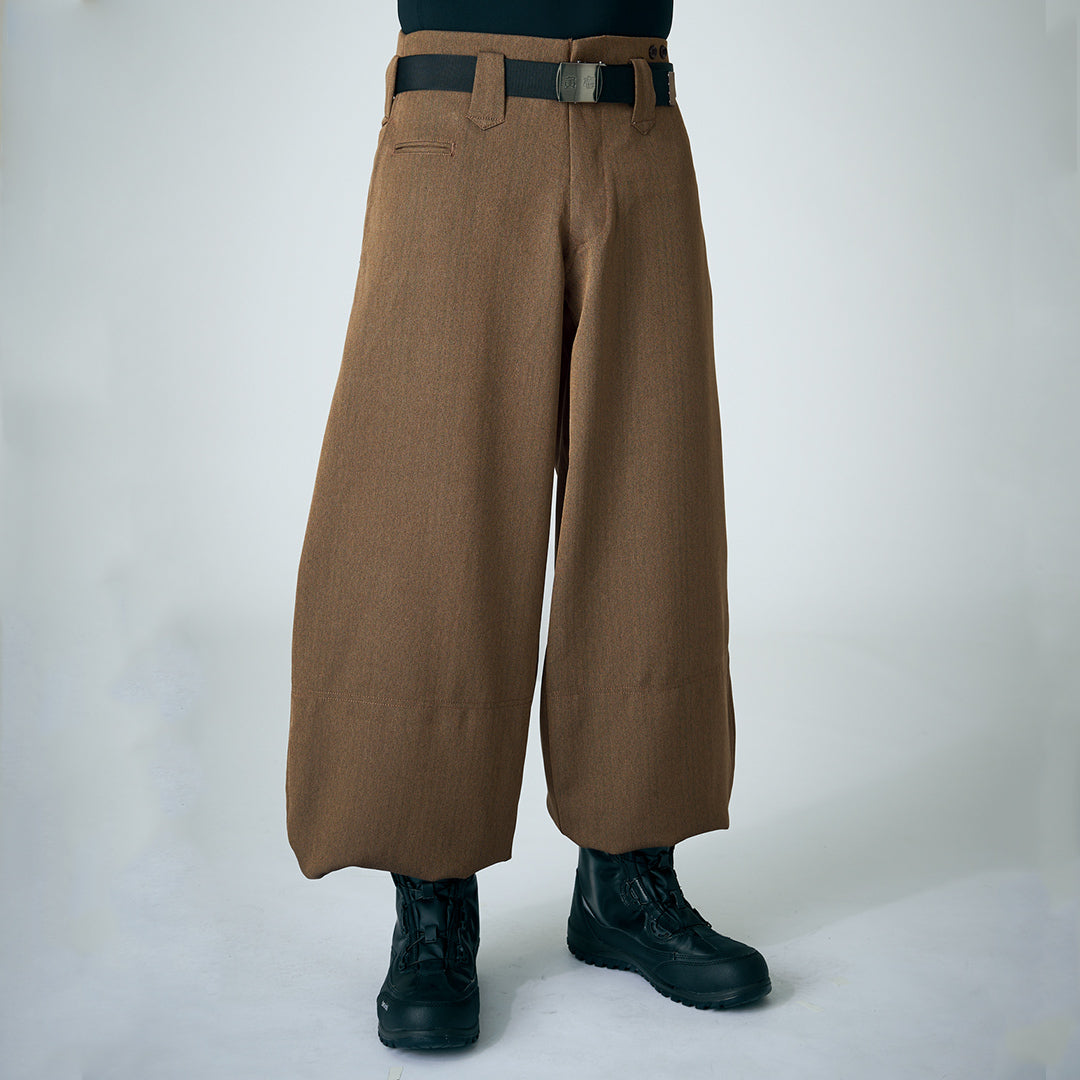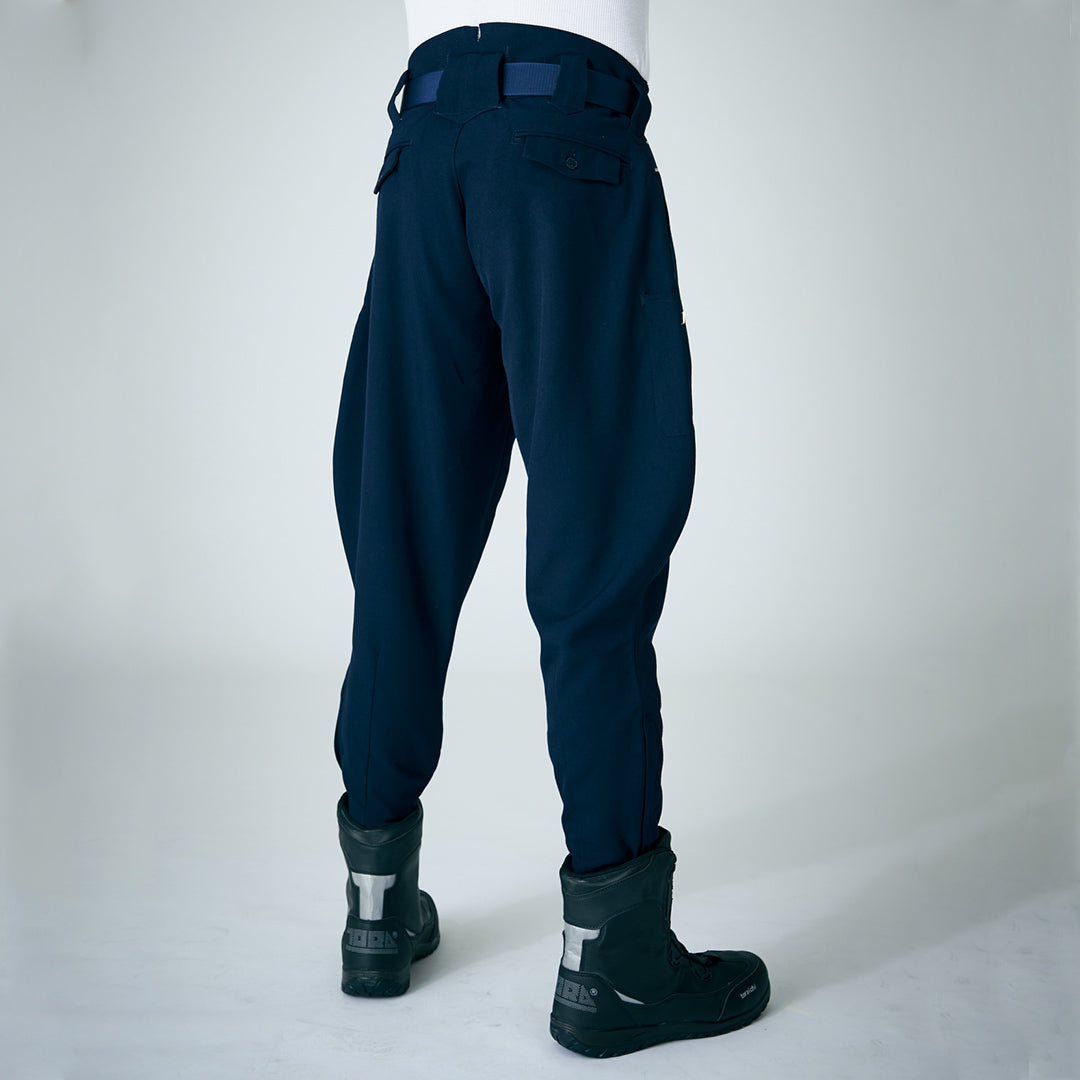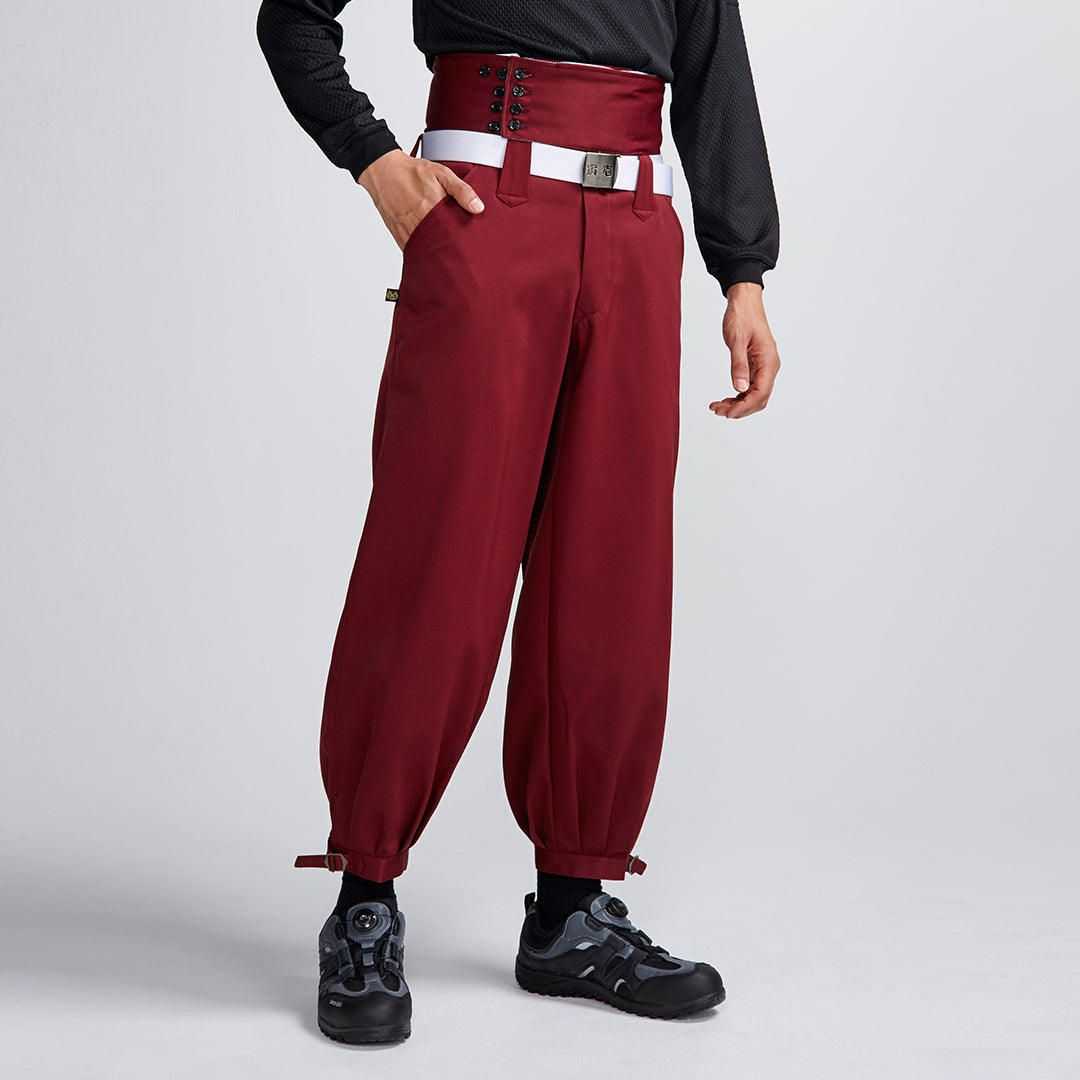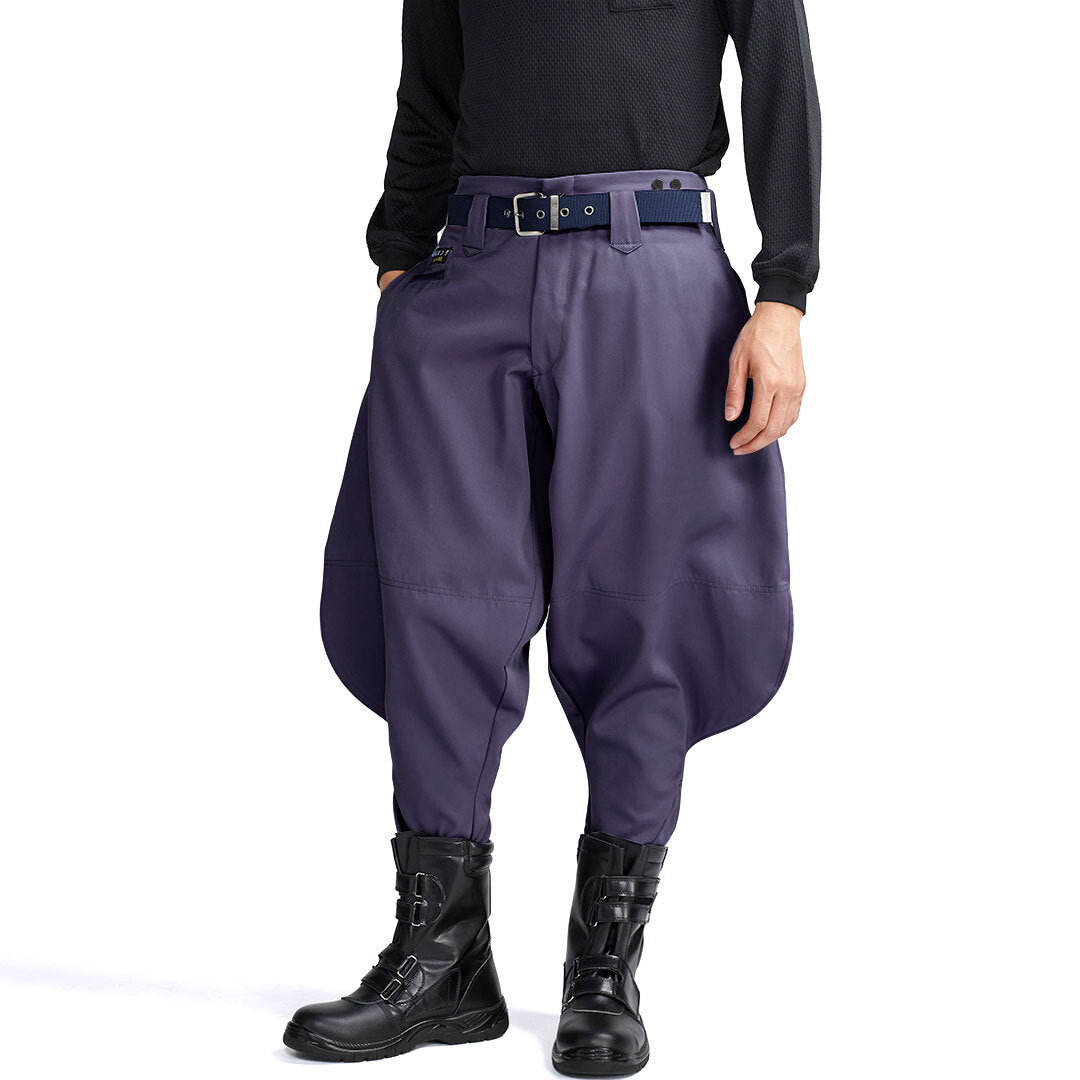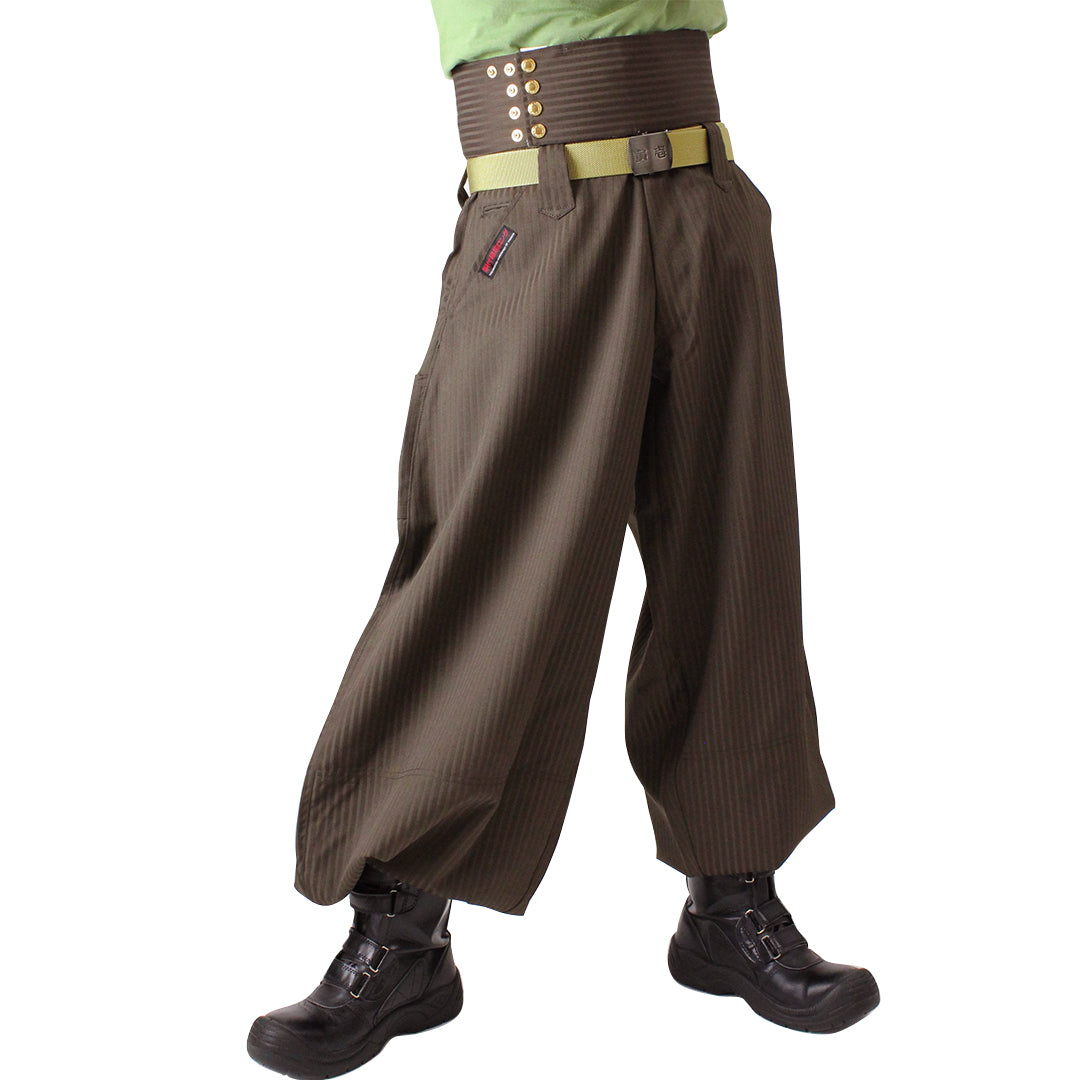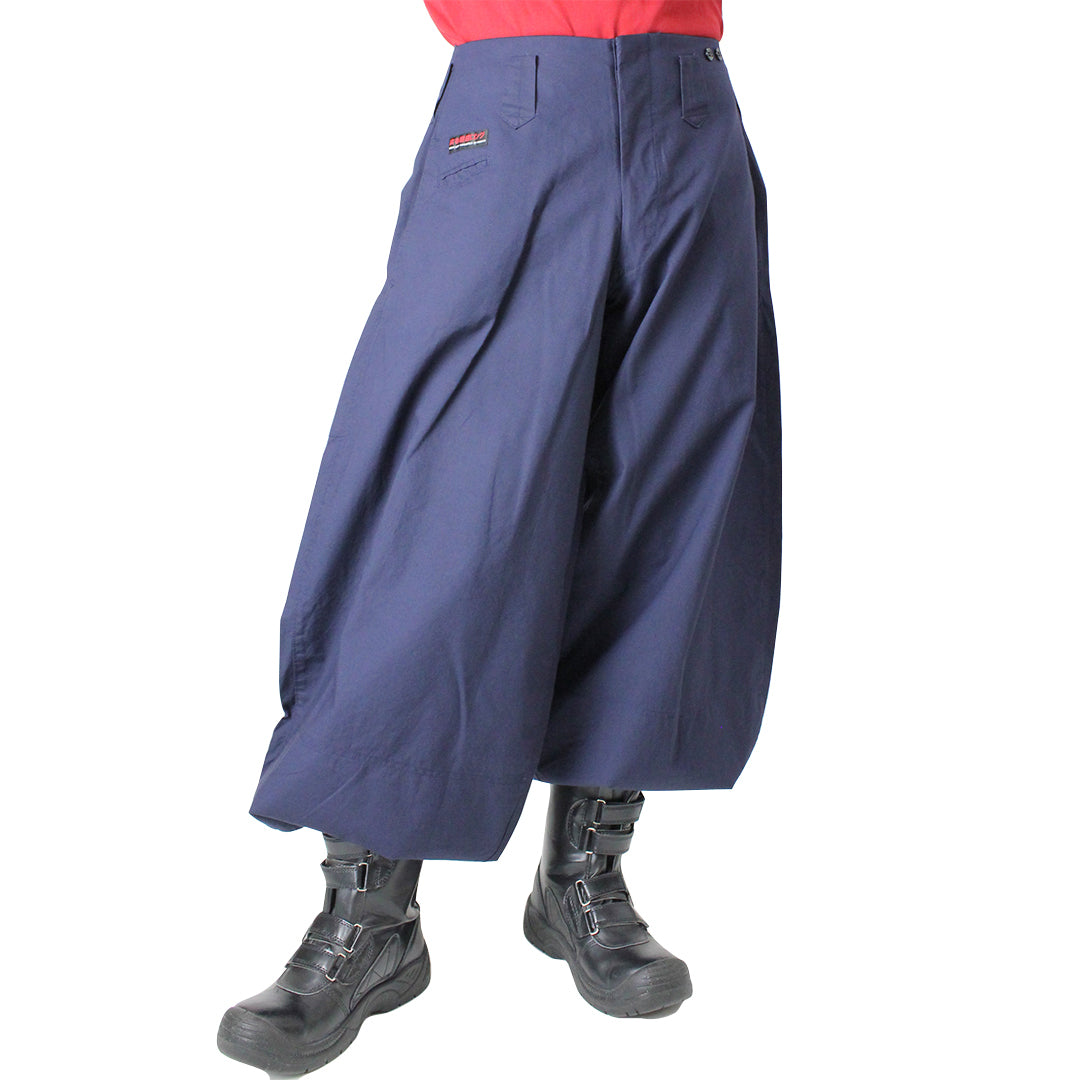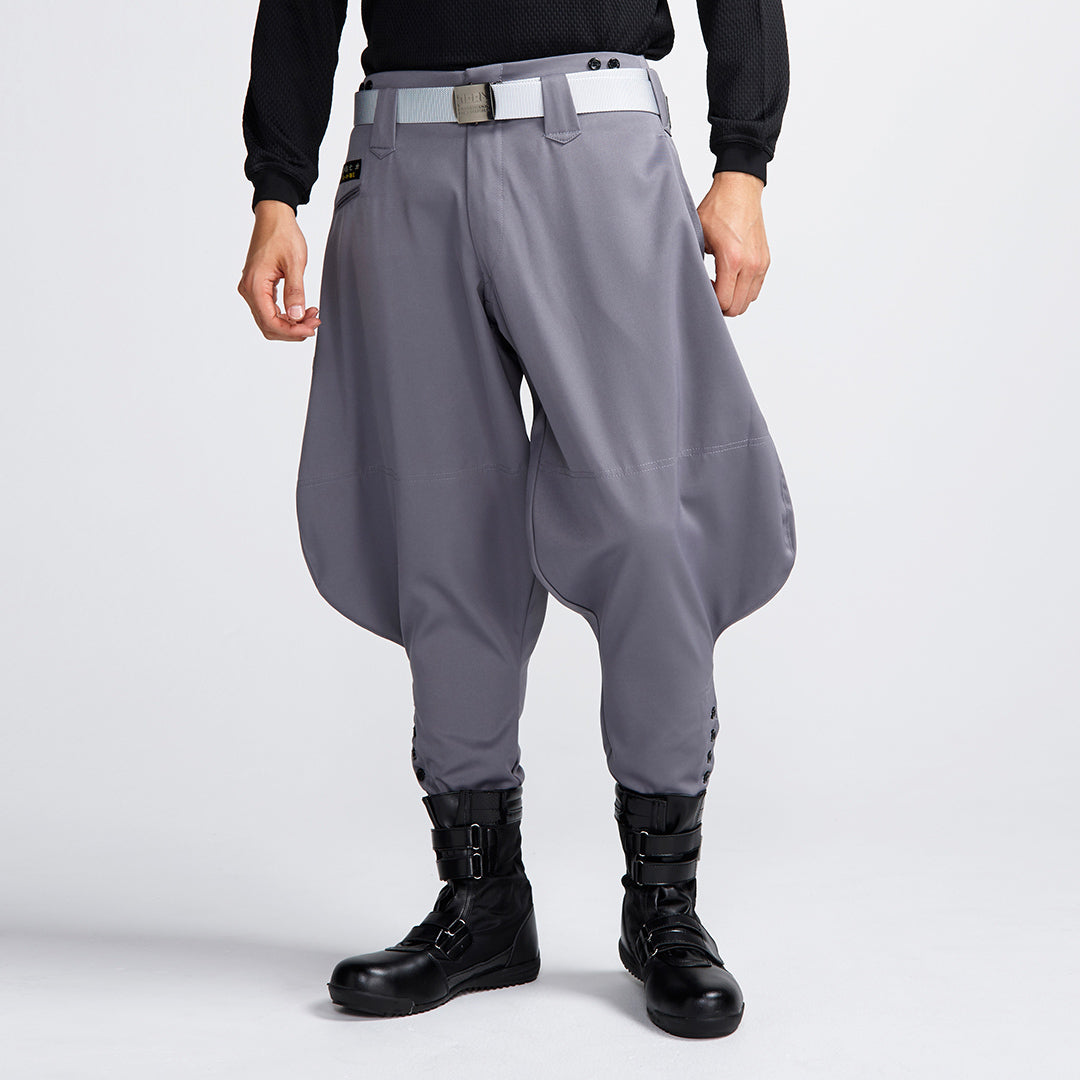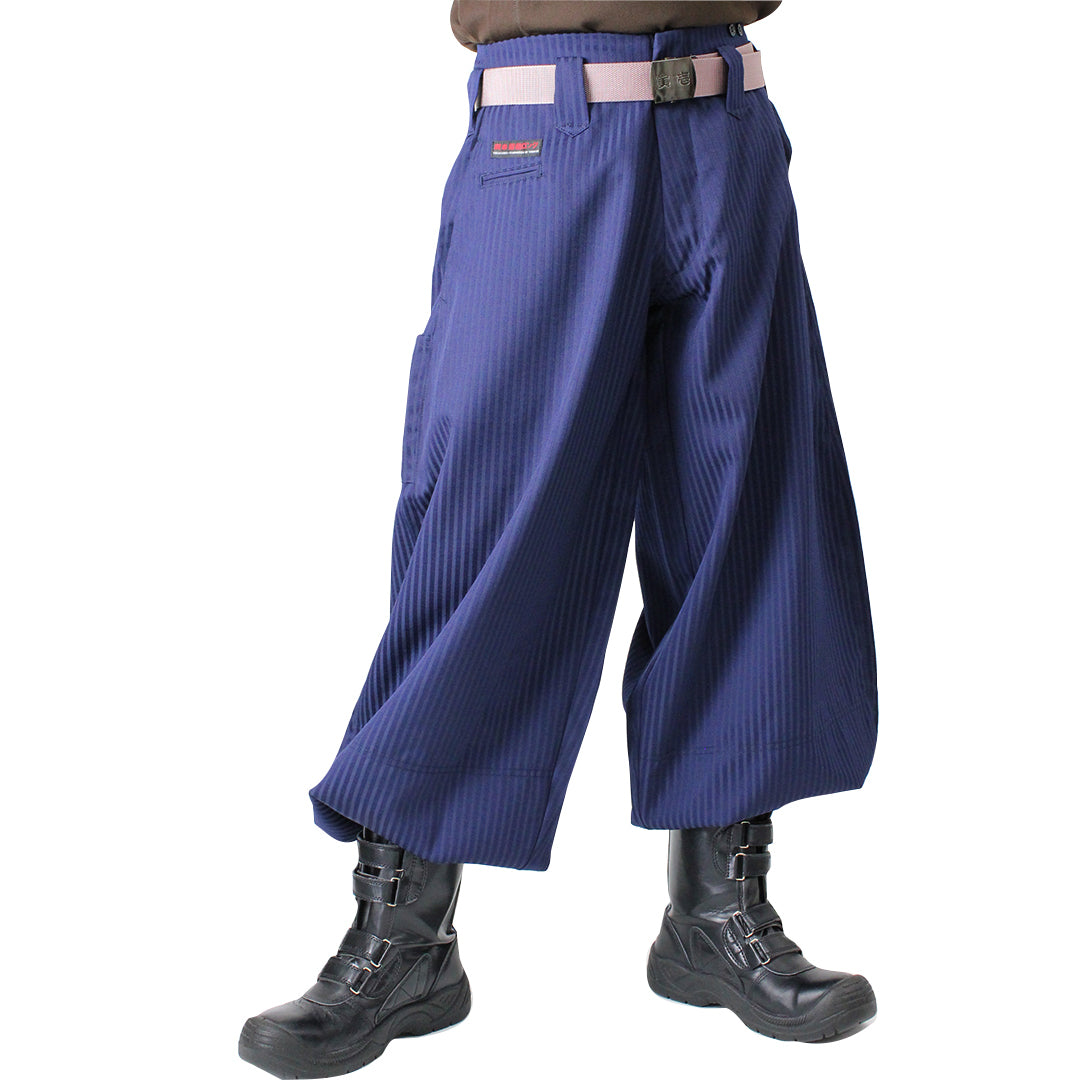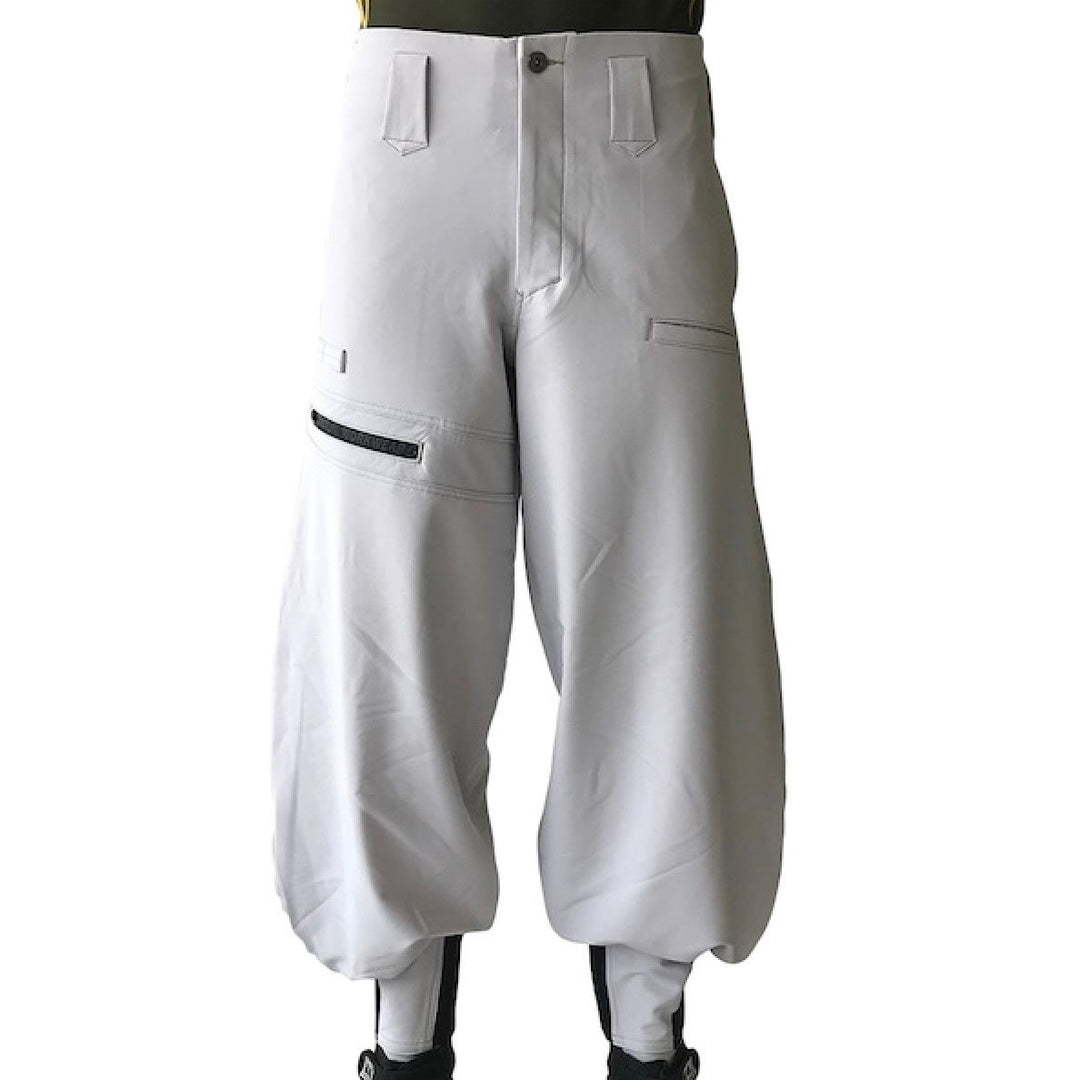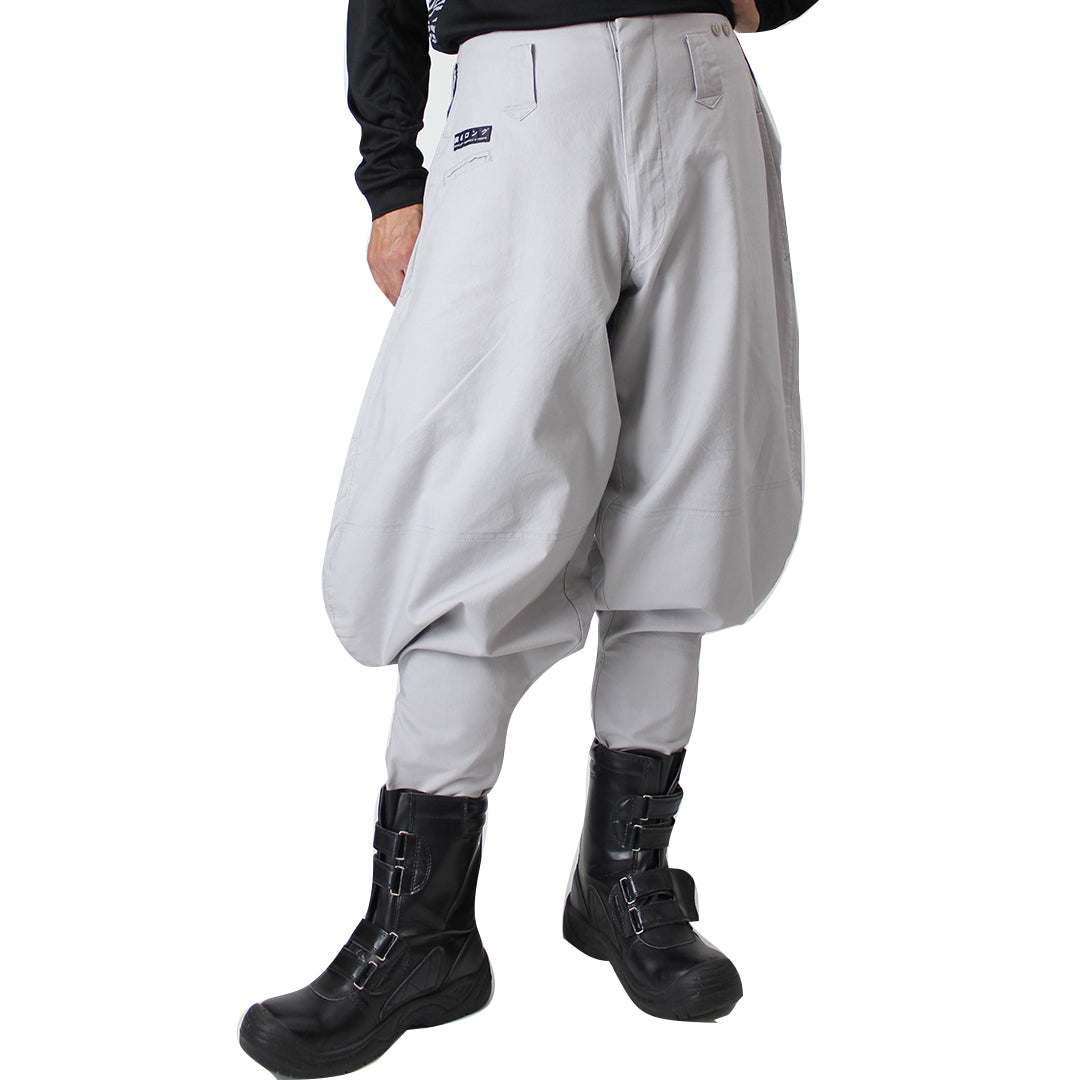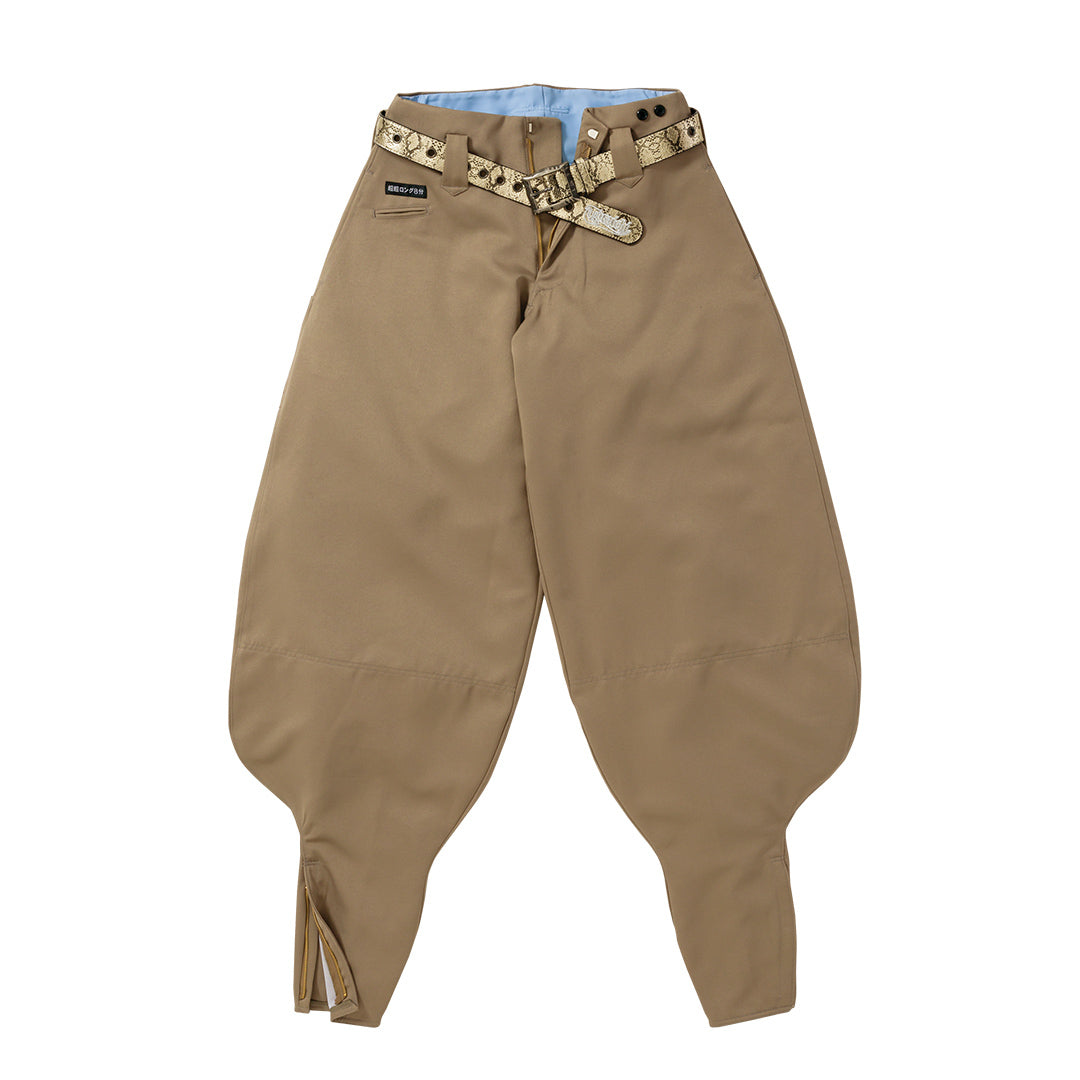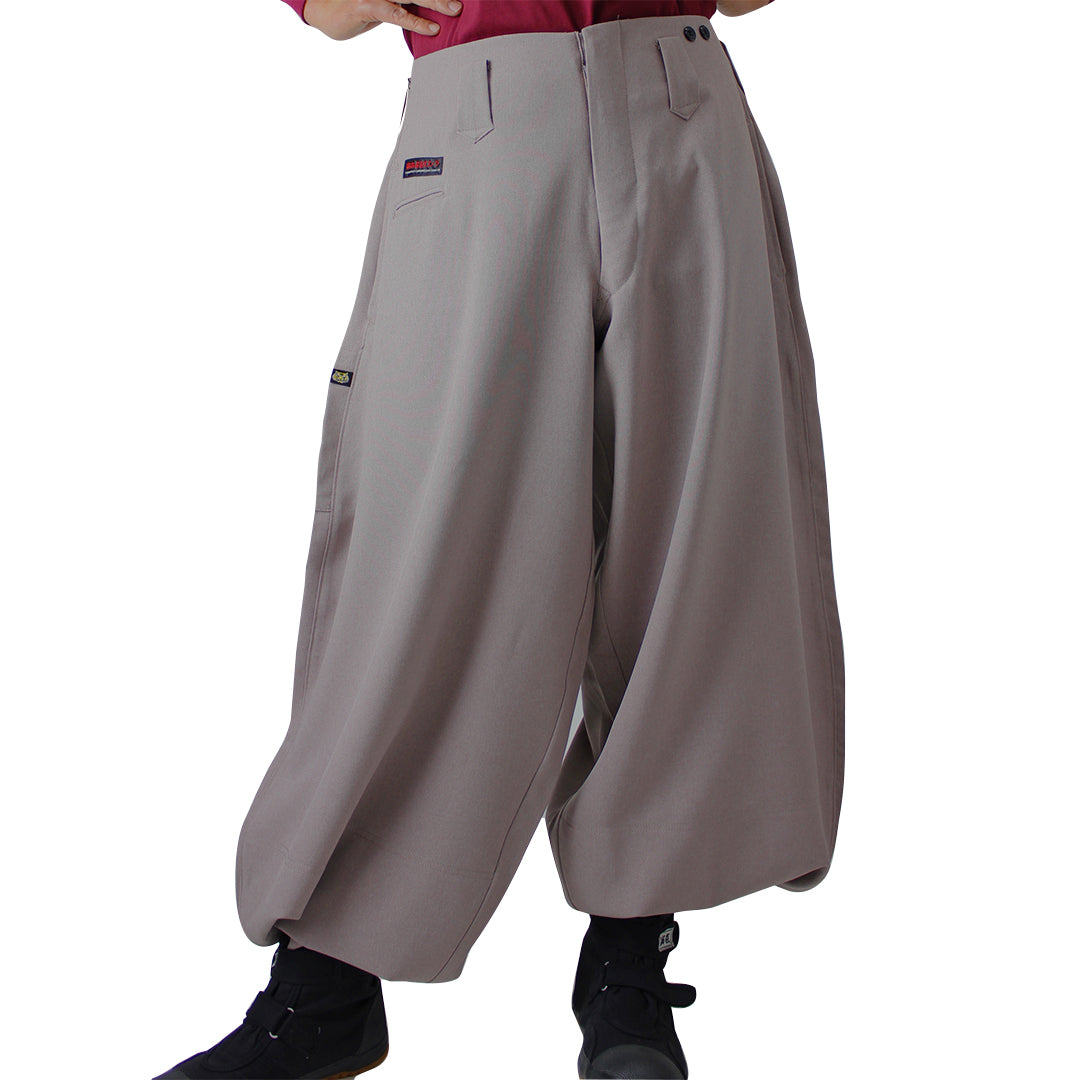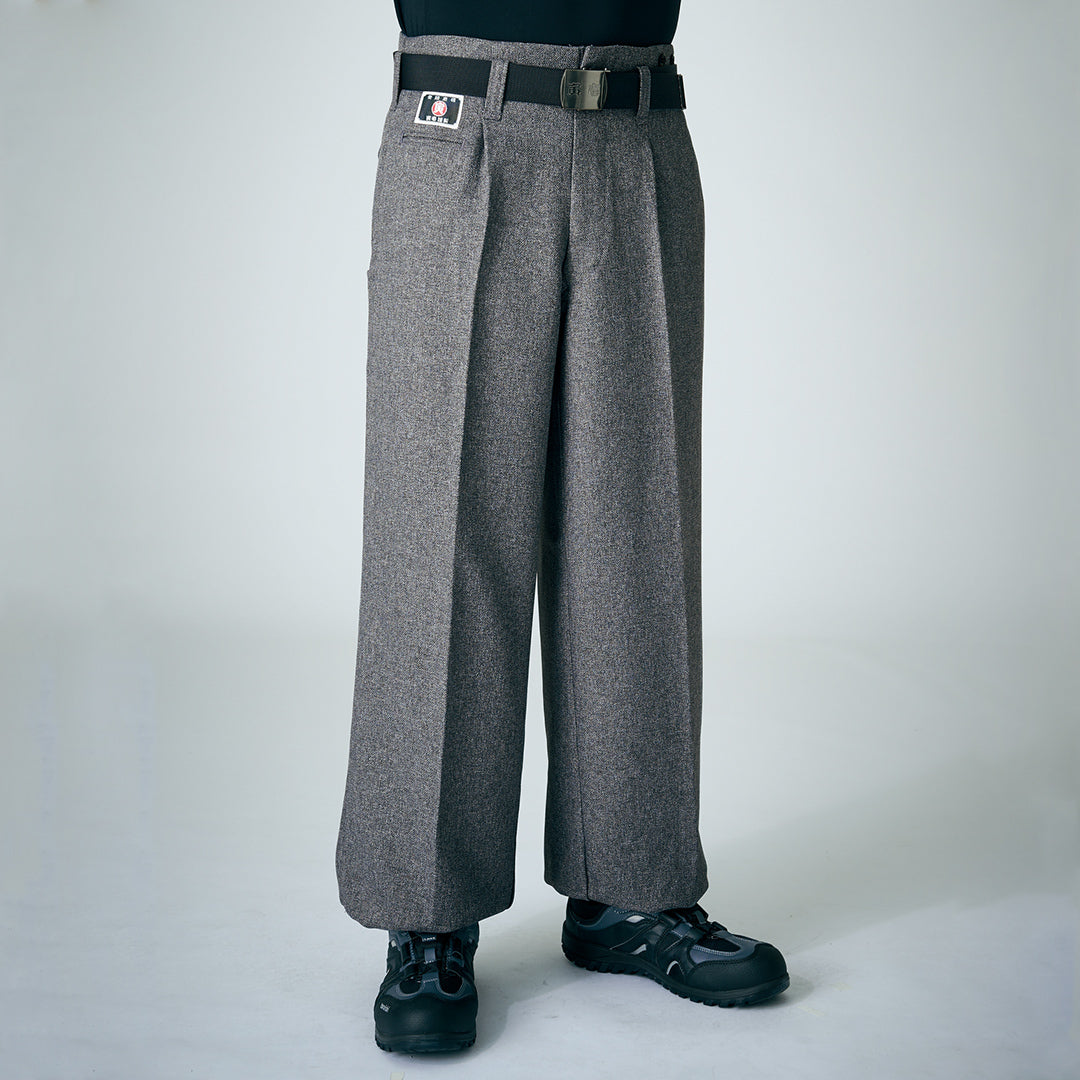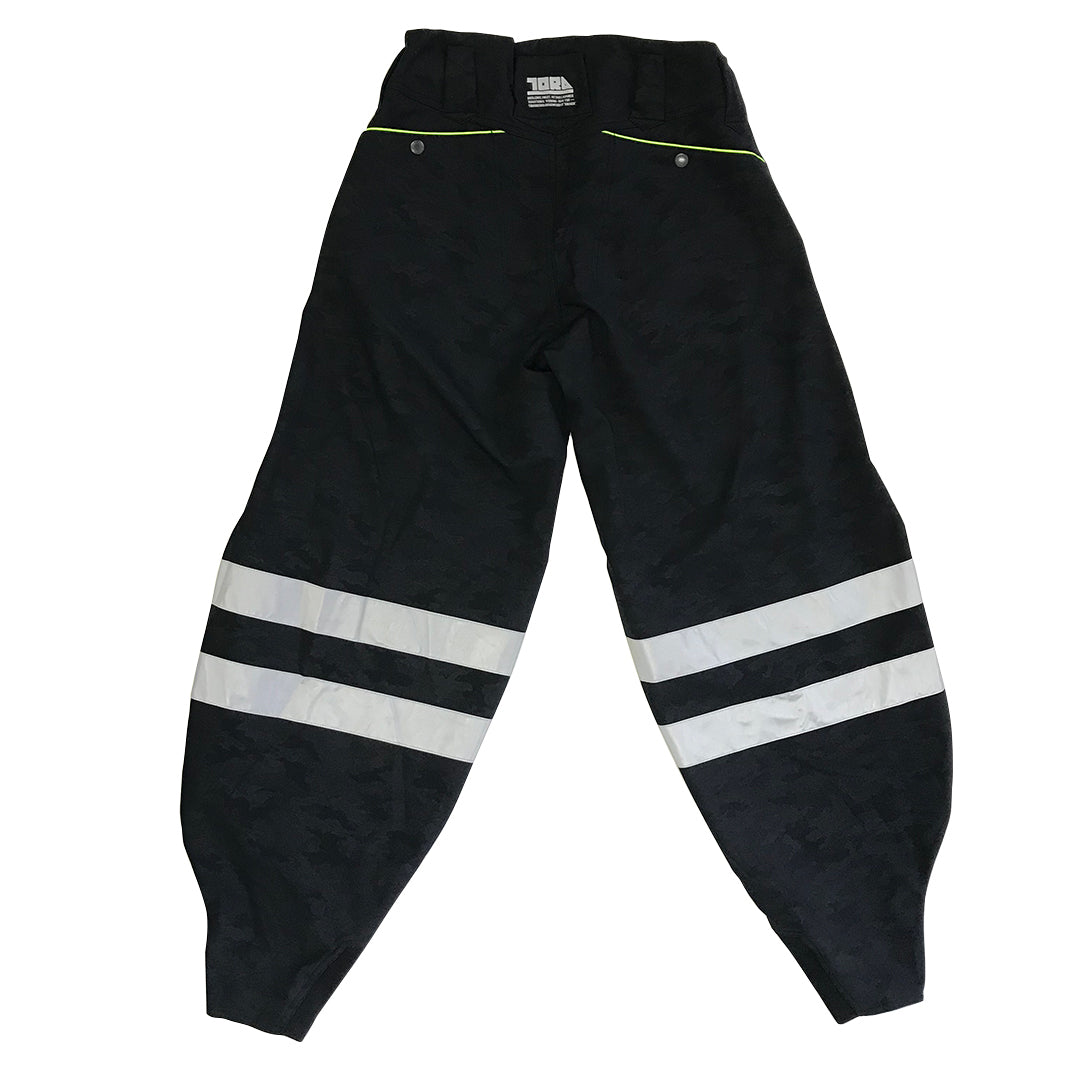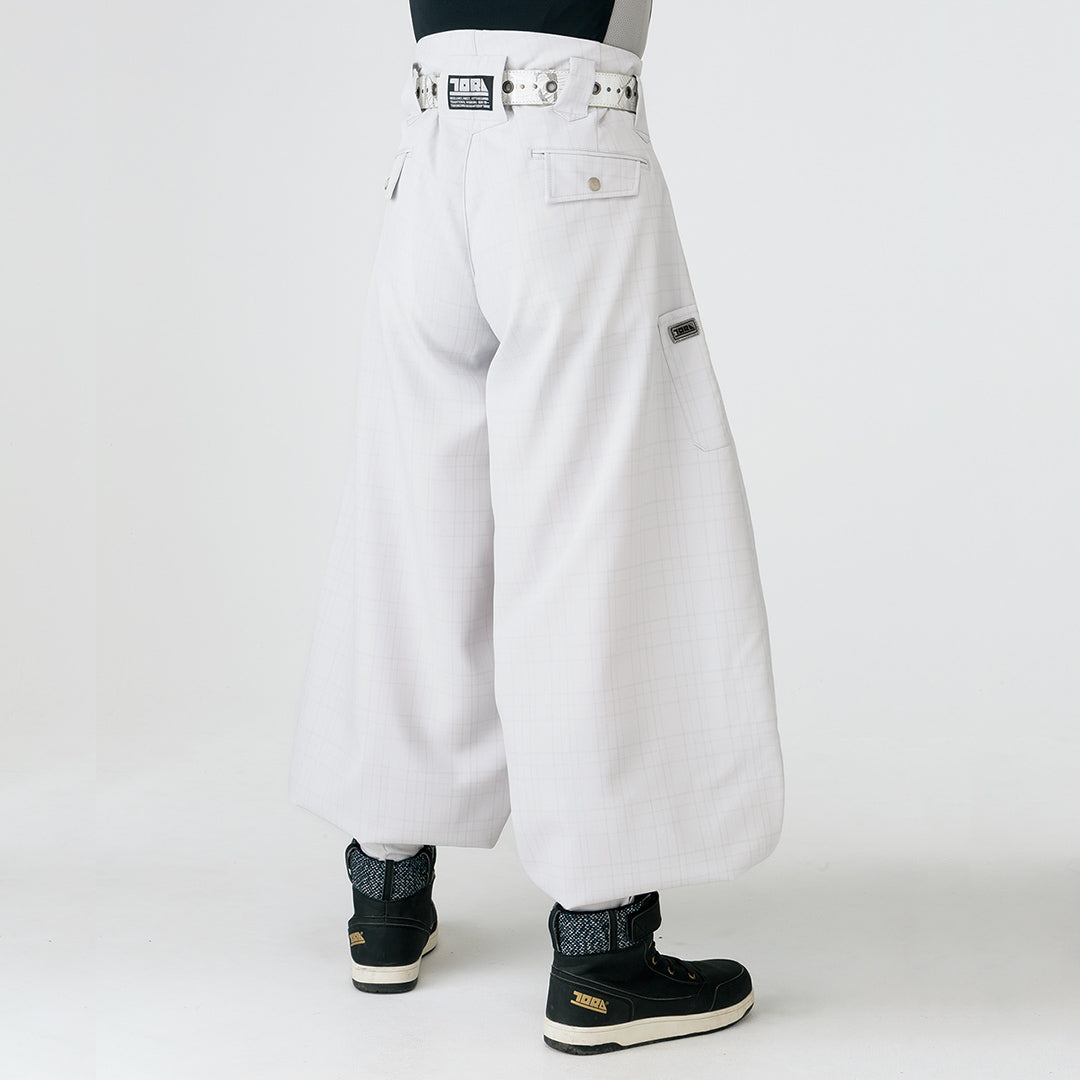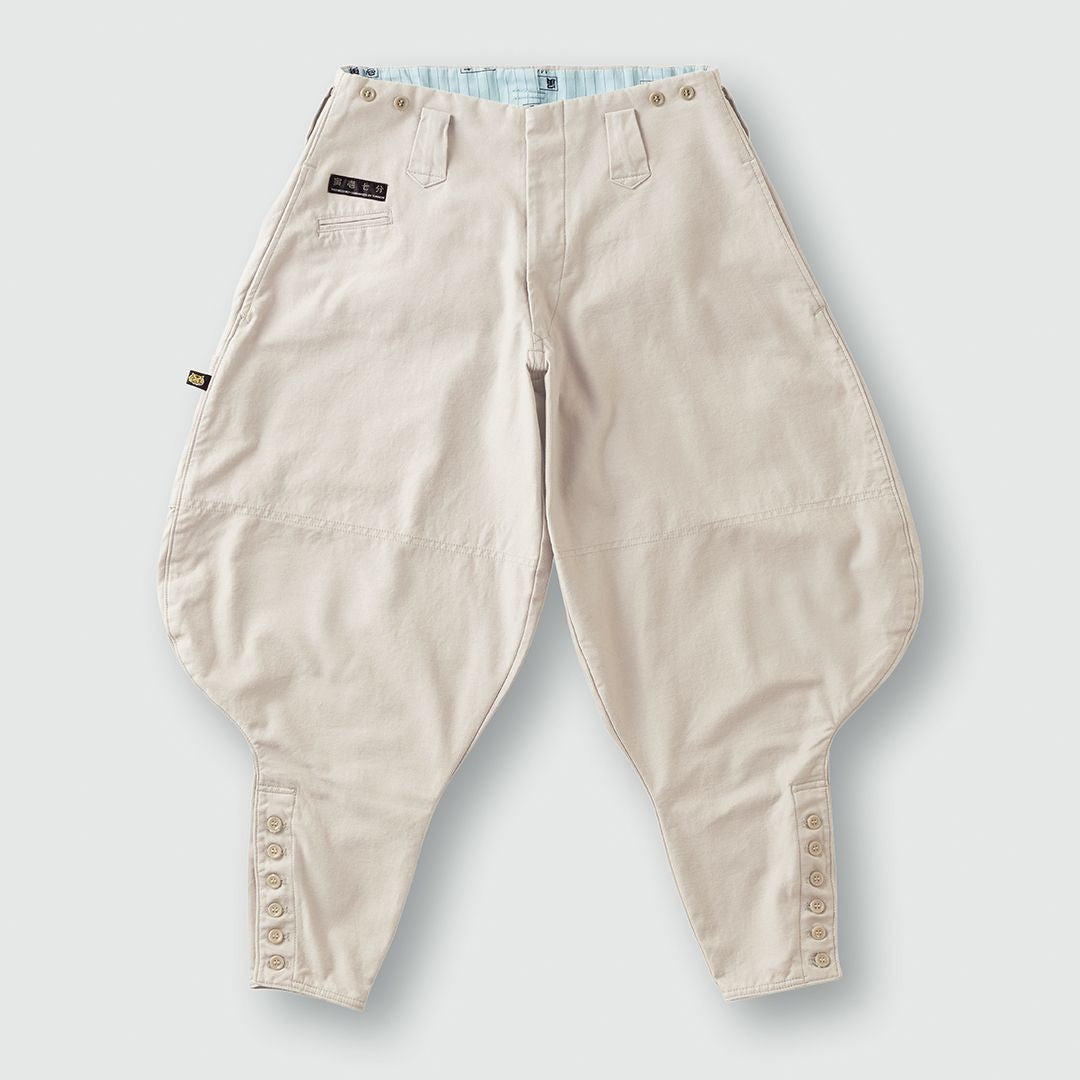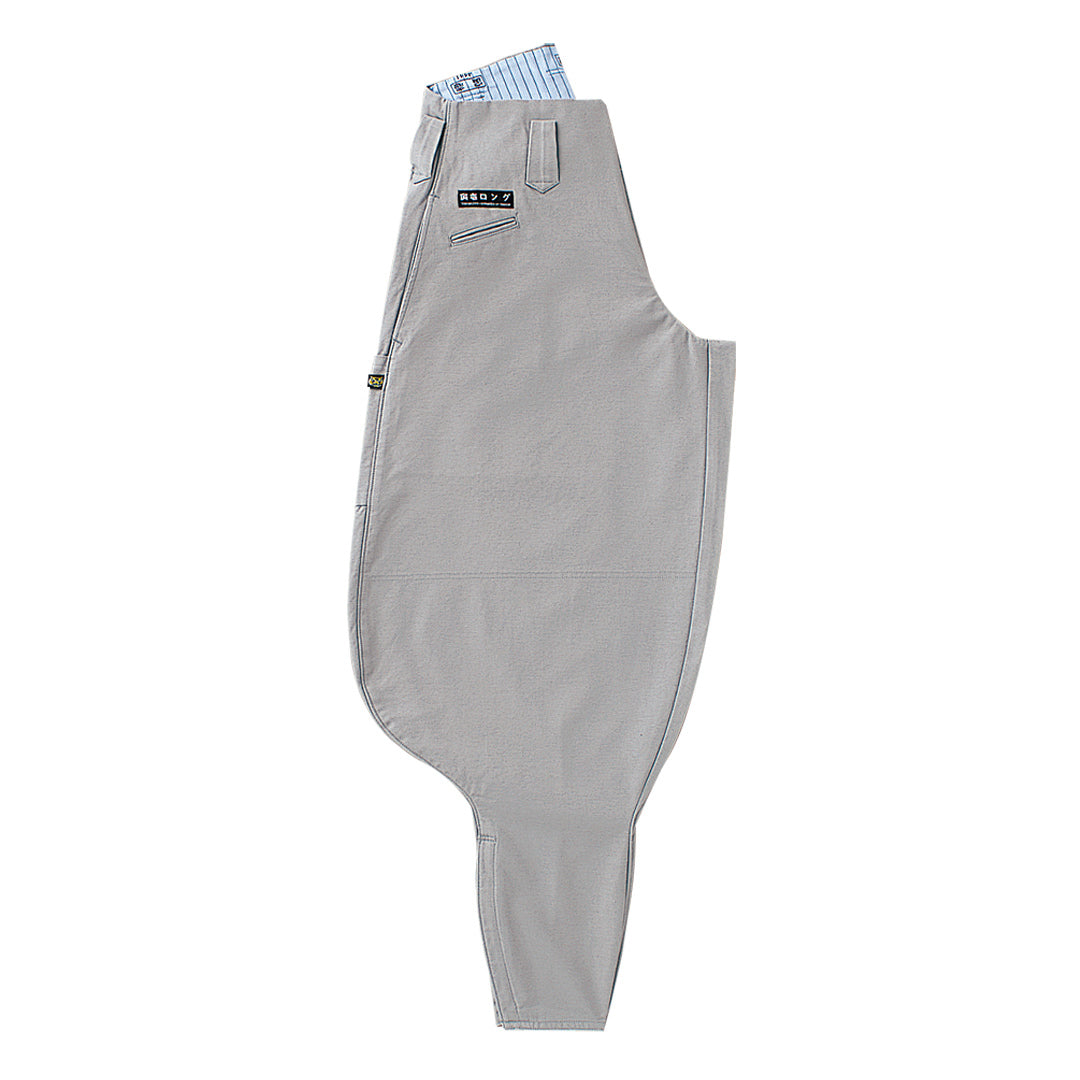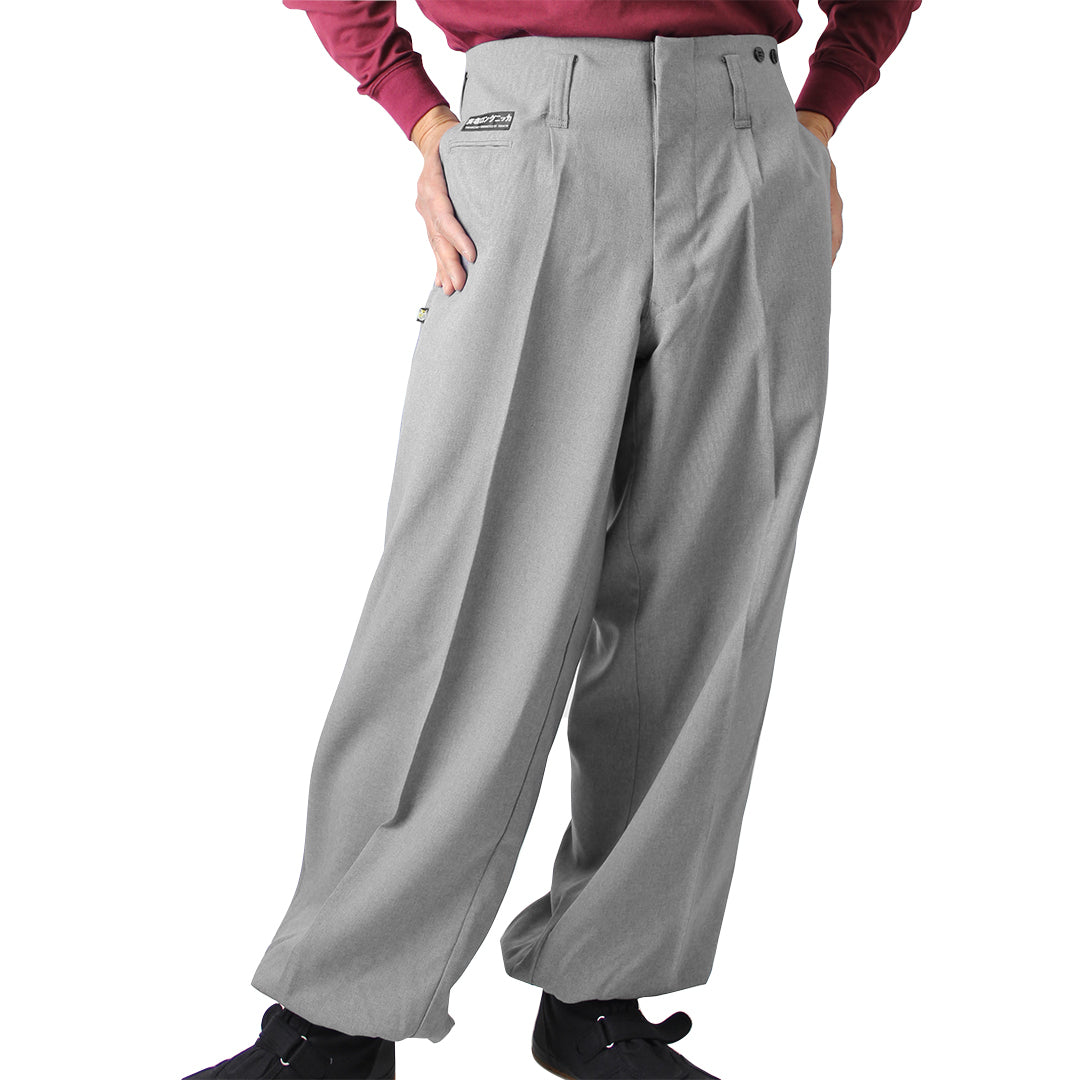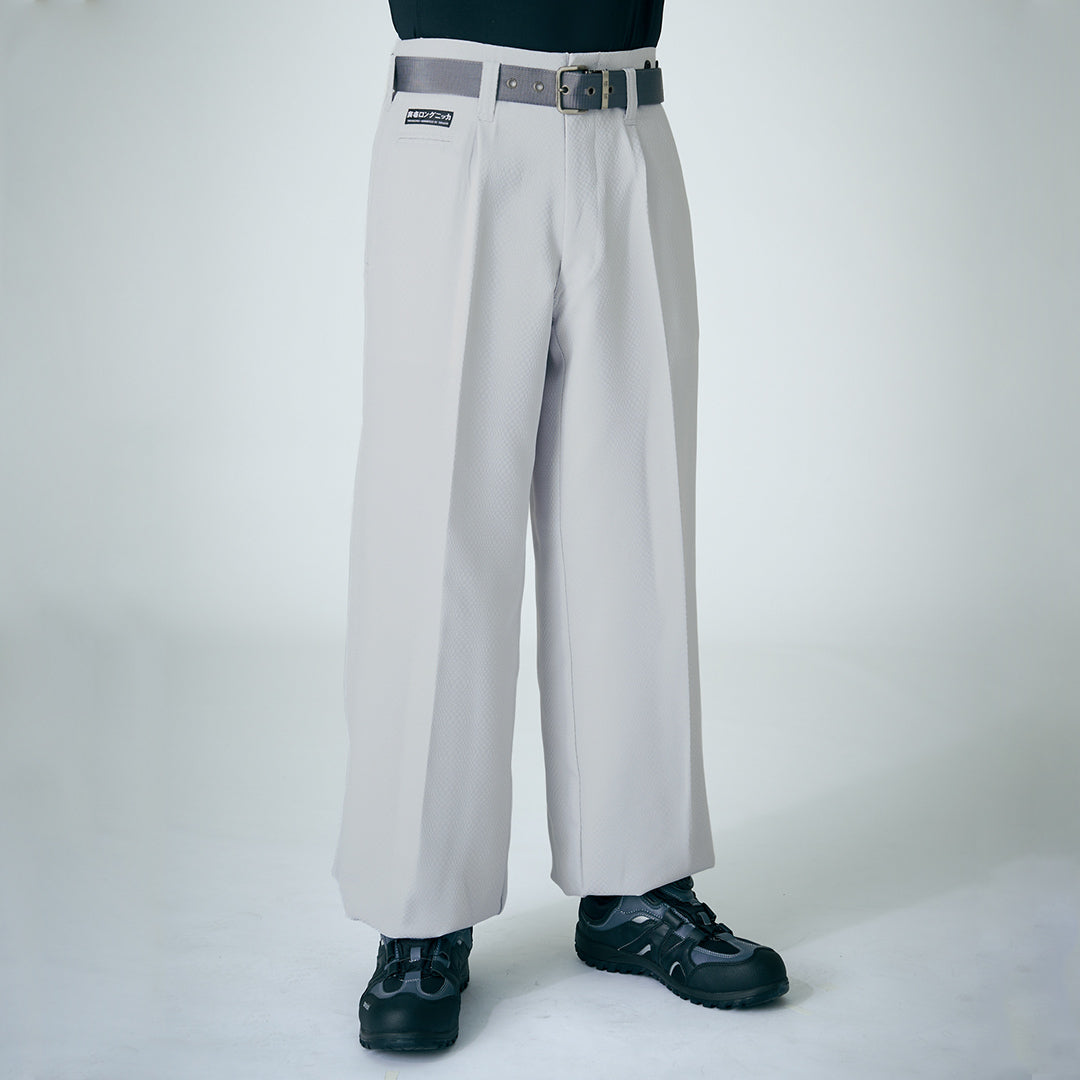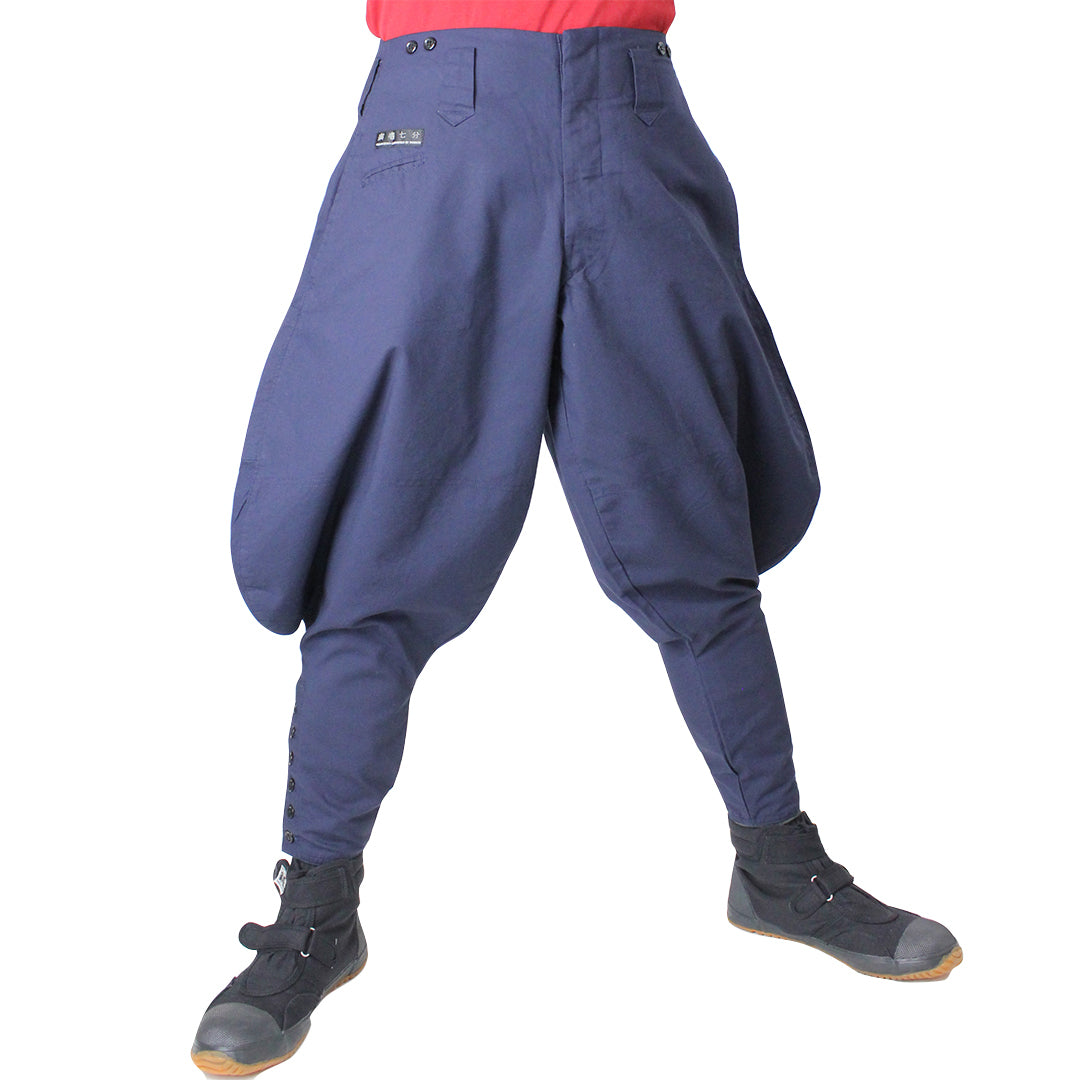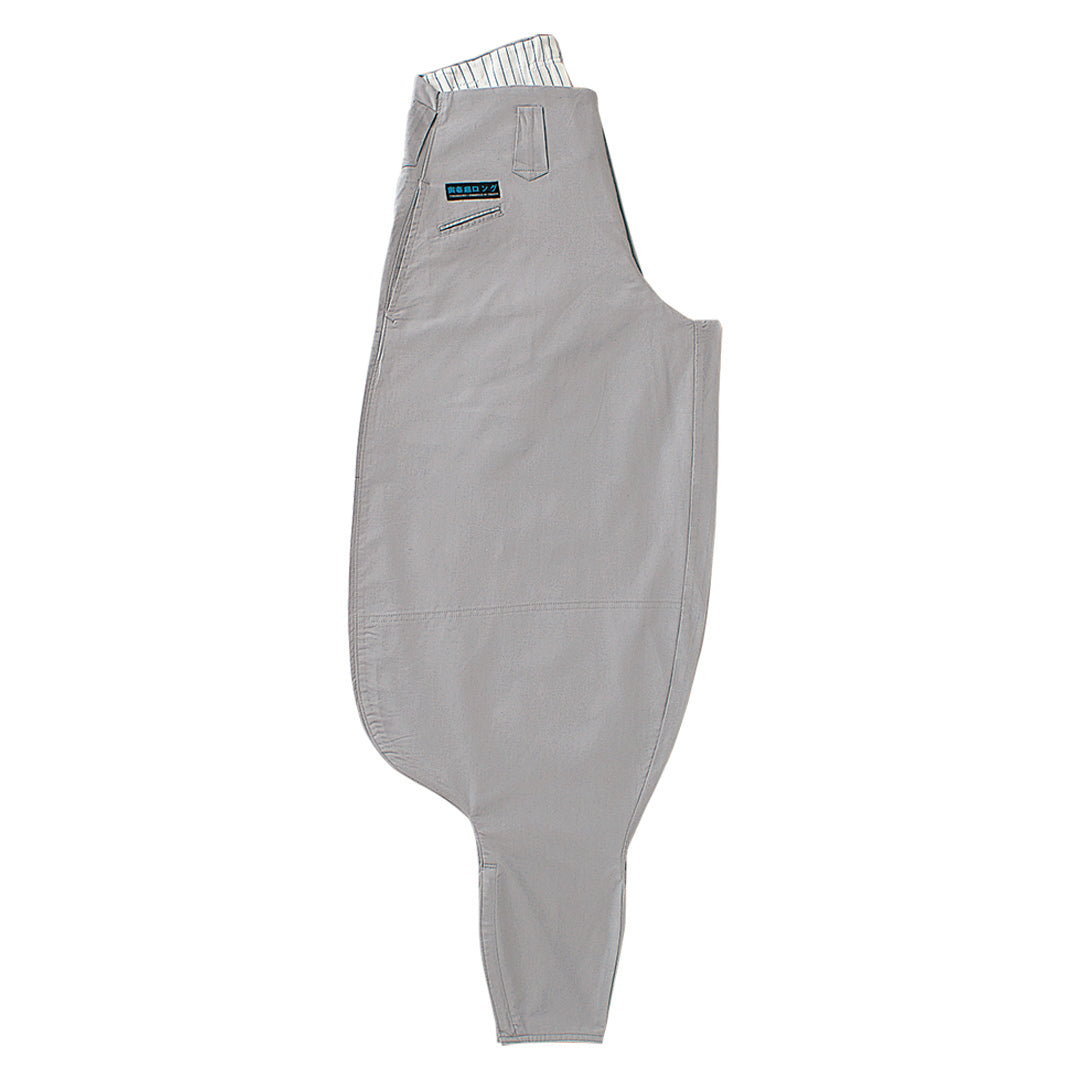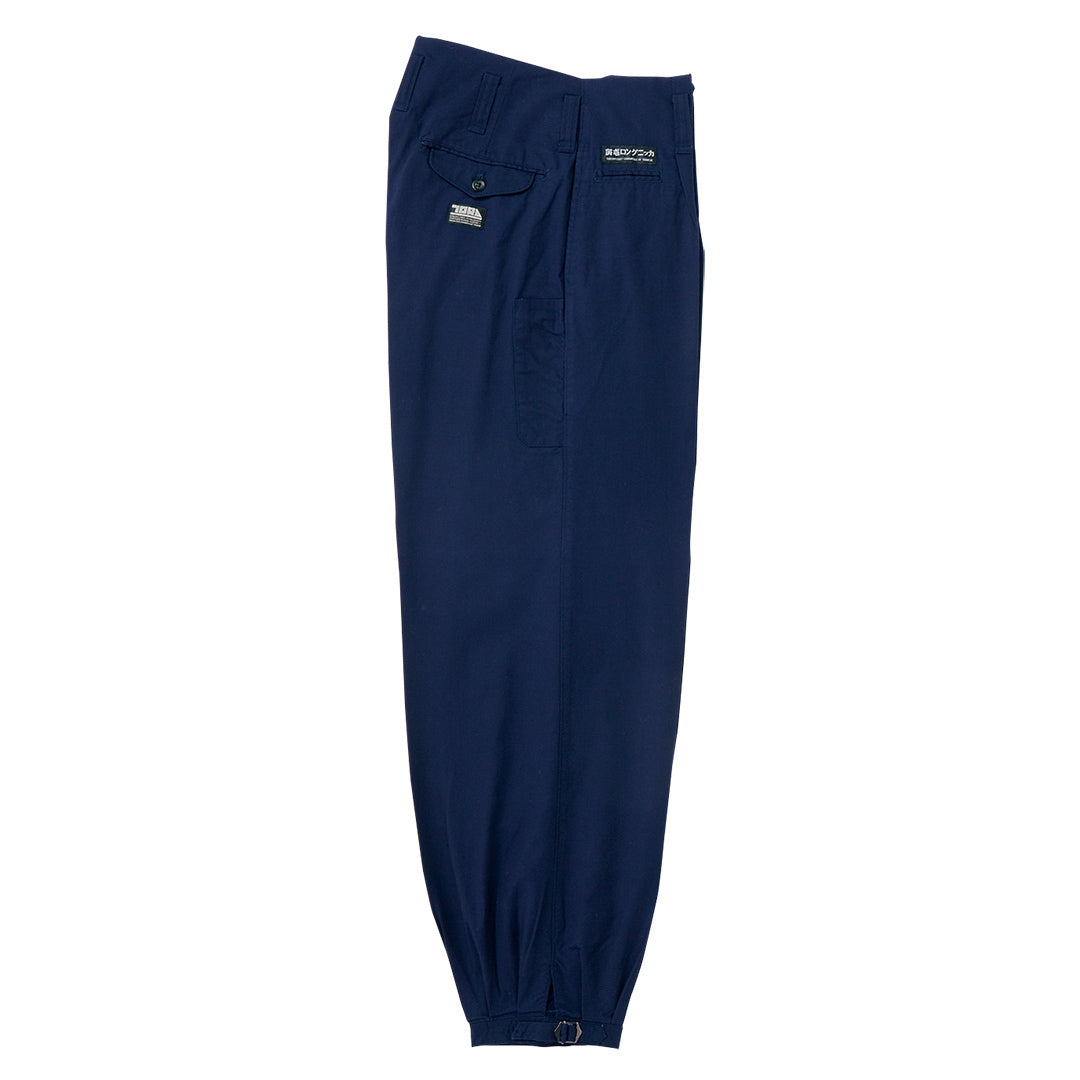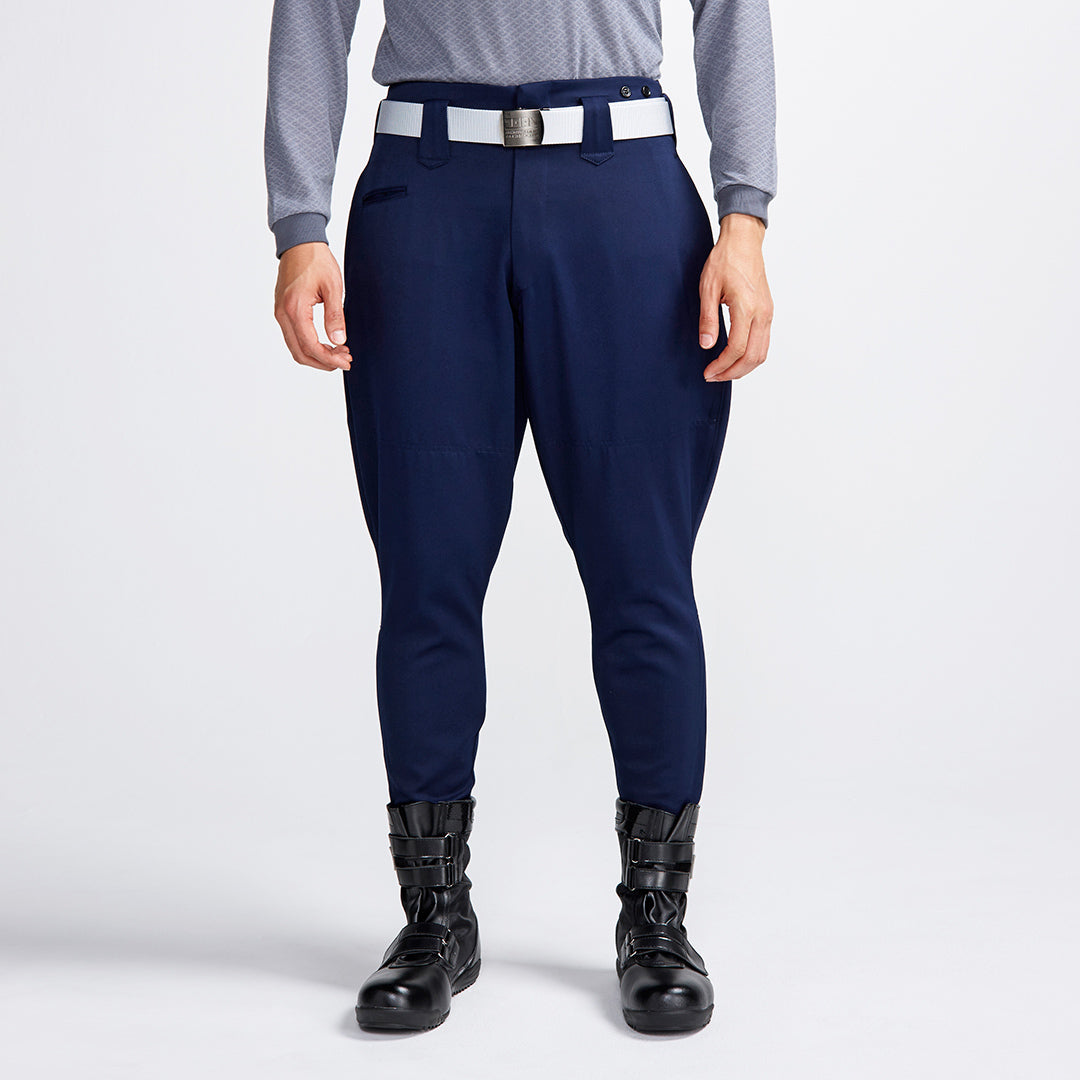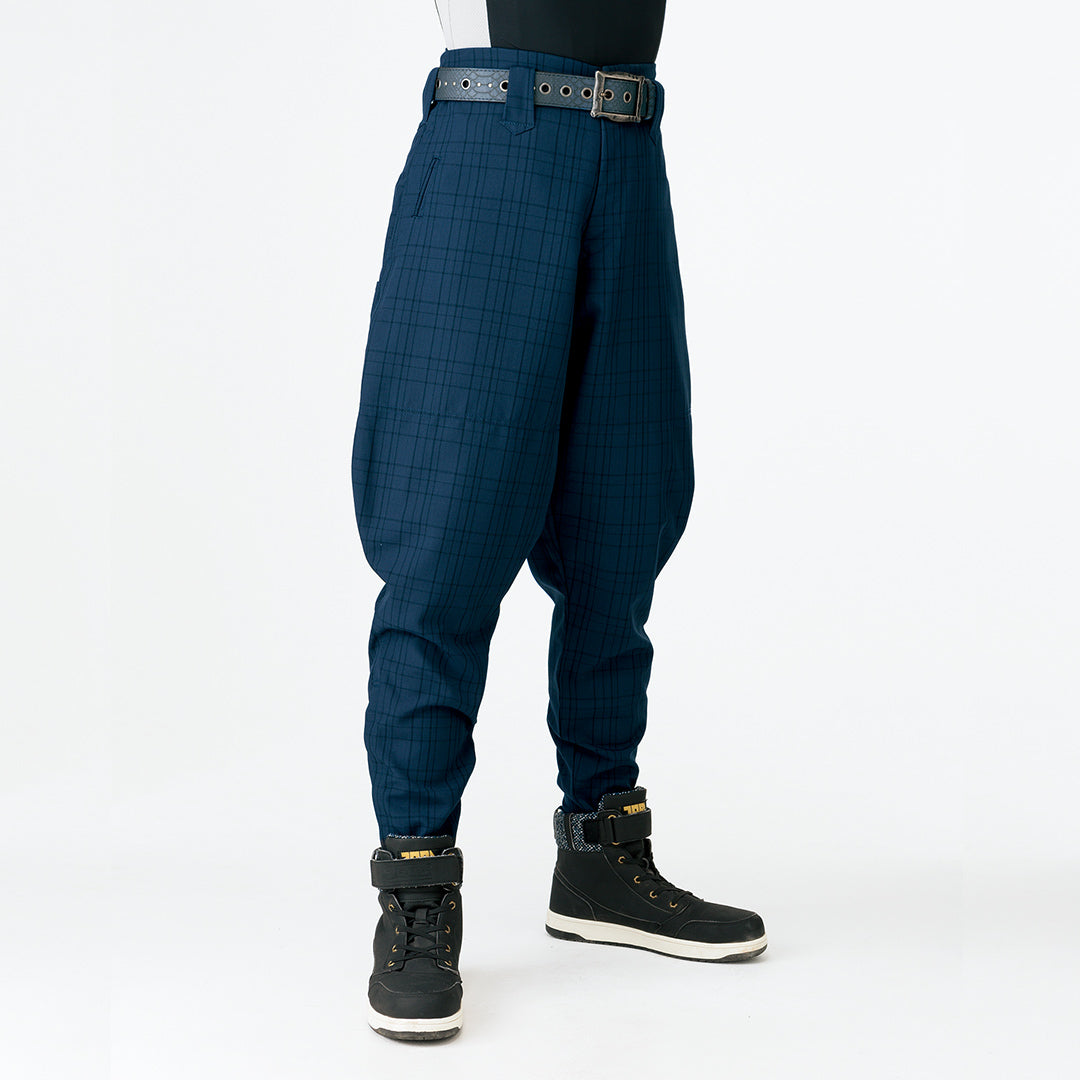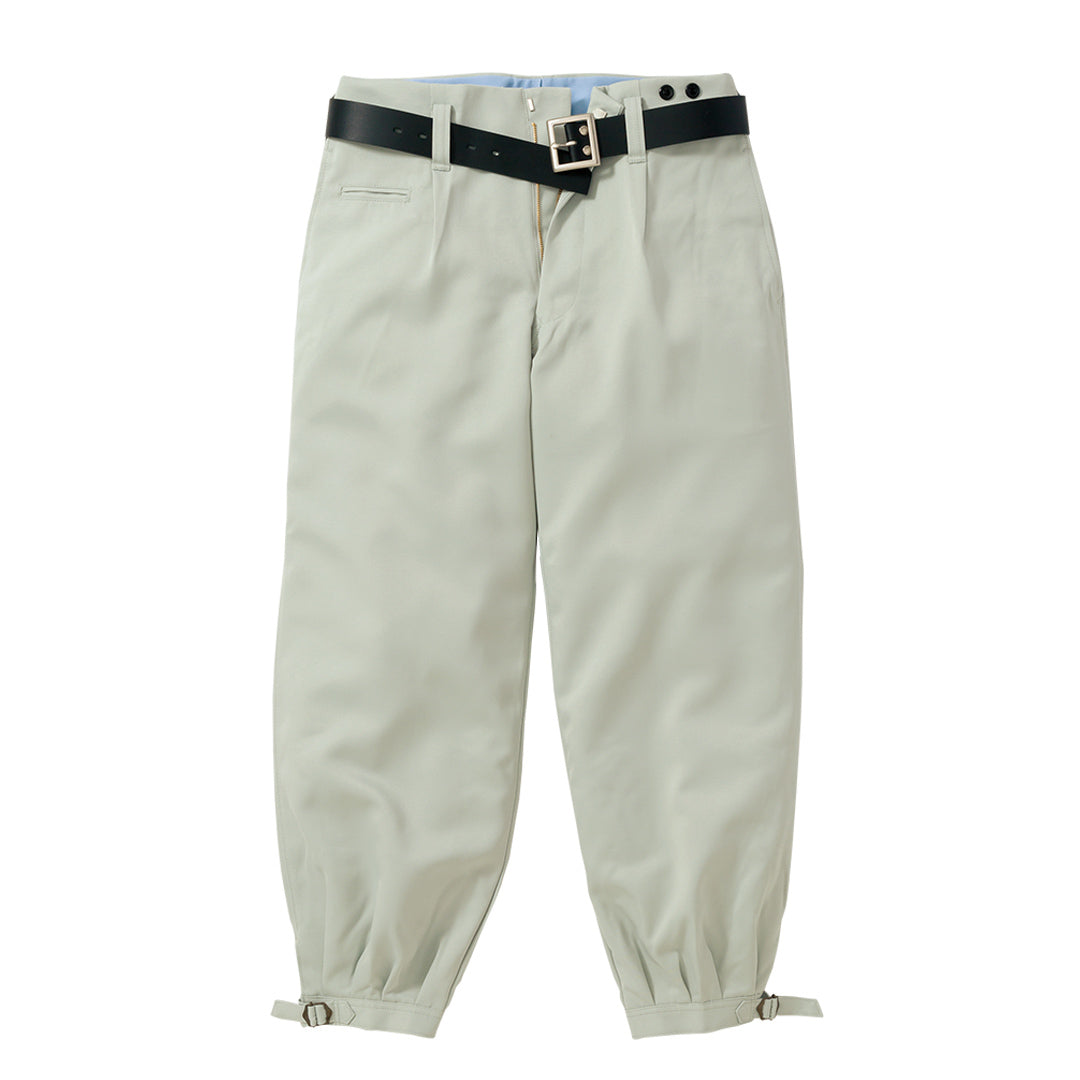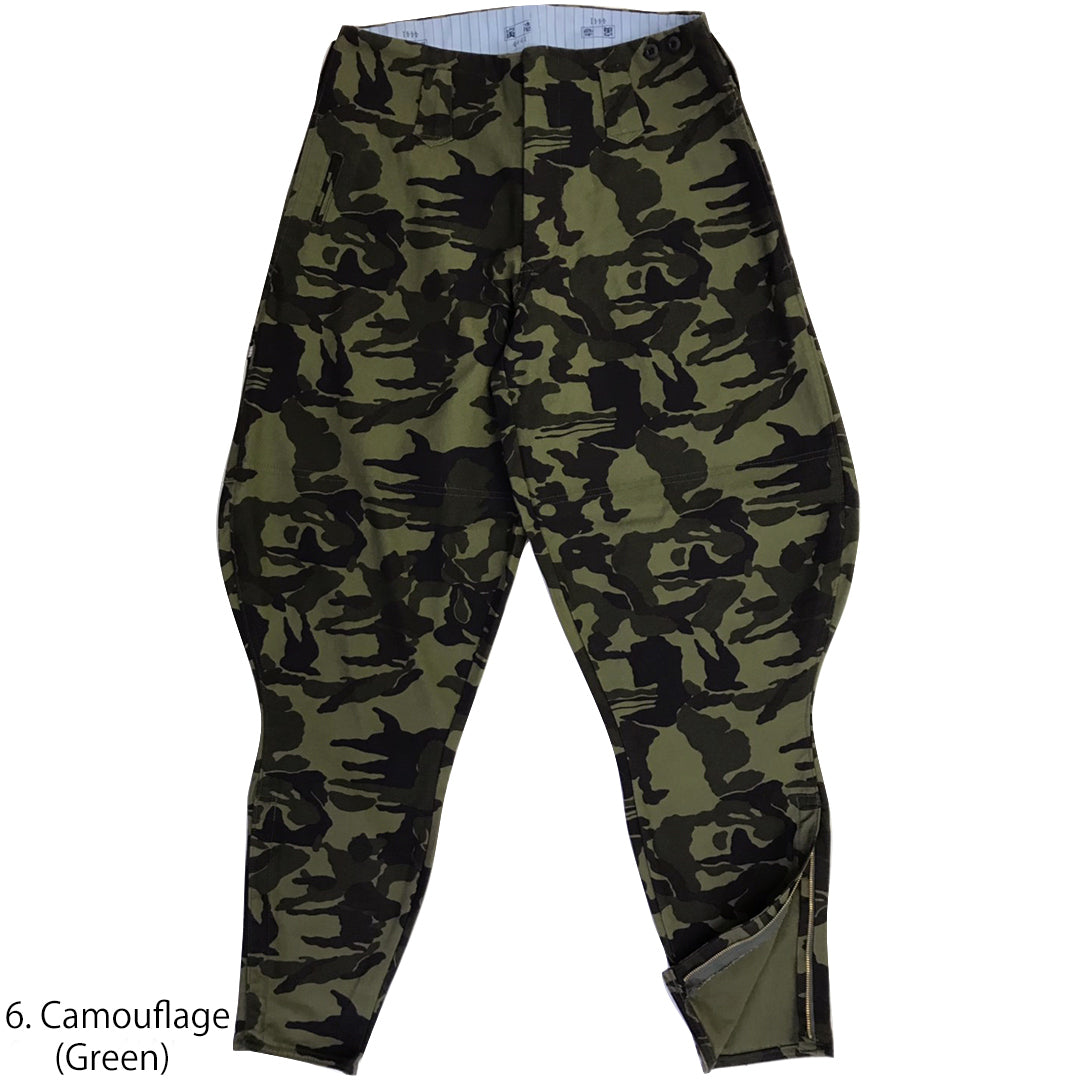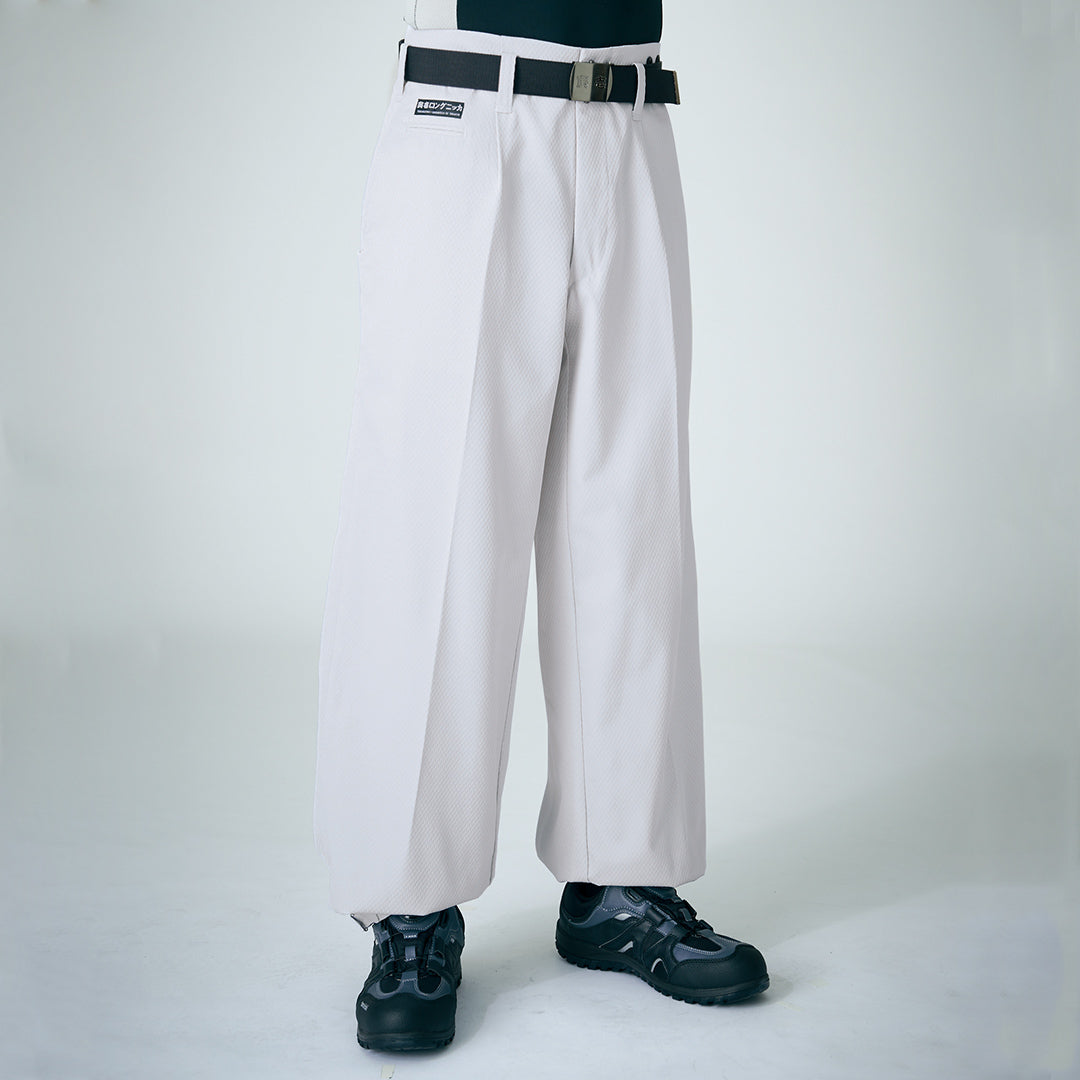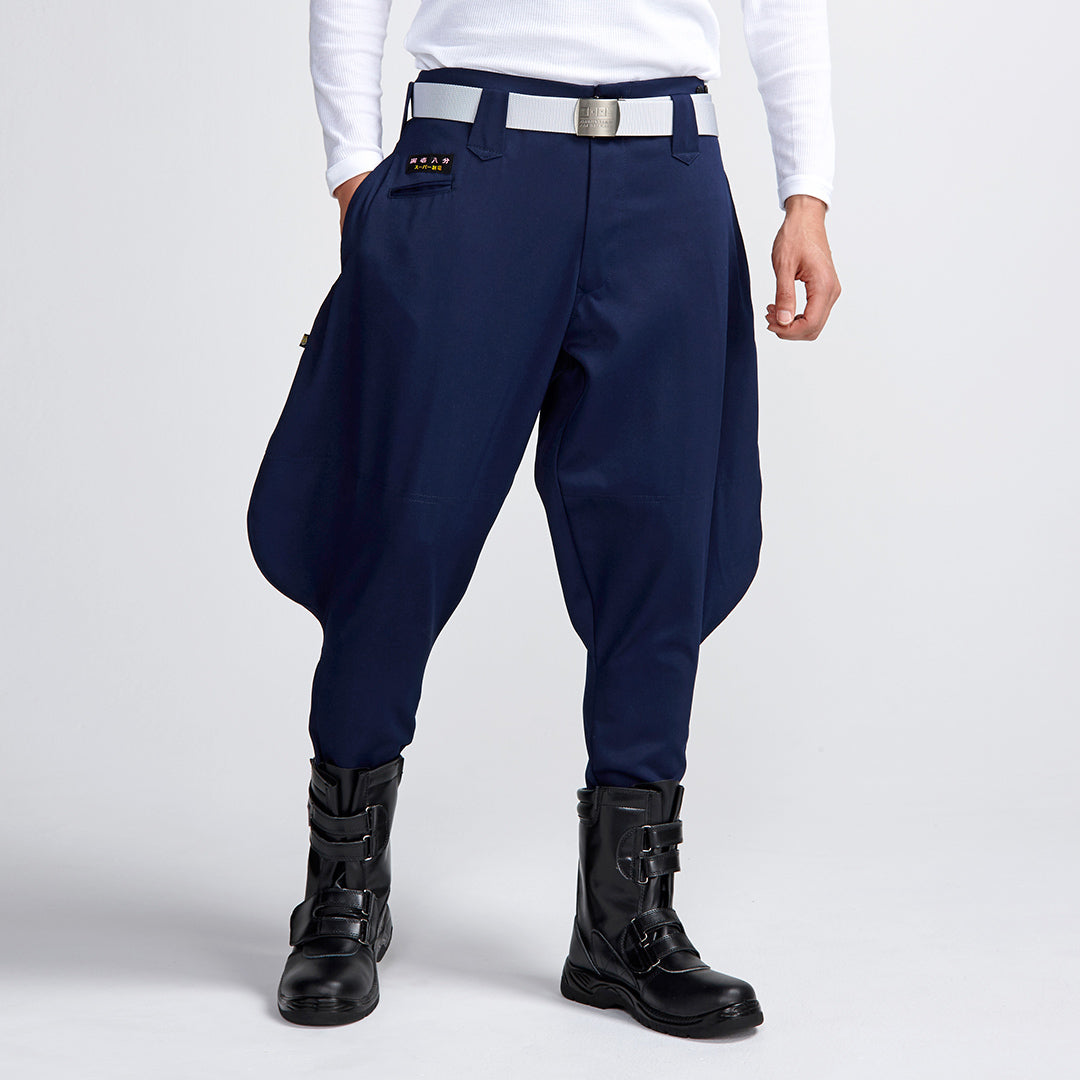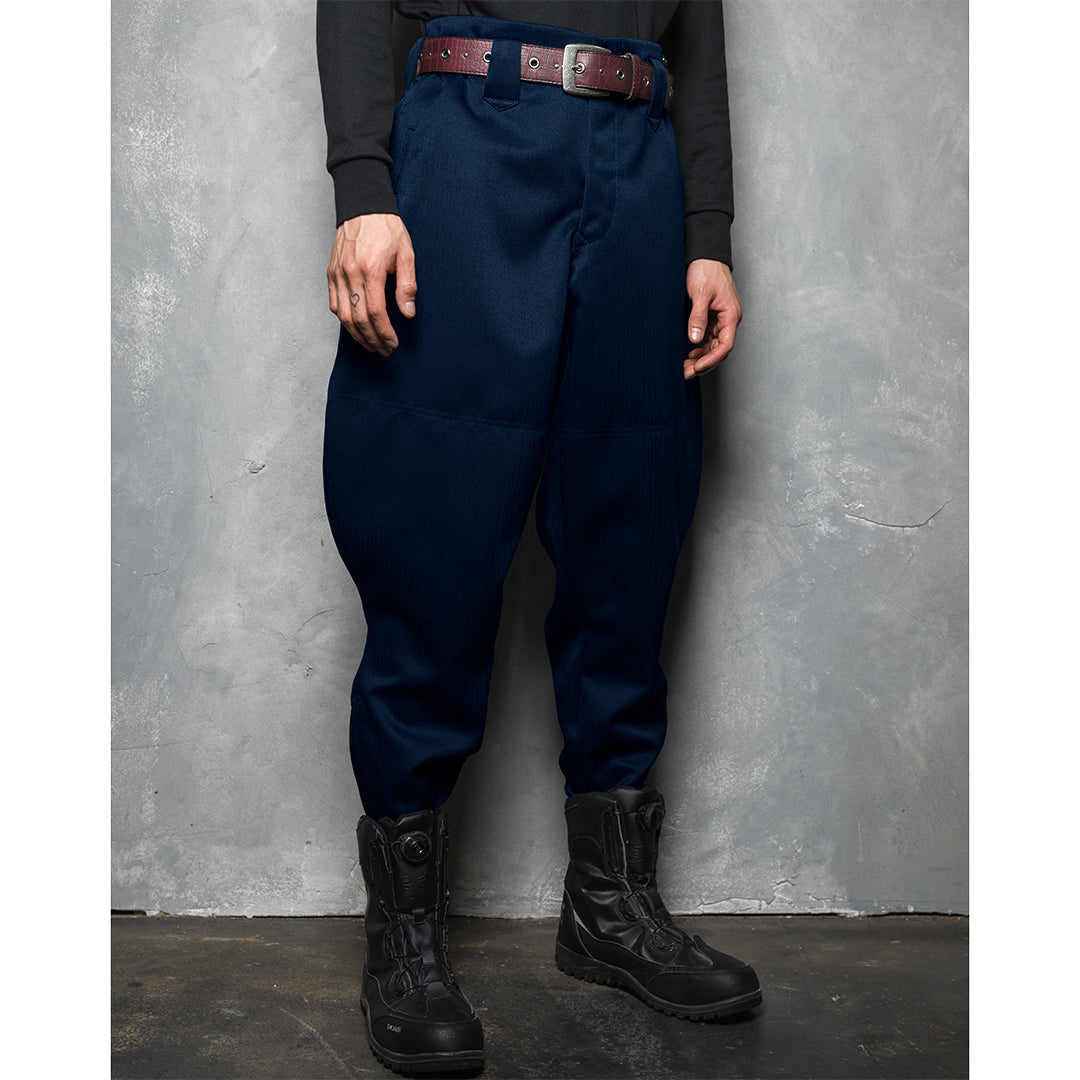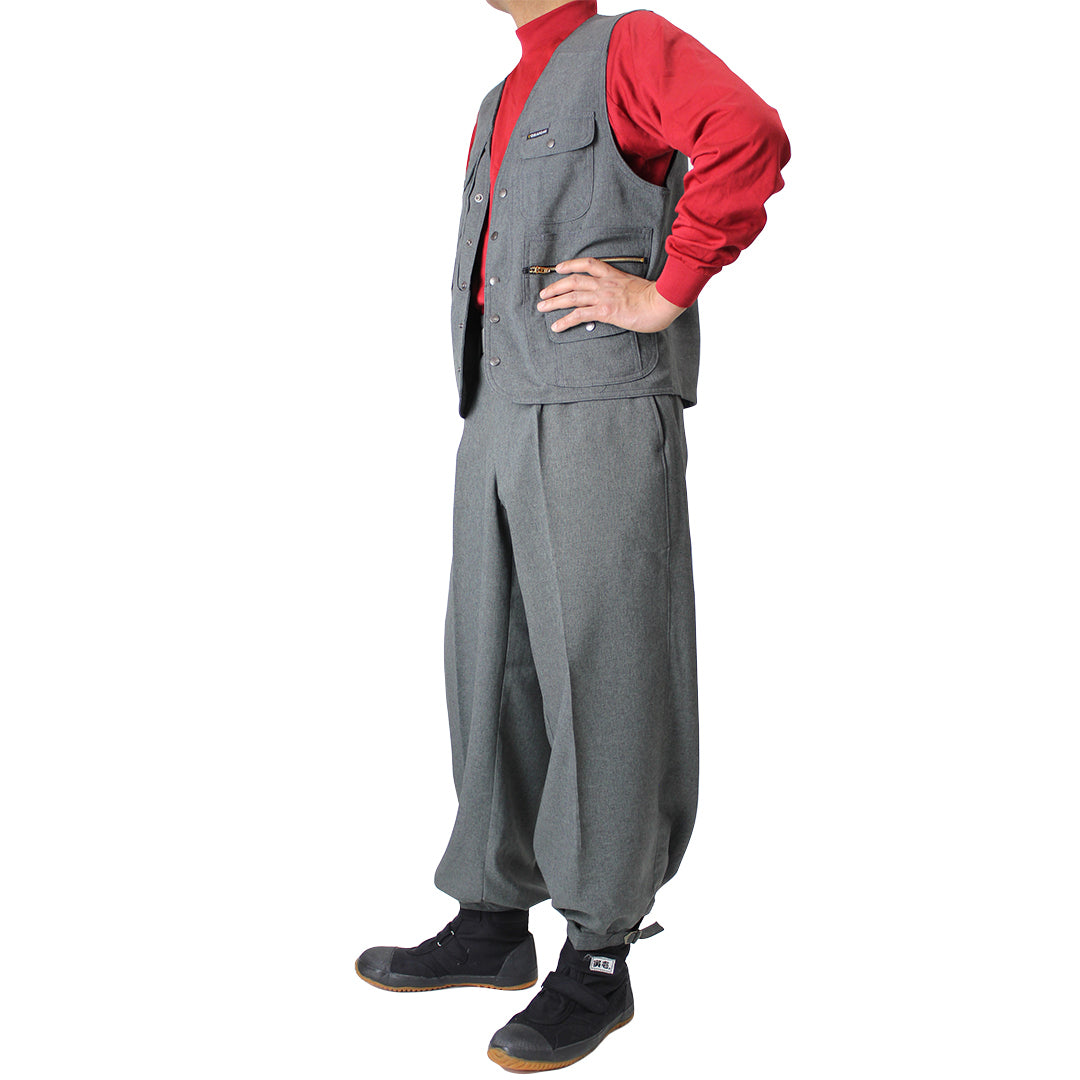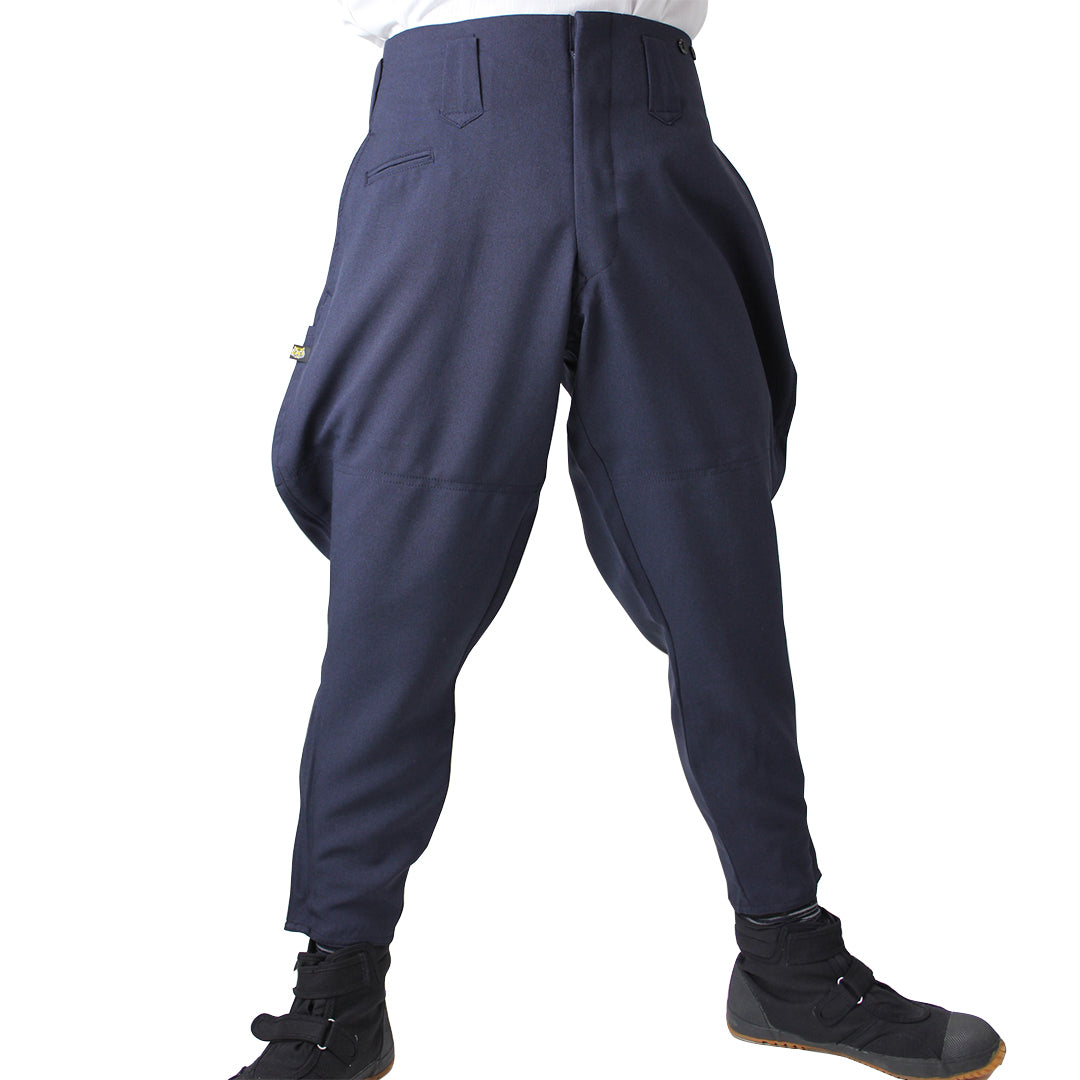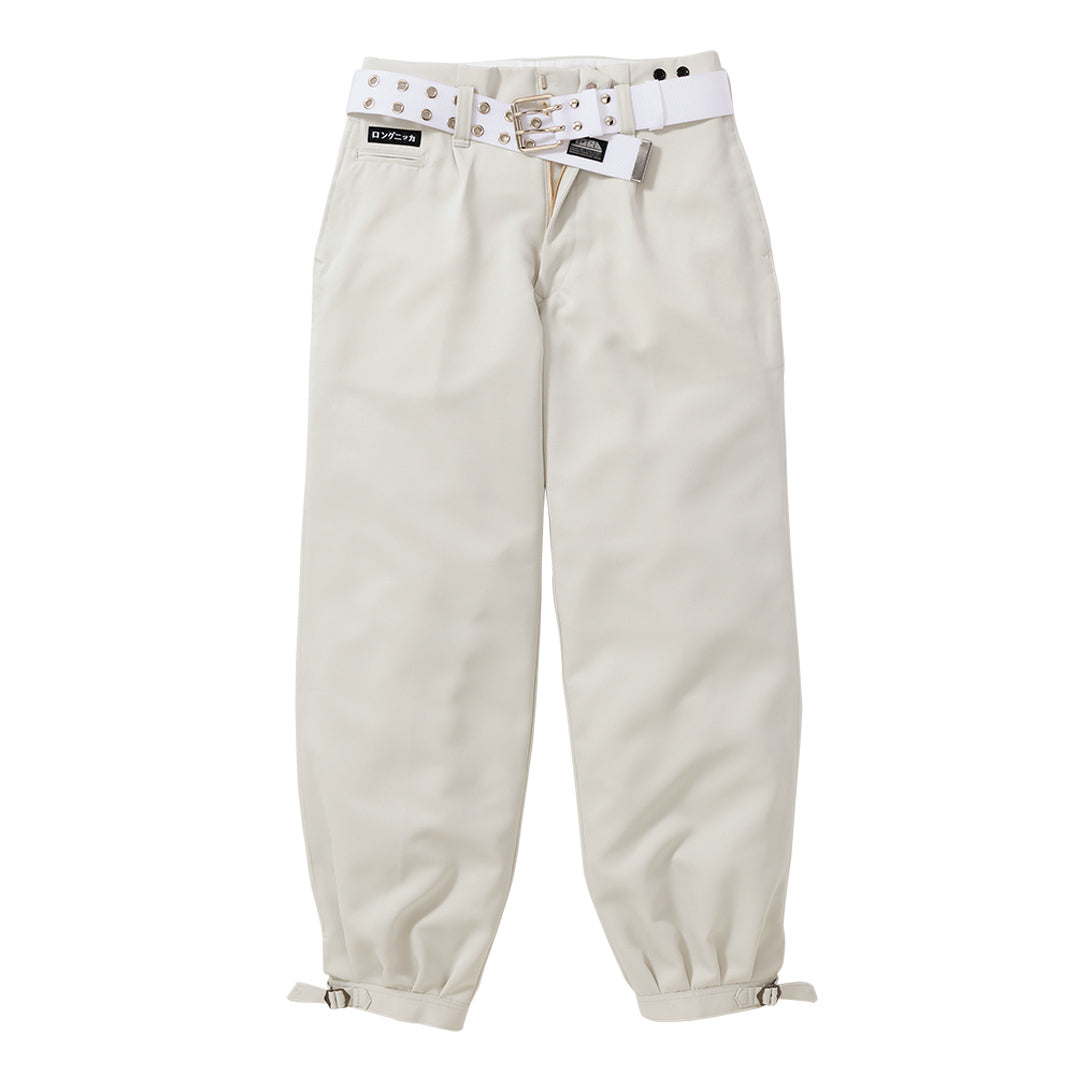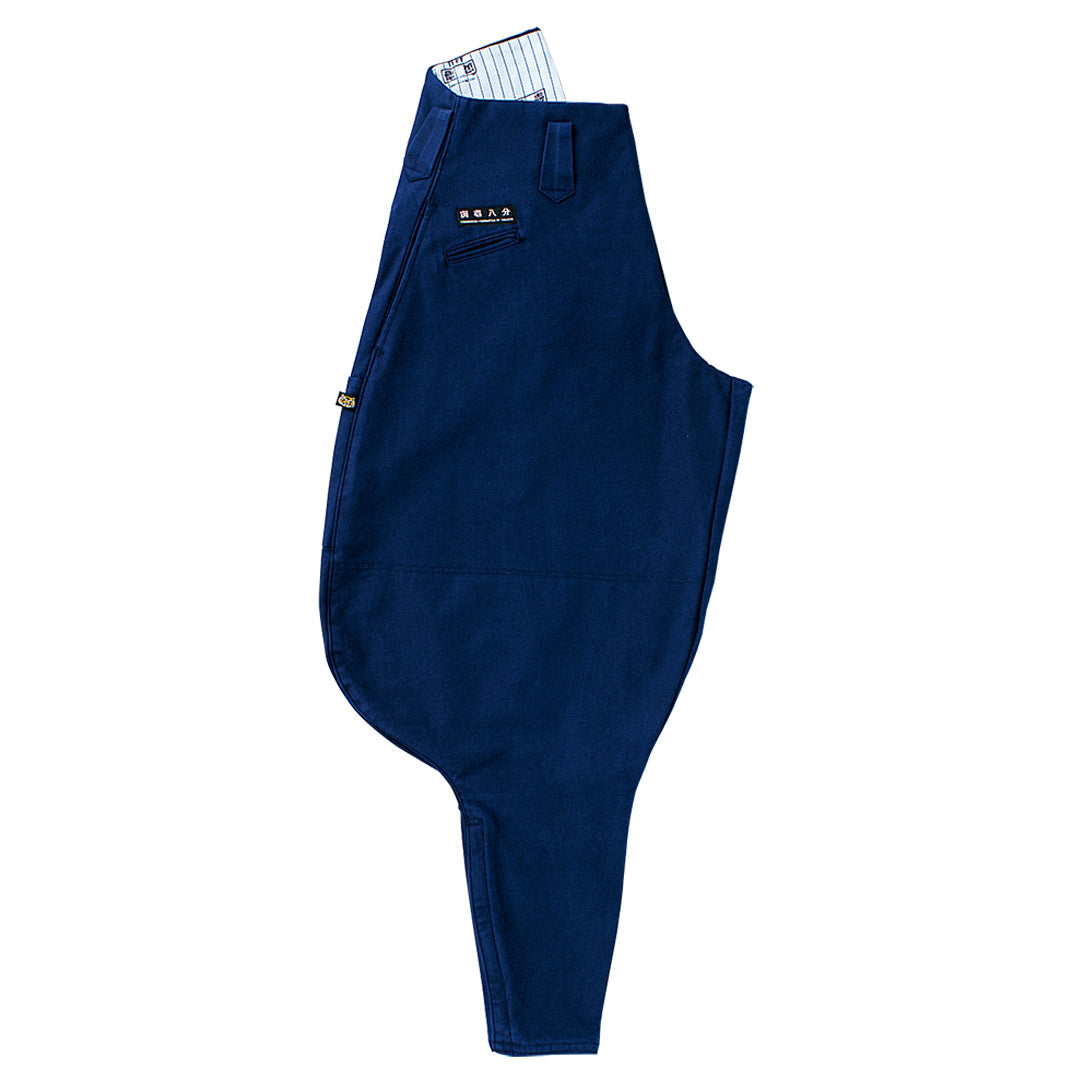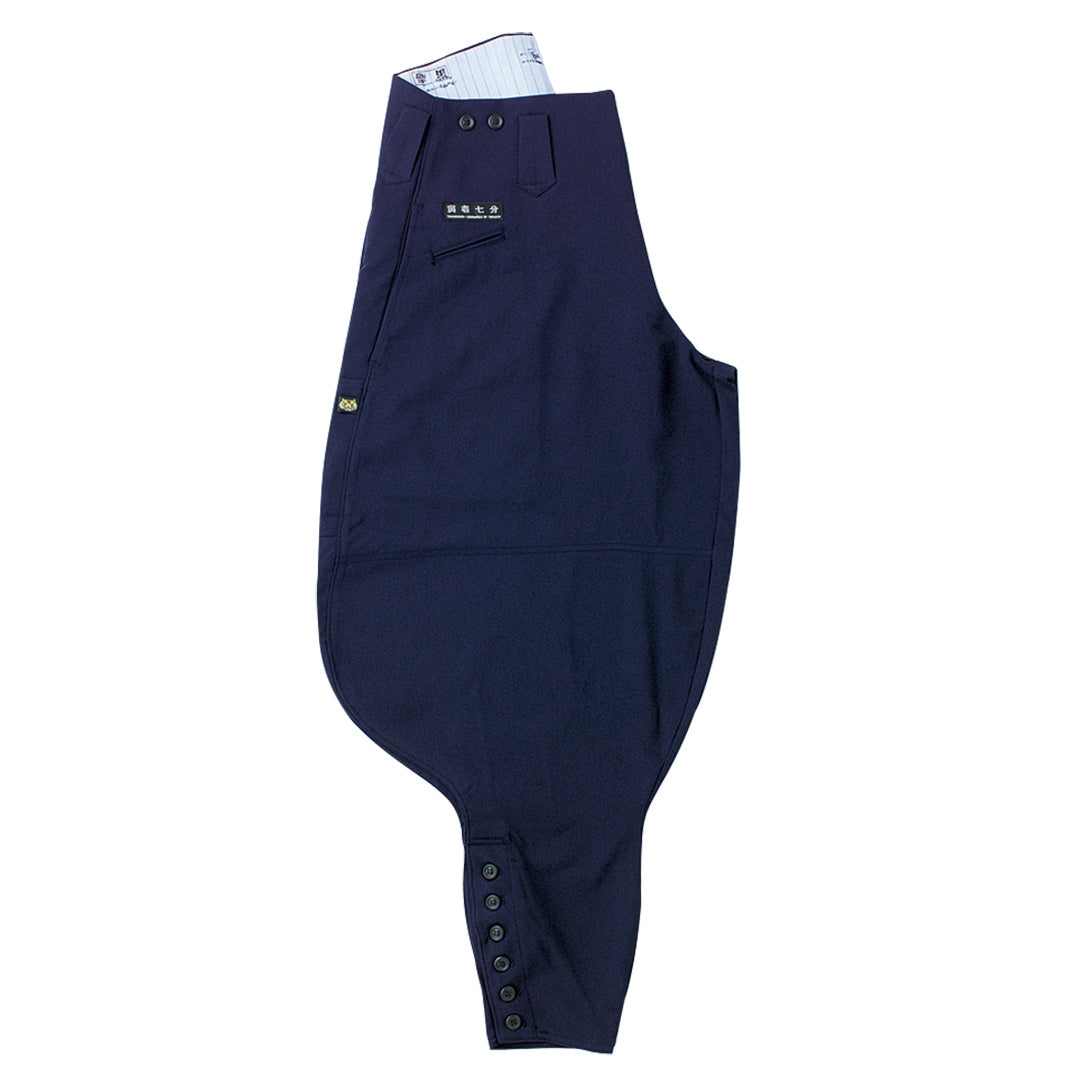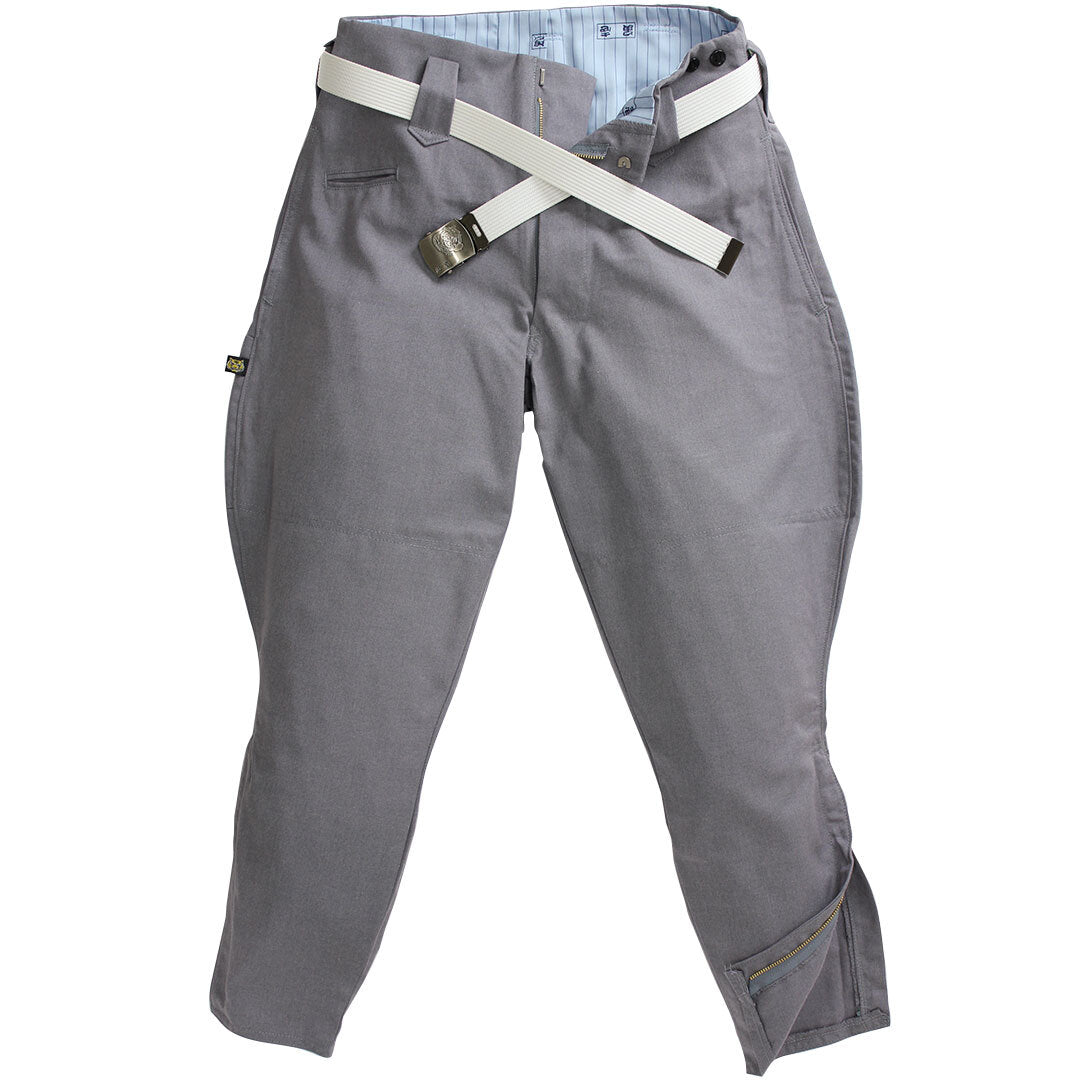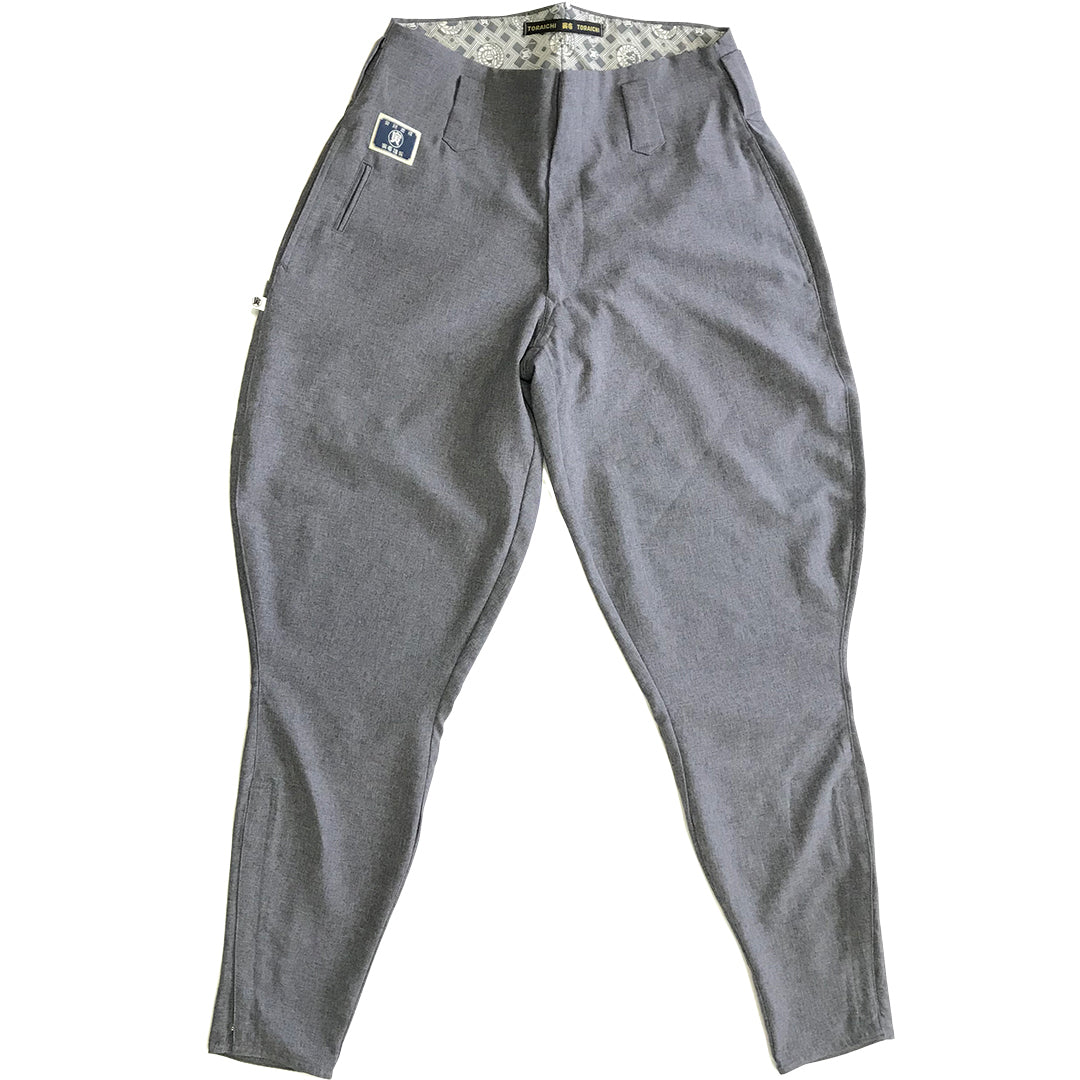Made for those who move with intent. Tobi Pants fuse the precision of Japanese craftsmanship with the power and confidence of modern workwear. Every step, every motion — built to stand your ground
Frequently Asked Questions
FAQ 1: What is the point of Tobi pants?
Answer: Tobi pants are designed to give workers freedom of movement, safety protection, and a symbol of craft pride. The baggy legs allow easy climbing and squatting, shield against sparks and debris, and even help detect hazards by brushing against obstacles. This unique combination turns a distinct look into a functional tool for construction and trade work.
Real Results: Worker reports and trade write-ups commonly describe reduced fatigue and easier mobility when using Tobi pants compared to standard trousers.
Takeaway: Tobi pants are not just style—they are safety and mobility in one.
FAQ 2: What does the Japanese word tobi mean?
Answer: In Japanese, tobi (鳶) means “kite,” the bird of prey. In a work context, it refers to scaffolders and high-rise construction workers, admired for agility and skill at great heights. This trade nickname is the origin of “Tobi pants,” the trousers worn by these craftsmen to perform their demanding tasks.
Real Results: Historical accounts note that the word “tobi” has long referred to scaffolders, reflecting their role as highly skilled artisans.
Takeaway: Tobi means both kite and craftsman—fusing symbolism and skill.
FAQ 3: What’s the origin of the balloon-leg silhouette in Tobi pants?
Answer: The balloon-leg silhouette evolved from Japan’s adaptation of knickerbockers in the 1940s. Initially a uniform style, it developed into specialized workwear for construction. The loose fit improved climbing, squatting, and bending, while also serving safety functions like brushing obstacles or catching wind to gauge conditions. Today, it stands as a hallmark of Japanese craftsmanship.
Real Results: Fashion and workwear histories describe the postwar spread of tobi-style trousers alongside Japan’s construction growth.
Takeaway: Function first—style followed, tradition remained.
FAQ 4: Why are Tobi pants popular among Japanese construction workers and craftsmen?
Answer: Tobi pants are valued for combining functionality and cultural identity. Their loose cut below the knee enables agility in high-mobility tasks, while also serving as a safety sensor. They protect against sparks and debris, and at the same time, symbolize pride in craftsmanship. For many, wearing Tobi pants means belonging to a proud tradition.
Real Results: Trade publications and interviews highlight strong preference among scaffolders for the comfort, mobility, and symbolism of tobi-style pants.
Takeaway: Tobi pants unite utility with heritage.
FAQ 5: Why Japanese worker pants?
Answer: Japanese worker pants, including Tobi pants, are tailored to the needs of skilled trades. Loose yet tapered legs allow ease in climbing, squatting, and bending while offering protection. Over decades, they’ve evolved from pure utility to a cultural symbol of craftsmanship and resilience, representing the identity of Japanese construction culture.
Real Results: Comparative user feedback often cites improved range of motion with Japanese worker pants versus conventional jeans or cargo pants.
Takeaway: Japanese worker pants embody function, pride, and tradition.
FAQ 6: Do the loose legs of Tobi pants ever pose a safety hazard on-site?
Answer: While the balloon-leg design provides safety benefits, it can also pose risks if not worn properly. The extra space shields against sparks and debris, but the wide cut can snag on equipment or materials. Many sites allow them only if cuffs are secured tightly into work tabi boots. Safety rules vary depending on site standards.
Real Results: Some construction companies and sites in Japan restrict or ban nikkapokka (tobi-style) pants on high-risk tasks due to snagging concerns reported by supervisors and workers.
Takeaway: Secure your cuffs—freedom needs discipline.
FAQ 7: How do Tobi pants perform in hot vs. cold weather?
Answer: Tobi pants are adaptable but not weatherproof on their own. In heat, workers pair them with cooling jackets and innerwear to promote airflow. In cold, they use thermal base layers, heat packs, and layering techniques. The pants provide a foundation of mobility, while gear combinations manage comfort in extreme climates.
Real Results: Field tips from tradespeople show better comfort in heat when Tobi pants are combined with fan-equipped jackets; in cold, thermal base layers are commonly recommended.
Takeaway: Tobi pants adapt, but smart layering wins comfort.
FAQ 8: Have Tobi pants influenced fashion outside of Japan?
Answer: Tobi pants have crossed into global streetwear and even high fashion. Designers appreciate their bold silhouette, combining heritage with modern styling. From Tokyo to Paris, they’ve been seen on runways and adopted by streetwear communities, redefining functional workwear into a statement of identity.
Real Results: Fashion media in Japan and abroad have noted the influence of tobi-style balloon legs on contemporary designers and streetwear brands.
Takeaway: From scaffolds to catwalks, Tobi pants travel worlds.
FAQ 9: How do I choose the right size?
Answer: Always check the size chart provided on product pages and match it with your body measurements. Japanese sizing runs true to size, but if you fall between two sizes, we recommend sizing up. This ensures both comfort and mobility.
Real Results: Customer feedback indicates that buyers who follow the size chart report a good fit and fewer exchanges.
Takeaway: Measure twice, buy once.
FAQ 10: How long does shipping take?
Answer: Orders are processed in 1–3 business days, with DHL Express delivering worldwide in about 2–7 days. Delivery speed depends on the destination, but DHL ensures reliable tracking and security.
Real Results: For premium international DHL Express services from Japan, deliveries often arrive within 5 business days depending on destination and customs, and in some cases next-day delivery is available under time-definite options (https://www.dhl.com).
Takeaway: Fast, global, reliable—DHL delivers.
FAQ 11: Do you ship internationally?
Answer: Yes, we ship worldwide using DHL Express. This allows customers across continents to enjoy Japanese craftsmanship with fast and safe delivery.
Real Results: Orders from multiple regions are fulfilled each week, reflecting strong global interest in Japanese workwear.
Takeaway: From Japan to the world—your pants delivered.
FAQ 12: How can I track my order?
Answer: Every shipment includes a tracking number sent by email. DHL’s system allows real-time updates, ensuring you always know where your order is.
Real Results: Customers commonly report that DHL tracking provides timely updates and reliable visibility during transit (https://www.dhl.com).
Takeaway: Track every step—peace of mind included.
FAQ 13: What is your return policy?
Answer: Due to international logistics challenges, we cannot accept returns unless the product is defective. We inspect each item before shipping to minimize any issues.
Real Results: Since the team began selling Japanese workwear to overseas customers in 2017, they have experienced 0 shipments with defect-related returns, thanks to strict quality checks.
Takeaway: Quality first, defects zero.
FAQ 14: What payment methods are accepted?
Answer: We accept major credit cards and PayPal. All payments are securely processed in Japanese Yen (JPY).
Real Results: Most customers choose credit card or PayPal for quick, secure checkout.
Takeaway: Secure payments, global trust.
FAQ 15: Will I have to pay customs duties or taxes?
Answer: Customs duties or import taxes may apply depending on your country’s regulations. These are not included in the product price and remain the buyer’s responsibility.
Real Results: Shipments to the United States are generally duty-free thanks to the de minimis rule that exempts imports under 800 USD. For other destinations, minor import duties may apply depending on local regulations, while many countries under trade agreements also waive or reduce fees (https://www.wcoomd.org).
Takeaway: Duties vary—check your country’s rules.
FAQ 16: Who can I contact for further assistance?
Answer: Our support team is available 24/7 at hello@japaneseworkwear.com. Whether it’s product questions, order tracking, or styling advice, we’re here to help.
Real Results: Customer inquiries are typically resolved quickly, with most questions answered within 24 hours by our team.
Takeaway: Anytime, anywhere—support at your service.
